The Transatlantic Slave Trade
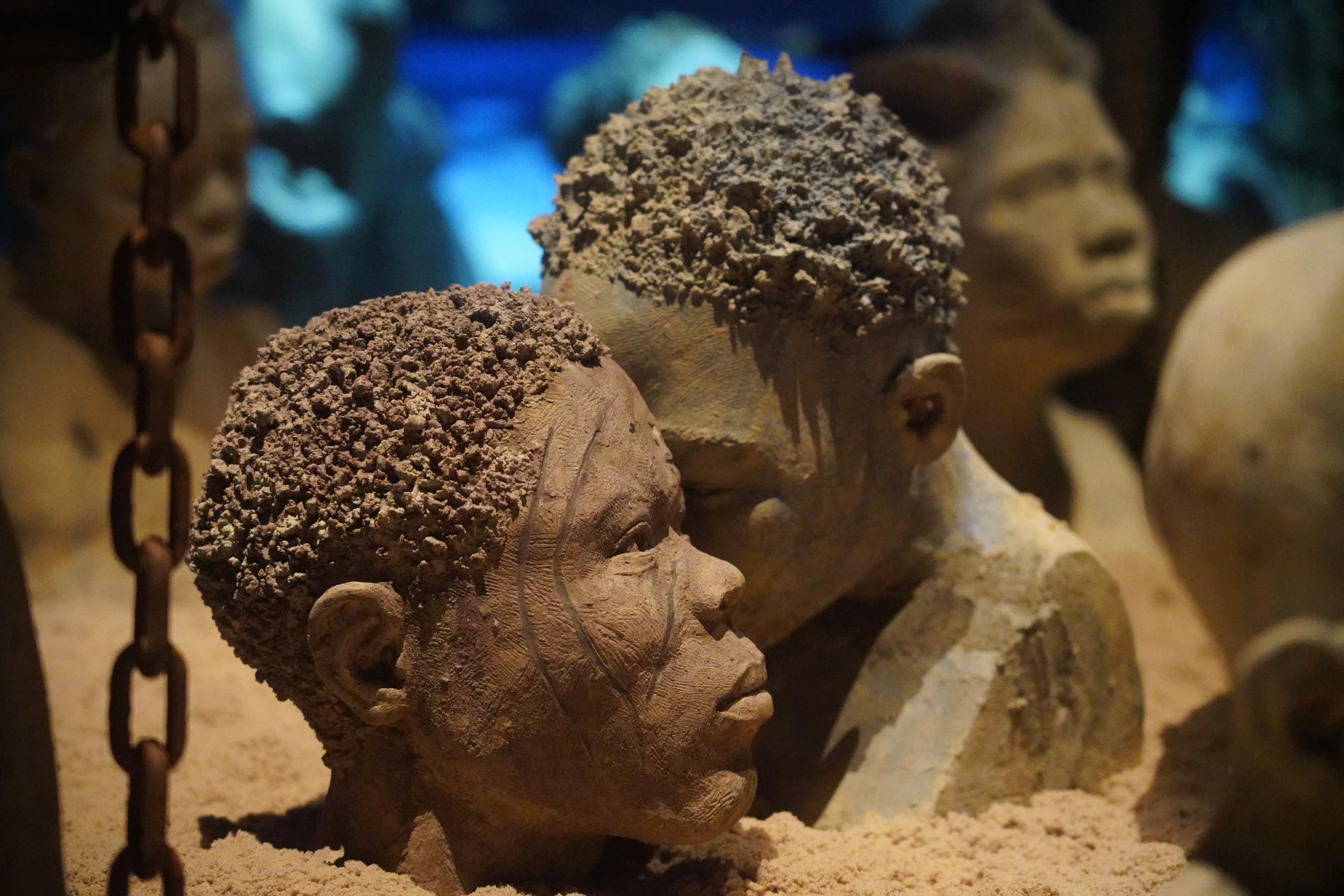
"Table of Contents
- The European Influence on Africa
- The Barbarity of the Middle Passage
- Slavery in the Americas
- New England Trafficking
- A Trafficking-Based Economy
- Industries Reliant on Enslaved Labor
- Laws Limiting Freedom
- The Port of Boston
- Controlling Enslaved People
- Profiting from Trafficking
- After Abolition
- Trading on Wall Street
- Laws Targeting Black People
- An Economy Founded on Slavery
- Post-War Racial Discrimination
- A Hub for Human Trafficking
- Work of Enslaved People
- Separating Families
- Controlling Black People
- A Legacy of Racial Bias
- Tobacco Drives Trafficking
- Legislating Hereditary Enslavement
- Laws Controlling Lives
- The Domestic Slave Trade
- A Trafficking Hub
- An Enslavement-Based Economy
- Suppressing Black Resistance
- Center of the Domestic Slave Trade
- Trafficking for Rice and Indigo
- North Carolina Trafficking
- Resistance to Enslavement
- “Carolina Gold”
- Centrality of African Culture
- Wealth Through Exploitation
- Spanish and French Trafficking
- Enslavement Conditions
- Trafficking Surges in the 18th Century
- Illegal Transatlantic Trafficking
- Trafficking in Savannah
- Urban Enslavement
- “The Weeping Time”
- Legacy of Enslavement
- A City Built on Trafficking
- Brutal Conditions
- Resistance and Violent Response
Chapter 1
Origins

In this Chapter
- The European Influence on Africa
- The Barbarity of the Middle Passage
- Slavery in the Americas
The enslavement of people has been a part of human history for centuries. Slavery and human bondage has taken many forms, including enslaving people as prisoners of war or due to their beliefs,1 but the permanent, hereditary enslavement based on race later adopted in the U.S. was rare before the 15th century.
Many attributes of slavery began to change when European settlers intent on colonizing the Americas used violence and military power to compel forced labor from enslaved people. Indigenous people became the first victims of forced labor and enslavement at the hands of Europeans in the Americas. However, millions of Indigenous people died from disease, famine, war, and harsh labor conditions in the decades that followed.2
Committed to extracting profit from their colonies in the Americas, European powers turned to the African continent. To meet their ever-growing need for labor, they initiated a massive global undertaking that relied on abduction, human trafficking, and racializing enslavement at a scale without precedent in human history. Never before had millions of people been kidnapped and trafficked over such a great distance.
The permanent displacement of 12.5 million African people to a foreign land, with no possibility of ever returning, created an enduring legacy and shaped challenges that remain with us today.3
The European Influence on Africa
Europe had no contact with Sub-Saharan Africa before the Portuguese, seeking wealth and gold, sailed down the western coast of Africa and reached the Gold Coast (modern-day Ghana) in 1471.4 Initially focused on obtaining gold, Portugal established trading relationships and built El Mina Fort to protect its interests in the gold trade.5
The convergence of European powers in Sub-Saharan Africa set in motion a devastating process that fused sophisticated labor exploitation, international commerce, mass enslavement, and an elaborate race-based ideology to create the Transatlantic Slave Trade.6
Over the following decades, the Spanish, English, French, Dutch, Danish, and Swedes began to make contact with Sub-Saharan Africa as well. Portugal soon converted El Mina into a prison for holding kidnapped Africans, and European traffickers built castles, barracoons, and forts on the African coast to support the forced enslavement of abducted Africans.

German and Italian merchants and bankers who did not personally traffic kidnapped Africans nonetheless provided essential funding and insurance to develop the Transatlantic Slave Trade and plantation economy.7 Italian merchants were essential in the effort to extend the sugar plantation system to the Atlantic Islands off the west coast of Africa, like São Tomé, and financial capital from Genoa was instrumental in expanding Portugal’s ability to traffic Africans.8
By the 1600s, every major European power had established trading relationships with Sub-Saharan Africa and was participating in the transportation of kidnapped Africans to the Americas in some way. During this time period, several thousand Africans were kidnapped and trafficked to mainland Europe and the Americas, but the volume of human trafficking soon escalated to horrific proportions.9

An engraving of trafficked Africans arriving in Virginia in 1619.
Hulton Archive/Getty Images
Led again by the Portuguese, European powers began to occupy the Americas in the 1500s. In the 16th and 17th centuries, using land stolen from Indigenous populations in the Americas, Europeans established plantations that relied on enslaved labor to mass produce goods (primarily sugar cane) for trading and sale.10 The cultivation of sugar for mass consumption became a driving force in the growing trafficking of human beings from Africa.11
Europeans initially relied on Indigenous people to supply this labor.12 But mass killings and disease decimated Indigenous populations in what historian David Brion Davis called “the greatest known population loss in human history.”13
The Indigenous population in Mexico plummeted by nearly 90% in 75 years. In Hispaniola (modern-day Haiti and Dominican Republic), the population of Arawak and Taino people fell from between 300,000 and 500,000 in 1492 to fewer than 500 people by 1542, just five decades later.14 Without Indigenous workers, plantation owners in the Americas grew desperate for a new source of exploited labor.15
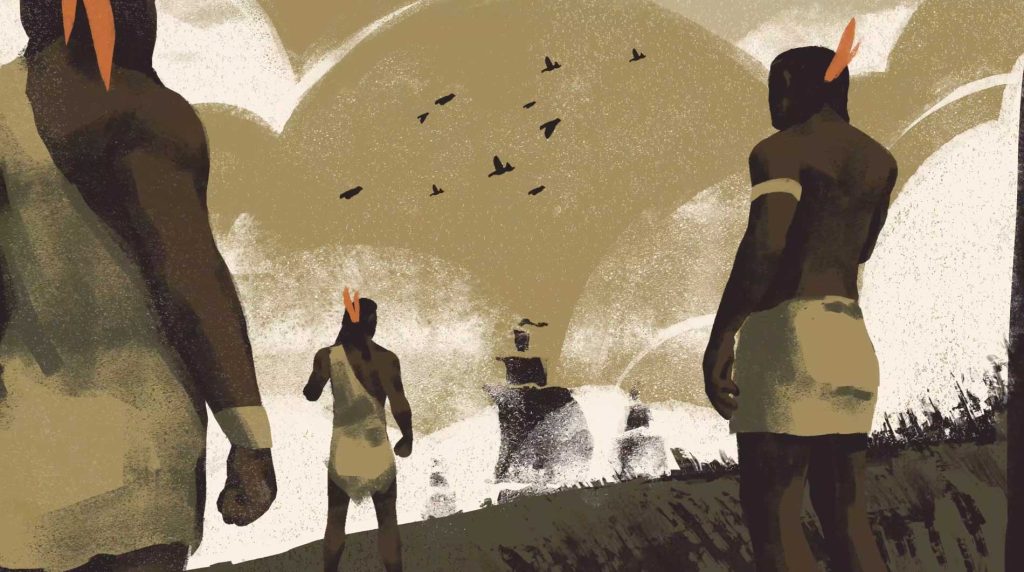
Driven by the desire for wealth, these European powers shifted from acquiring gold and other goods in Sub-Saharan Africa to trafficking in human beings. Over the following centuries, Europeans demanded that millions of Africans be trafficked to work on plantations and in other businesses in the Americas.16
Slavery had existed in Africa prior to this point, but this new commodification of human beings by European powers was entirely unique and it drastically changed the African concept of enslavement.17
Although some African officials and merchants acquired wealth through the export of millions of people, the Transatlantic Slave Trade devastated and de-stabilized societies and economies across Africa. The scale of disruption and violence contributed to long-term conflict and violence on the continent while European powers were able to amass massive financial benefits and global power from this dehumanizing trade.18
The Iberian powers of Spain and Portugal and their colonies in Uruguay and Brazil were responsible for trafficking 99% of the nearly 630,000 kidnapped Africans trafficked from 1501 to 1625.19 Over the next 240 years, England, France, the Netherlands, Scandinavia, the Baltic States, and their colonies joined the Iberians in actively trafficking Africans. Almost 12 million kidnapped Africans were trafficked from 1625 to 1867.20 Ships from Portugal and its colony Brazil alone were responsible for trafficking 5,849,300 kidnapped Africans during this time period.21
Ships originating in Great Britain were responsible for trafficking more than a quarter of all people taken from Africa from 1501 to 1867.22 From 1726 to 1800, British ships were the leading traffickers of kidnapped Africans, responsible for taking more than two million people from Africa.23
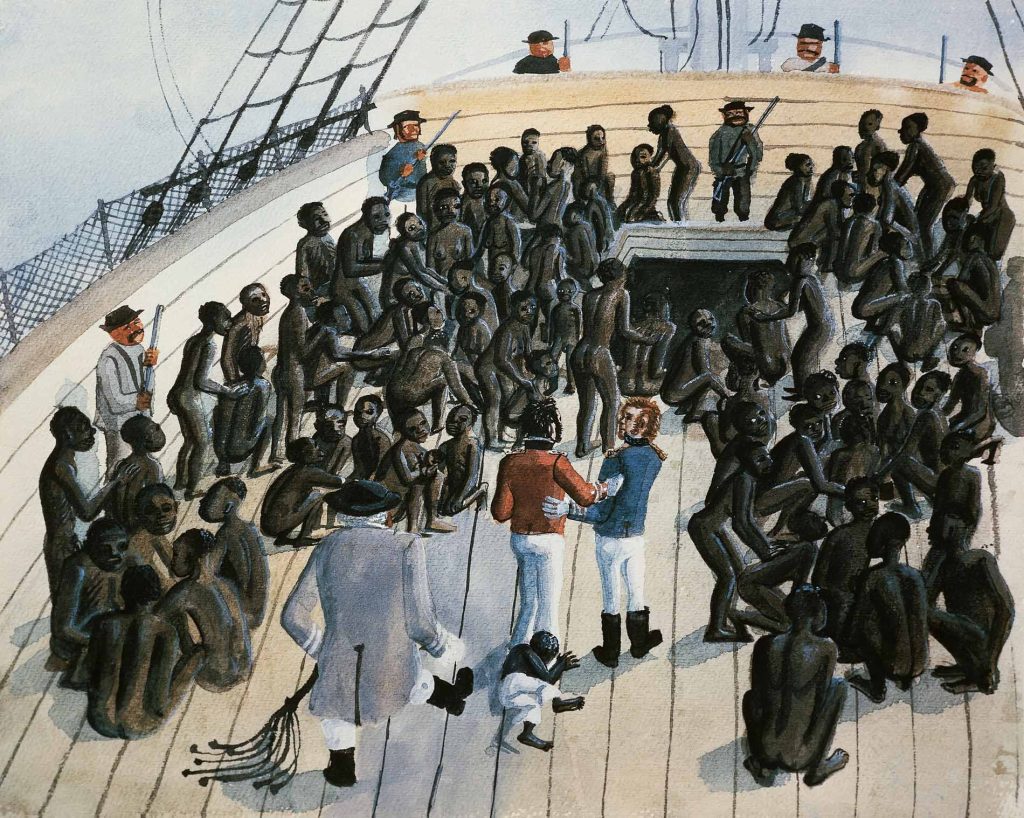
A painting of kidnapped Africans aboard a trafficking ship.
Dea/G. Dagli Orti/Getty Images
From 1626 to 1867, ships from North America were responsible for trafficking at least 305,000 captured people from Africa. In the two years before the U.S. legally ended the international slave trade in 1808, a quarter of all trafficked Africans were carried in ships that flew the U.S. flag.24 Rhode Island’s ports combined to organize voyages responsible for trafficking at least 111,000 kidnapped Africans, making it one of the 15 largest originating ports in the world.25
The Barbarity of the Middle Passage
The horrific conditions of the Middle Passage meant that of more than 12.5 million Africans kidnapped and trafficked through the Transatlantic Slave Trade, only 10.7 million survived the journey.26
Eighty percent of the people who embarked for the Americas between 1500 and 1820 were kidnapped Africans, who far outnumbered European immigrants.27
Almost two million Africans died during the Middle Passage—nearly one million more than all of the Americans who have died in every war fought since 1775 combined.28
Numbers like this can help to quantify the scope of the harm, but they fail to detail the horrific and torturous experience of those who perished and the trauma that 10.7 million Africans who survived the weeks-long journey carried with them.
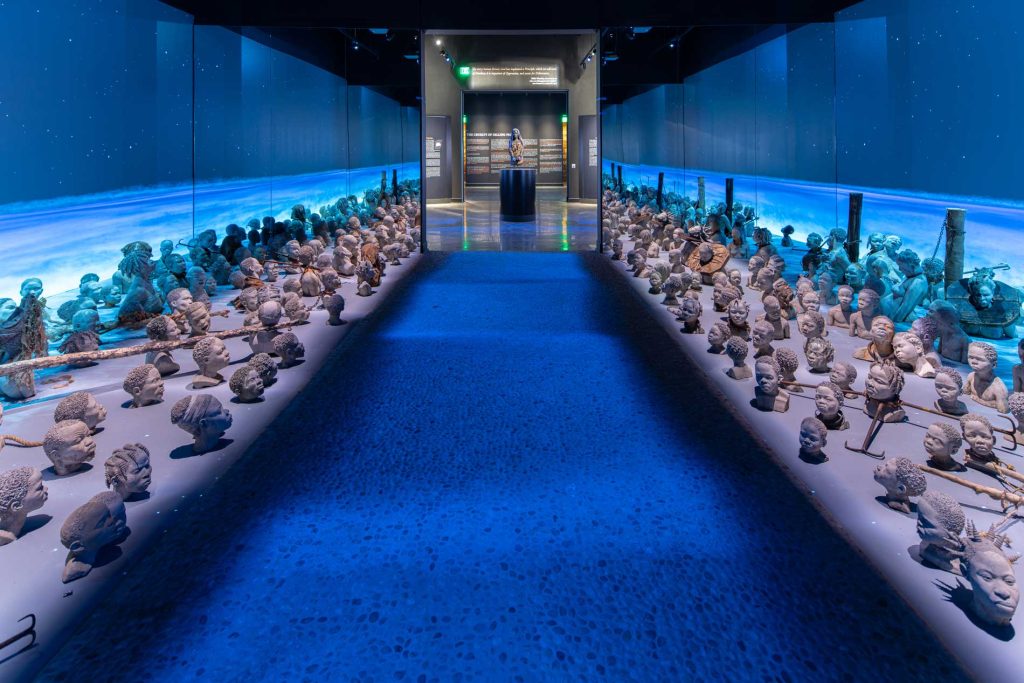
An exhibit at EJI’s Legacy Museum in Montgomery, Alabama, features more than 200 sculptures by Ghanaian sculptor Kwame Akoto-Bamfo memorializing those who died during the Middle Passage.
Human Pictures
Some enslaved people were taken from the coast of West Africa and sold to European slave traders. For most captives the experience of Transatlantic trafficking began weeks, months, or even years before they ever saw the coast. Driven by the increasing external demand from white enslavers and traders, African kidnappers traveled inland and kidnapped people from their villages and towns. In the 18th century, 70% of Africans trafficked in the Transatlantic Slave Trade were free people who had been “snatched from their homes and communities.”29 They were most often forced to walk, bound together in a coffle, for dozens or even hundreds of miles until they reached the coast.30
At the coast, kidnapped Africans were forced into barracoons, slave pens, and dungeons within prison castles to await the ships that would take them across the Atlantic. Kidnapped Africans were forced to board slave trading ships that stayed docked—sometimes for months—until they had loaded enough human cargo to make the passage sufficiently profitable for the enslavers.31 Records do not establish an exact death toll, but scholars estimate the mortality rate among those confined in barracoons and on board docked trading ships “equaled that of Europe’s fourteenth-century Black Death,” which claimed at least 40% of Europe’s population.32
Countless Africans perished before they even began the Middle Passage.33
Ottobah Cugoano was a young child when he was “snatched away from [his] native country, with about eighteen or twenty more boys and girls.”34 The kidnappers brandished “pistols and cutlasses” and threatened to kill the children if they did not come with them.35 For Ottobah and millions like him, the trauma of familial separation would be inflicted repeatedly in the Transatlantic Slave Trade. Ottobah’s “hopes of returning home again were all over”36 as he was marched to the coast and placed in a prison until a white slave trader’s ship arrived three days later. “[I]t was a most horrible scene,” Ottobah later recounted.37
“[T]here was nothing to be heard but the rattling of chains, smacking of whips, and the groans and cries of our fellow-men. Some would not stir from the ground, when they were lashed and beat in the most horrible manner.”
Ottobah Cugoano
“Narrative of the Enslavement of Ottobah Cugoano,” 124.
African captives were forced to undergo invasive and dehumanizing examinations before they boarded enslavers’ ships. Women, men, and children were stripped naked, prodded, and molested to determine if they were “prime slaves” capable of performing hard labor and having children.38

Traders invasively groped the breasts, buttocks, and vaginal areas of women and young girls, allegedly to assess their childbearing ability.39 Men and boys were similarly molested around the groin, scrotum, and anus.40 One white trafficker later testified the process was similar to what he would do to “a horse in this country, if I was about to purchase him.”41
Captives were then assigned a number and loaded onto ships, separated by gender and tightly packed into the holds under conditions that were noxious and extreme. Men were typically “locked spoonways” together, naked and forced to lie in urine, feces, blood, and mucus, with little to no fresh air.42 Alexander Falconbridge, a white surgeon who participated in the slave trade, later testified that captives “had not so much room as a man in his coffin, neither in length or breadth, and it was impossible for them to turn or shift with any degree or ease.”43

An illustration of the Brookes, a British ship used to traffic enslaved people.
Library of Congress
Trafficked Africans were forced to lie chained and manacled for weeks during the journey, unable to stretch out or stand except during limited time on deck. The foul conditions were a breeding ground for disease and vermin; some captives suffocated from the lack of air below deck.44 On some ships, the mortality rate was as high as 33%.45
About 15% of kidnapped Africans—nearly two million people—died during the Middle Passage.
African women and girls suffered similarly horrific conditions in the hold—and they were uniquely terrorized by the crew. Forced to be naked and segregated from the men, they lived in constant fear of being raped or assaulted by white sailors, who subjected them to sexual violence and flogged those who resisted.46
Sexual assault of African women was so commonplace that Alexander Falconbridge later testified that sailors were “permitted to indulge their passions among them at pleasure.”47 Young girls were similarly subjected to violence. One surviving account details the experience of “a little girl of eight to ten years” who was repeatedly raped by a ship’s captain over three consecutive nights.48
White sailors engaged in sexual violence without any fear of consequences or accountability.49
Some African women faced a second level of terror—the inability to protect their small children who were brought on board with them or born during the voyage.50 Many African women were forcibly separated from their infants when they were kidnapped from their homes or when they were sold to white traffickers but some women carried small infants with them. Babies were of little value in the market across the Atlantic, and so abusive sailors used them to manipulate, control, and terrorize their mothers.51 One account details a sailor who “tore the child from the mother, and threw it into the sea” when the newborn would not stop crying.52
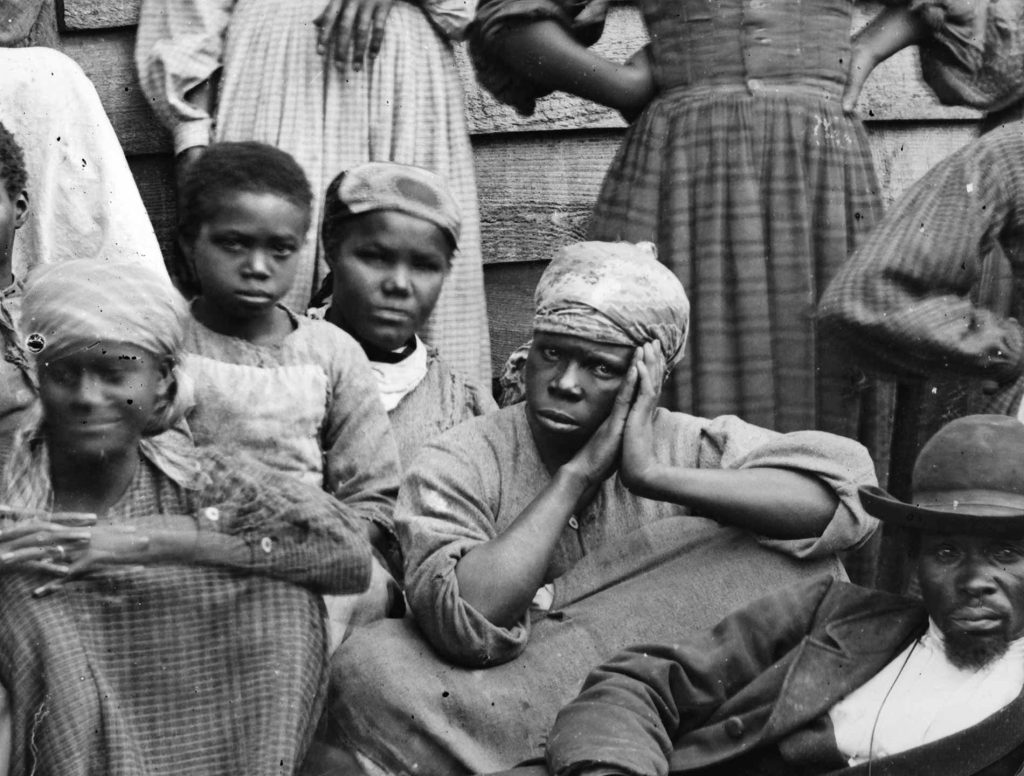
Enslaved women and young girls were systematically subjected to sexual abuse and violence by traffickers and enslavers.
Library of Congress
Another account from a white trafficker reports that a woman and her nine-month-old were purchased and placed onboard a ship. The baby “would not eat,” so the captain “flogged him with a cat o’ nine tails” in front of his mother and other captives on the ship.53 When he noticed that the baby’s feet were swollen, the captain ordered his crew to submerge the baby’s legs in boiling water, causing “the skin and nails [to come] off.”54 The baby still would not eat, so the captain flogged him at each meal time for several days before finally “[tying] a log of mango, either eighteen or twenty inches long, and about twelve or thirteen pound weight, to the child by a string round its neck,” beating the baby again, and dropping the baby to the ground, killing him.55 His mother—powerless to save her baby—was beaten until she agreed to throw her baby’s body overboard. This act of terror was intentionally committed in view of other captives to strike fear and maintain control.56
Cruelty and terrorism were common on trafficking vessels operated by Europeans. Sailors inflicted brutal punishments for even minor offenses as a reminder of their control.57 One account from a white sailor reported that eight to 10 captives were brought to the top deck one night “for making a little noise in the rooms.”58 Sailors were then ordered to “tie them up to the booms [horizontal poles extending from the base of the mast], flog them very severely with a wire cat [a whip with multiple tails of wire], and afterwards clap the thumb-screws upon them, and leave them in that situation till morning.”59 The same sailor said the use of the thumb-screws—a device that crushed fingers via pressure—was so violent and harmful that it resulted in “fevers” and even death on occasion.60
For more serious offenses, sailors inflicted even greater violence. One captive woman who was accused of aiding (but not actively participating) in an attempted revolt against the kidnappers, was strung up on the deck by her thumbs in view of the other captives. As a warning to them, she was flogged and knifed to death.61

An illustration published in an 1833 anti-slavery periodical shows traffickers throwing enslaved people overboard.
Hulton Archive/Getty Images
The threat of being flogged with a cat o’ nine tails [a multi-tailed whip with lashes often tipped with metal or barbs] or placed in the thumb-screws hung over each captive.62Consuming more than their meager allotment of food could lead to whipping and torture.63 Captives were forced onto the deck and made to “dance” for exercise under threat of flogging. As one eyewitness observed, “Even those who had the flux, scurvy, and such edematous swelling in their legs, as made it painful to them to move at all, were compelled to dance by the cat.”64 Failure to eat one’s rations likewise resulted in abuse, whipping, or torture in the thumb-screws until the kidnapped African agreed to eat.65
These excruciating conditions lasted for weeks and sometimes for months. A typical voyage took five or six weeks; some took two or three months.66 Longer voyages led to higher mortality rates among the kidnapped Africans on board.67
When the ships landed in ports across North and South America, the kidnapped Africans who survived the Middle Passage were subjected to a renewed round of examinations and molestation by enslavers before they were sold again and forced to do hard labor that often resulted in their untimely deaths.68 Around 80% of kidnapped Africans transported across the Middle Passage were forced to work on sugar plantations under incredibly dangerous conditions that led to high mortality rates.69
Sidebar
Olaudah Equiano
Read More
Slavery in the Americas
Of the enslaved men, women, and children who survived the Middle Passage, approximately 90% arrived in the Caribbean or South America.82 The Portuguese, Spanish, French, British, and Dutch controlled slavery in the Americas, and each followed different political, legal, and cultural practices.83 Due in part to these differences, the evolution of slavery in the Americas varied across the region, as did the social construction of race and racial hierarchy.
There is no value in comparing the relative “harshness” of slavery across the Americas; the brutality and inhumanity of slavery was universal. Moreover, conditions in the South American and Caribbean colonies were horrific—the vast majority of enslaved people in these colonies worked on sugar plantations, which were notoriously harsh environments. Work on these plantations was “life-consuming,” with long hours of gang labor—often beginning at 5 a.m. and working until dusk—and extremely hazardous work conditions. Plantations in Brazil had higher mortality rates and lower life expectancies than plantations in the U.S.84
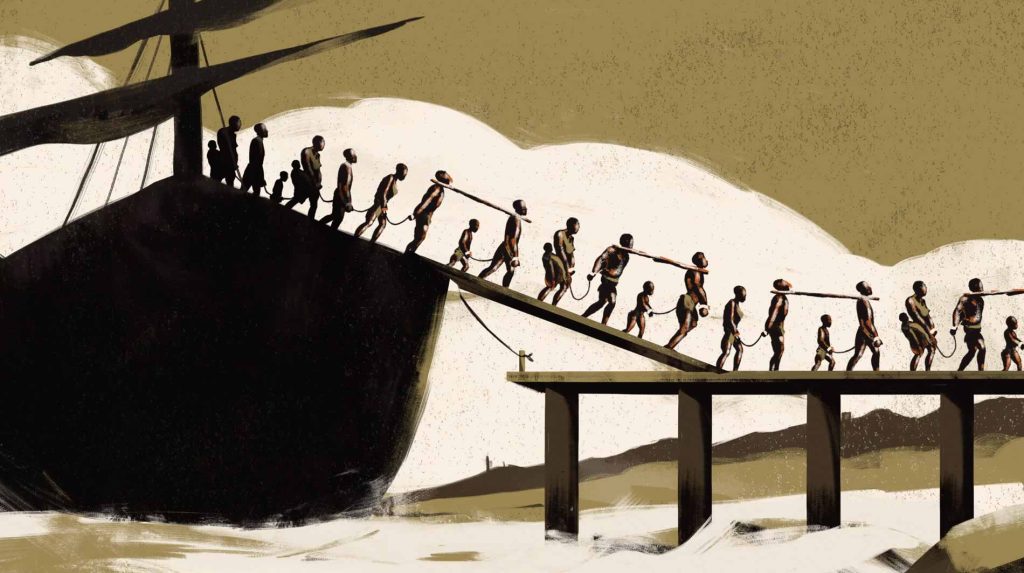
Factors specific to each European power and its colonies distinguished the experiences of enslaved men and women across the Americas. In the North American colonies and later the U.S., white people were in the majority everywhere except in South Carolina and Mississippi.85 But in South America and the Caribbean, nonwhite people regularly exceeded 80% of the population.86
When the Haitian revolution started in August 1791, white Europeans made up just 7% of the population and there were roughly as many free people of color as there were Europeans.87 Iberian control in South America was challenged by the growing number of enslaved people, who often demanded their freedom in exchange for fighting Indigenous people who resisted European colonizers.88 In these colonies, the threat of rebellion against the minority white population was critical in shaping society.
In contrast, the exceptionally large white majority in North America meant that rebellions by enslaved people, while far more common than most people realize today, did not represent as great a threat to white rule.89 As a result, while the fear of rebellions profoundly shaped the legal and cultural landscape of North America,90 British colonists rarely were forced to make legal or political concessions to enslaved people.
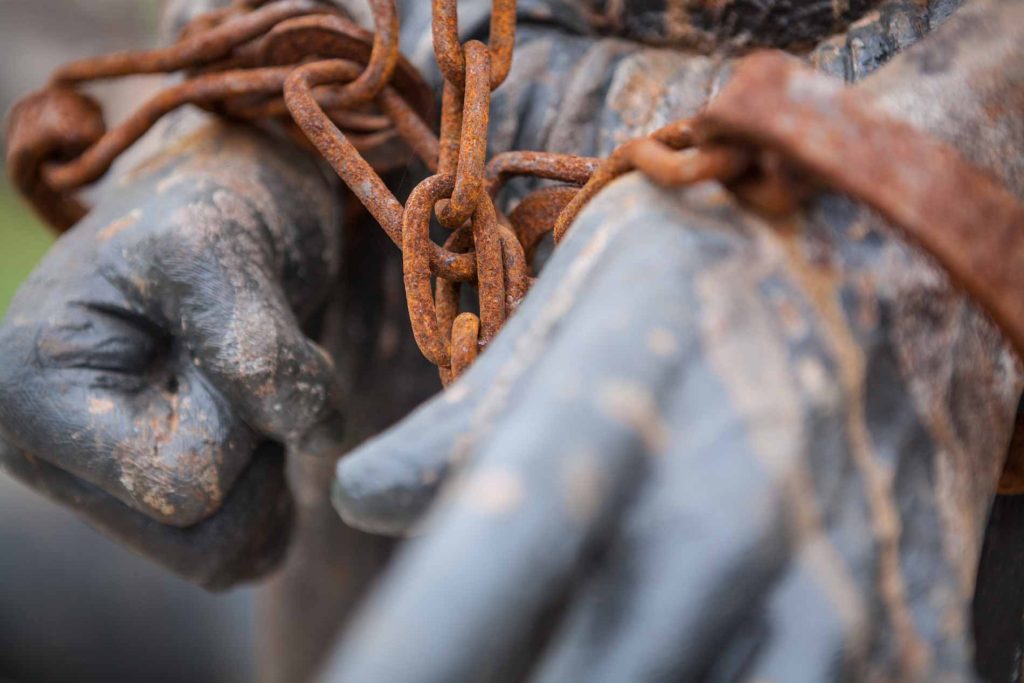
Geographic and demographic variations also distinguished how race and racial hierarchy developed in North America. For example, during the first century of Portuguese colonization in Brazil, there were very few Portuguese or white women,91 which meant that despite anti-miscegenation laws passed in Portugal, there were high rates of interracial sex between white men and women of African descent in Brazil.92 By 1822, more than 70% of Brazil’s population “consisted of blacks or mulattoes, slaves, liberto, and free” people of color.93
Today, Brazil is home to the largest population of African descendants outside the African continent.94
In most South American and Caribbean colonies, large populations of free people of color emerged and “elaborate human taxonomies” based on race and caste were developed.95 A different racial hierarchy evolved in North America, where free people of color represented a very small fraction of the population.96 There, a single, rigid color line separated two racial groups: Black and white.97
Finally, the legal codes that governed enslaved peoples’ lives—laws on manumission, the status of enslaved people as humans or property, marriage and family formation, and racial classification—varied by region and the colony.98 These laws demonstrate the complex racial hierarchies in the region.
Throughout the region, racial discrimination was codified in laws that barred free Black people from “hold[ing] political office, practic[ing] prestigious professions (public notary, lawyer, surgeon, pharmacist, smelter) or enjoy[ing] equal social status with whites.”99 But in 1795, the Spanish Crown made it possible to purchase whiteness—people of color with mixed ancestry could “apply and pay for a decree” that converted their legal status to white.100 These laws sparked “vigorous and serious debate concerning the civil rights of those of mixed descent” in some countries. The 1812 constitution of the Spanish Empire further expanded opportunities for mixed-race citizens, including desegregating universities a century and a half before the U.S.101
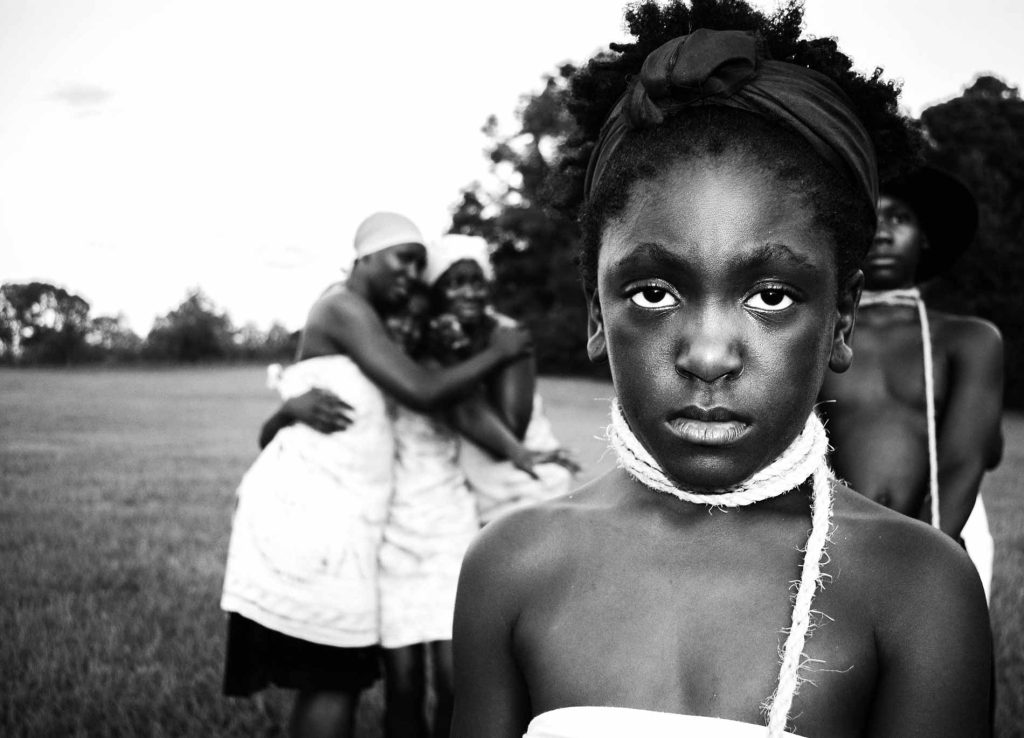
In French colonies, the “Code Noir” passed by Louis XIV in 1685 shaped an entirely different landscape. The code mandated execution for an enslaved person who struck their enslaver,102 but it also granted free people of color the same rights as any “persons born free,”103 prohibited enslaved parents from being sold separately from their children,104 deemed free the child of a free woman and an enslaved man of color,105 and fined an enslaver who had a child with an enslaved woman unless he married and freed the woman and her child.106
Critically, under the Code Noir, free people of color dramatically increased their numbers. In Louisiana, which spent decades under French control, there were 18,647 free Black people by 1860—almost 3,000 more than in South Carolina, Georgia, Alabama, and Mississippi combined.107
The British and their descendants in North America made race the central aspect of laws governing slavery and the lives of enslaved and free Black Americans.108 A stark “black-white binary” reflected and reinforced the centrality of race in all areas of American life.109
As a result, while the particular experience of slavery depended on region and time period, enslavement in the U.S. became a rigid, racialized caste system that inexorably tied enslavement to race.
The system of enslavement that emerged in North America was legitimated by an elaborate set of laws enforced through terror and violence and used to justify and codify the permanent, hereditary, and unending slavery of Black people for generations.
From the first arrival of kidnapped Africans in the English colonies that would become the United States, the institution of enslavement was foundational to the economy of every major city on the Eastern Seaboard. The history of these regions cannot be fully understood without acknowledging the role enslavement played in creating their economies, laws, and political and cultural institutions and the innumerable ways this legacy shapes these communities today.
Sidebar
The Role of the Christian Church
Read More
Chapter 2
New England
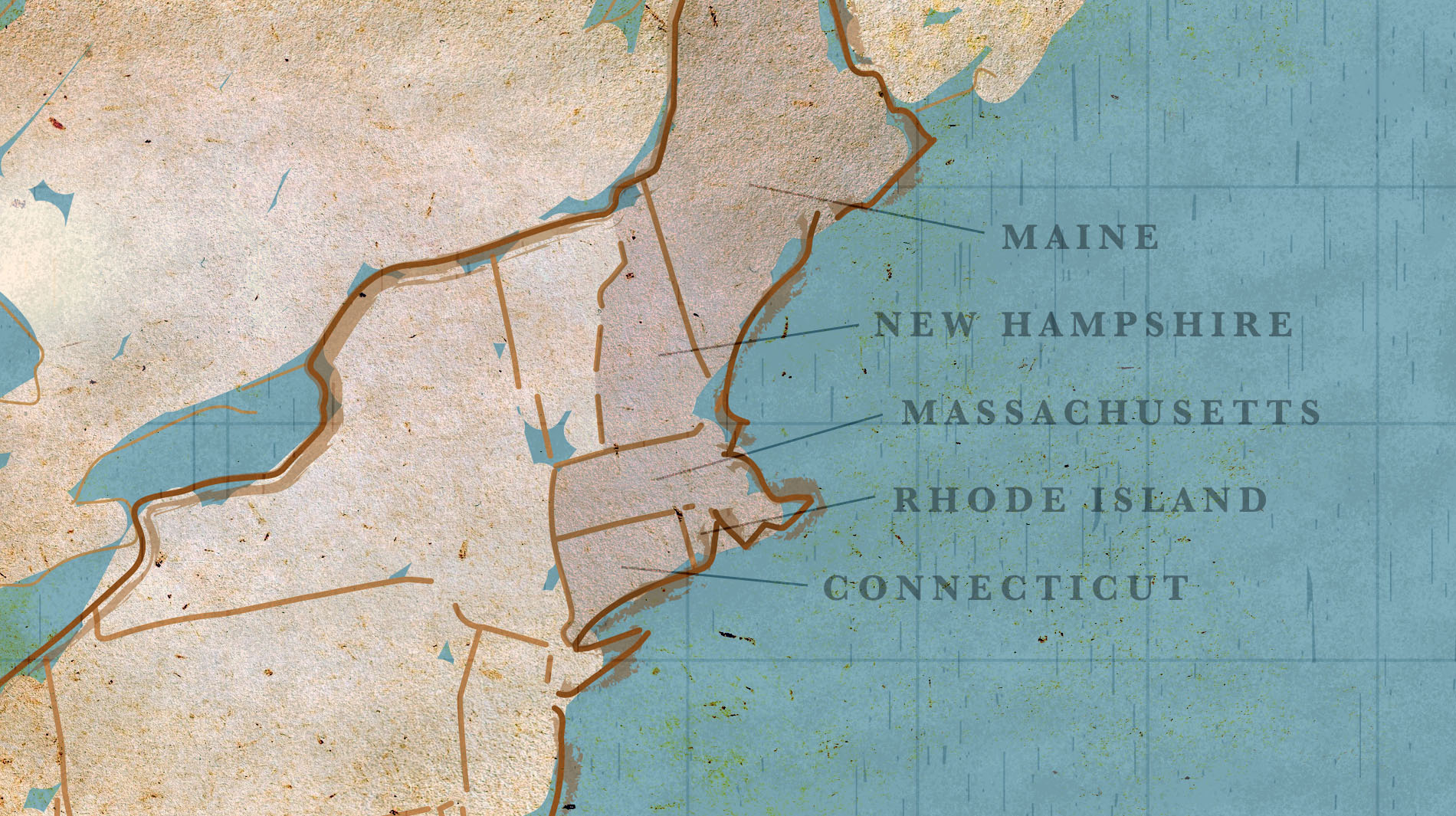
In this Chapter
- New England Trafficking
- A Trafficking-Based Economy
- Industries Reliant on Enslaved Labor
- Laws Limiting Freedom
By 1638, English colonizers in New England had killed or enslaved more than 1,500 Pequot men, women, and children.120 Pequot Indians who survived were forced to work in New England or were shipped to the West Indies and exchanged for kidnapped Africans, marking New England’s first involvement in the Transatlantic Slave Trade.121
Recognizing the enormous wealth that could be gained from trafficking enslaved people, colonists began trafficking kidnapped African men, women, and children to Massachusetts (which included present-day Maine) as early as 1638,122 to Rhode Island after 1638, to New Hampshire by 1645,123 and to Connecticut by 1660.124
In 1641, Massachusetts became the first North American colony to formally legalize slavery.125 By 1670, the enslavement of Black people in Massachusetts was codified as a hereditary and permanent legal status—a model later adopted by other New England colonies.126
Whole regional economies were built around the slave trade, generating enormous wealth for generations of white New Englanders, who established a narrative of racial difference that deemed Black people subhuman.127 Even after some called for abolition of the Transatlantic Slave Trade and steps were taken toward “gradual emancipation,” white New Englanders remained committed to the system of slavery that sustained their local, regional, and international economies. Enslavement remained legal in parts of New England well into the 1840s.128
New England’s burgeoning economy revolved around the Transatlantic Slave Trade, as each industry—from rum production and fisheries to produce and shipbuilding, and later, insurance and manufacturing—was fueled by human trafficking.
Every colony in New England produced and shipped goods to plantations in the West Indies in exchange for more abducted Africans.129 Connecticut merchants sold cattle, codfish, onions, wheat, and potatoes to Caribbean plantation owners,130 while Maine, Massachusetts, and Rhode Island merchants exported fish to the Caribbean as part of a global trade that sustained plantation life and generated enormous profits for white colonists.131
New England Trafficking
As the Transatlantic Slave Trade grew into a massive international enterprise, New England docks became increasingly crucial for traffickers. At least 314 trafficking voyages carrying nearly 45,000 kidnapped Africans landed or ended in New England ports between 1678 to 1807, and at least 5,000 Africans kidnapped and trafficked in those voyages were enslaved in New England.132
New England ports were also the originating points of Transatlantic voyages. From 1645 until 1860, at least 1,170 ships departed from New England en route to Africa, where at least 148,659 kidnapped African women, men, and children were packed into their cargo holds.133
New Englanders profited from the kidnapping and trafficking of African people around the world.134
The business of buying and selling Black people was not limited to large firms, but was pervasive among New England business owners, who purchased shares in Transatlantic voyages.135
In Rhode Island alone, at least 700 individuals owned or captained ships carrying enslaved people.136 Indeed, about half of all voyages originating in North America departed from ports in Rhode Island, making it the most prominent organizing port in North America and one of the top 15 in the world.137 More than half of these Rhode Island ships sold enslaved people in the Caribbean; the rest sold enslaved people in South Carolina and other North American markets.138

A sculpture by Ghanaian sculptor Kwame Akoto-Bamfo at the Legacy Museum in Montgomery, Alabama.
Bryan G. Stevenson
Transatlantic voyages ending in New England were long, tortuous journeys that often resulted in death. From 1678 to 1807, at least 5,700 kidnapped Africans died on voyages that ended in New England.139
During a 1719 voyage leaving Antigua and destined for Kittery, Maine, four of the five kidnapped Africans aboard died, possibly due to insufficient clothing during cold spring months. The sole surviving woman died three weeks later.140
In 1789, on The Polly, a Rhode Island-based ship bound for Havana from present-day Ghana, human trafficker James D’Wolf murdered an enslaved woman who he believed had smallpox by blindfolding her, tying her to a chair, and throwing her overboard.141According to his crew, he “lamented only the lost chair.”142 D’Wolf went on to serve in the Senate.143
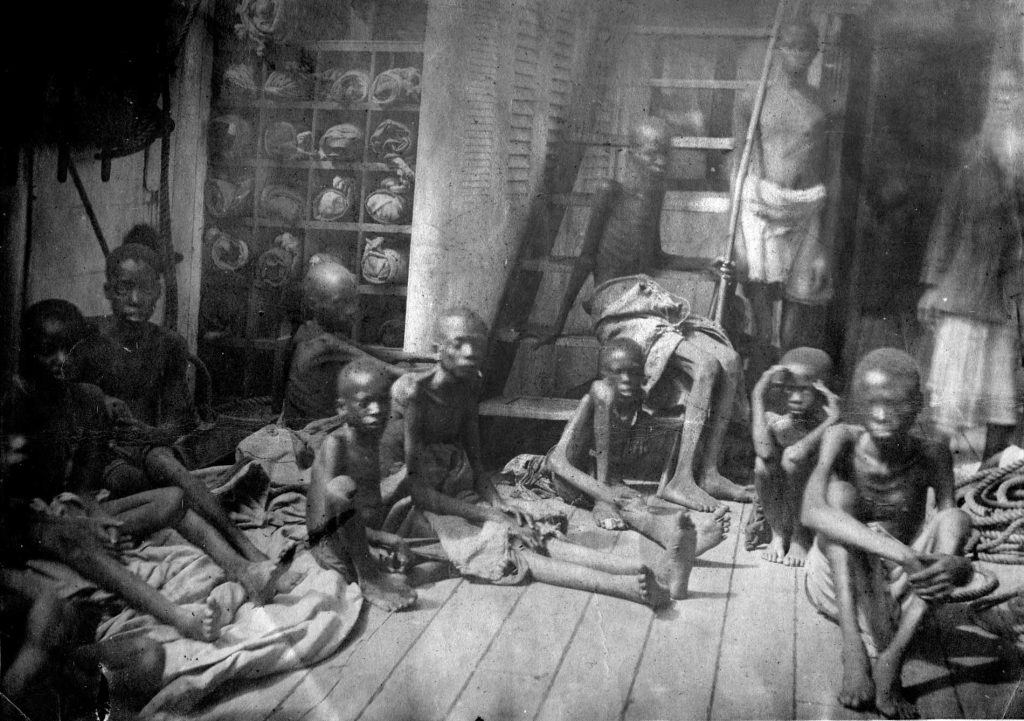
A group of enslaved people, nearly starved to death, who were rescued from a trafficking ship.
The National Archives of the UK: ref. F084/1310
A Trafficking-Based Economy
As the Transatlantic Slave Trade grew, the buying and selling of kidnapped Africans—and the exploitation of their labor—formed the backbone of a growing New England economy.
In what became known as the “Triangle Trade,”144 New England traders imported sugar and molasses produced by enslaved people on Caribbean plantations and manufactured rum that they shipped to West Africa, where it was exchanged for enslaved Africans, who were sold to Caribbean plantations for more sugar.145 Rhode Island and Massachusetts built the largest distilleries in the colonies. Rum production became New England’s biggest manufacturing business until the American Revolution.146
New England politicians harnessed the enormous profits from trafficking enslaved people for state-building projects.
Massachusetts and Rhode Island built infrastructure that remains today with tax revenue collected from traffickers for each person they kidnapped and brought to the colonies through 1732.147 New Hampshire and other colonies declined to impose taxes on traffickers in order to lure more ships to their ports, resulting in growing trade, the exploitation of more Black labor, and the development of regional wealth.148
Kidnapped Africans who survived the journey to New England were sold into slavery at auctions on board the ships in which they were trafficked, in private homes, taverns, and public meeting houses.149
The lucrative buying and selling of kidnapped Africans, supported by a legal architecture that made slavery hereditary and permanent, allowed enslavement to flourish.
Some enslaved African people learned highly skilled trades, but were allowed no choice over when to utilize their valuable knowledge and were prevented from earning money to support themselves or their families.150
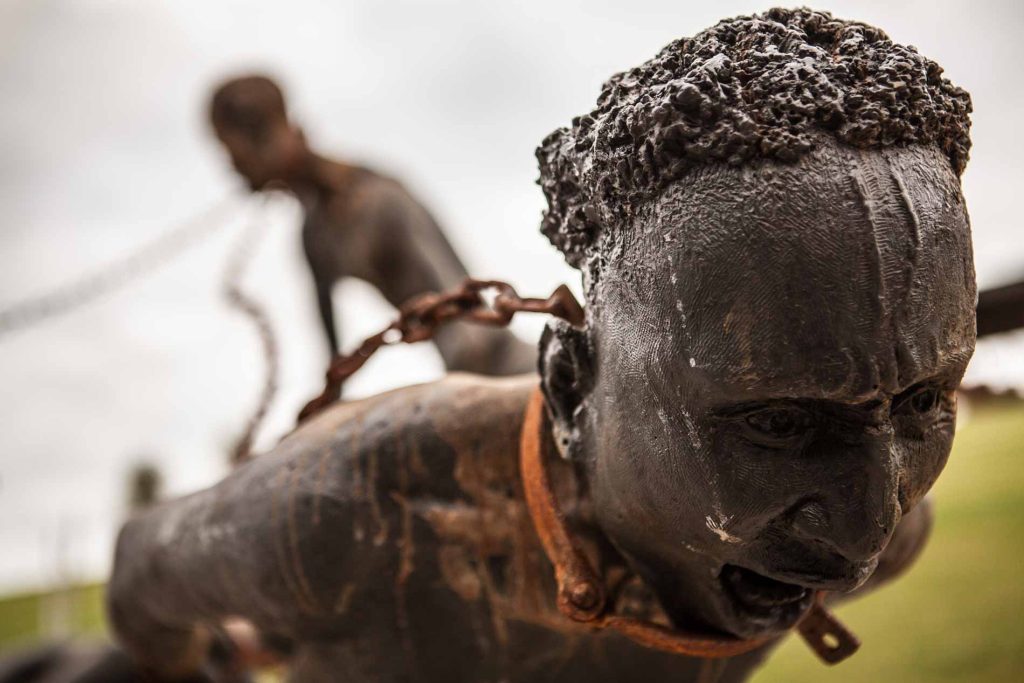
A sculpture by Kwame Akoto-Bamfo at the National Memorial for Peace and Justice in Montgomery, Alabama.
Human Pictures
Family separation was common in New England, despite Puritan family values. A Massachusetts newspaper in 1782 advertised a 19-year-old enslaved Black woman and her six-month-old baby for sale either “together or apart.”151 Enslaved people in New England were often made to live in the homes of their enslavers and work alongside their enslavers in local industries where they were under constant surveillance.152
By the start of the Revolutionary War, one in four estates in Connecticut enslaved at least one Black person.153
Despite widespread narratives advanced by New Englanders who claimed their type of slavery was based on the belief that “slaves were considered part of their [enslaver’s] family,” racial hierarchy and violence were dominating features of enslavement in New England.154
A Connecticut newspaper in 1774 advertised the sale of a 14-year-old “Negro Boy” who “has one of his little toes cut off, and a dent in his forehead.”155 In New Hampshire, an advertisement read: “Ran-away…a NEGRO Servant named Neptune, of about 25 Years of age…his under Jaw has been broken, so that he can’t open his Jaws; and one of his great Toes has been cut off.”156
Industries Reliant on Enslaved Labor
In the 1800s, New Englanders found new ways to profit from the exploited labor of enslaved people, including a textile industry that relied on cotton harvested by enslaved labor on plantations in the American South and the West Indies.157 Nearly 300 textile mills opened in Rhode Island between 1790 and 1860.158
By 1860, 67% of the cotton milled in the U.S. was milled in New England, and Massachusetts mills operated 30% of the spindles in use at the time.159
Connecticut dominated New England’s insurance industry, which insured human property for enslavers around the country until the 1850s. Insurance companies based in Newport, Hartford, and New London issued policies to enslavers and shipowners that promised to pay enslavers hundreds of dollars for each enslaved person who died onboard or while performing grueling labor.160

An 1847 ad placed by Nautilus Mutual Life Insurance (later renamed New York Life Insurance) offering insurance policies on enslaved people.”
The Daily Democrat
This financial scheme incentivized the killing of Black people. In 1781, shipowners murdered 133 kidnapped Africans by throwing them overboard the Zong so they could collect the insurance.161
From their founding, companies like Charter Oak Life Insurance Company, New York Life (called Nautilus Insurance Company in the 1840s), and Aetna Inc. in Connecticut profited from the slave trade by selling policies to traffickers.162
Laws Limiting Freedom
Some New Englanders called for the “gradual emancipation” of enslaved people, passing laws that freed no one immediately while still preserving the racial hierarchy.163Under Connecticut’s Gradual Emancipation Act of 1784, enslaved people remained enslaved for life, while their children and grandchildren remained enslaved until their 20s.164 It was not until 1848 that Connecticut formally abolished slavery.165
There were also calls for abolition of the Transatlantic Slave Trade in the late 18th century, but legislation limiting the slave trade was largely ignored and perpetrators were rarely convicted.166
Federal laws passed in 1794 and 1800 barred citizens from “owning, outfitting, investing in, or serving aboard ships” that carried enslaved people to ports outside the U.S.—and white New Englanders violated them both.167
Nearly half of enslaved people transported to Rhode Island were trafficked illegally in violation of state and federal statutes, but most of the 22 illegal trafficking cases prosecuted in Rhode Island ended in acquittal.168
Thus, trafficking of enslaved people in New England continued even after Congress formally abolished the Transatlantic Slave Trade in 1807.169
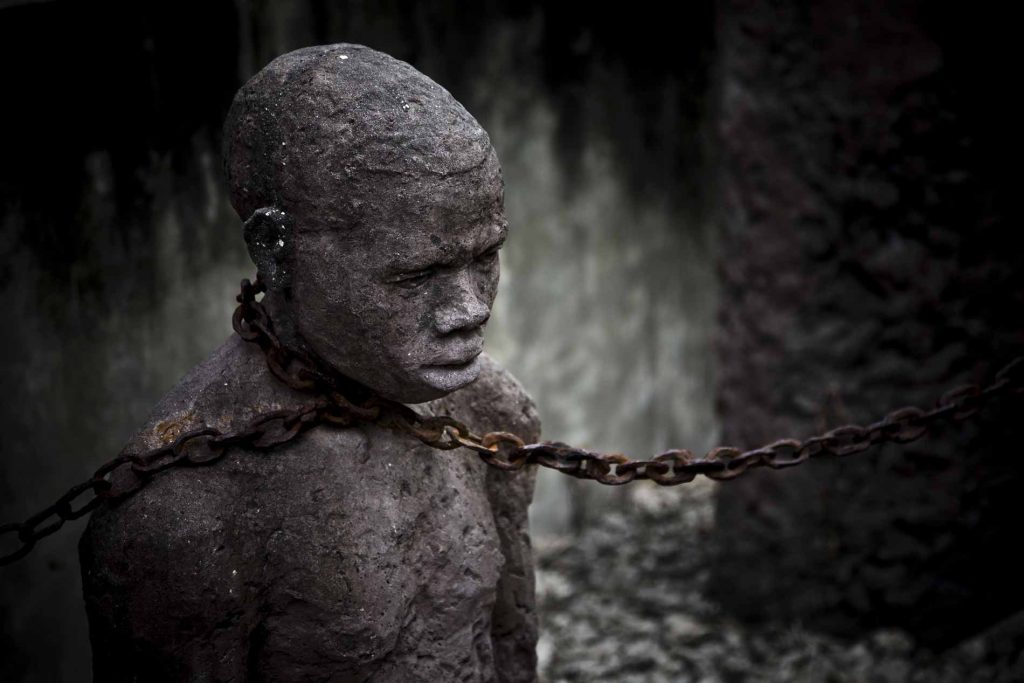
A sculpture from Memory of Slaves, a monument to enslaved people in Stone Town on the island of Zanzibar in Tanzania.
Elena Niccolai
All the while, racial terror dominated.
Free Black people in New England were subjected to curfews, discrimination, Black Codes, bans on interracial marriage, and frequent violence from white citizens.170
In 1824, white community members in Providence, Rhode Island, destroyed nearly every home and business in a Black neighborhood after a group of Black residents failed to step off the sidewalk to let a group of white people pass.171
The narrative of racial difference that justified the trafficking of Black people that propagated the growth of New England industries persisted long after New Englanders joined their fellow colonists to declare that “all men are created equal.” Indeed, white New Englanders remained committed to white supremacy long after the abolition of the Transatlantic Slave Trade and the end of slavery in the U.S.172
Chapter 3
Boston, Massachusetts
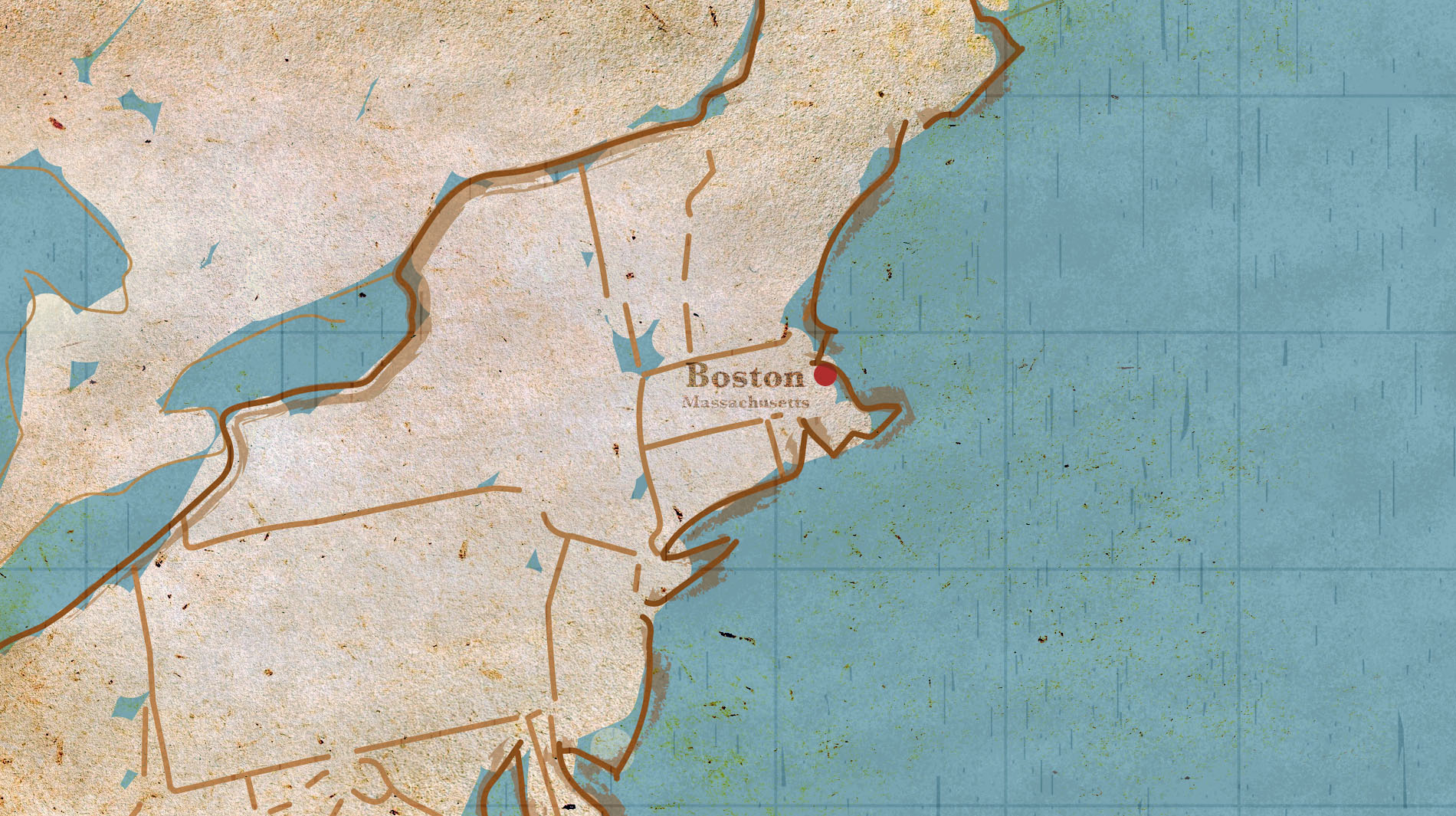
In this Chapter
- The Port of Boston
- Controlling Enslaved People
- Profiting from Trafficking
- After Abolition
Massachusetts was the first colony in New England to formally authorize the enslavement of kidnapped Africans and slavery remained legal for over 140 years before it was gradually abolished in 1783.173
Boston’s wealthy white elite were at the center of the lucrative enslavement-based economy, directly enslaving Black people and profiting from Boston’s role in the Transatlantic Slave Trade.
Boston traders, investors, and businesspeople were responsible for at least 307 separate trafficking voyages. Boston served both as the origin port for outbound ships en route to the coast of Africa to capture and kidnap woman, men, and children and as a final trafficking destination for the sale of enslaved Africans.174
Watch: Boston was a major port in the Transatlantic Slave Trade.
The Port of Boston
In 1638, Boston’s first documented trafficking ship departed from Boston for Bermuda.175 Enslavers aboard the Boston-built Desire trafficked Indigenous people they had abducted from the Massachusetts area, sold them into slavery in the Caribbean, and returned with kidnapped Africans—establishing early slave trading routes just eight years after the colony’s founding.176 In this “Intra-American” trade, Africans kidnapped and taken to the West Indies were trafficked to Boston, where they were sold into slavery.177
Boston was a major site of trafficking and suffering where at least 2,400 kidnapped people arrived directly from Africa.178
The city’s involvement in the Transatlantic Slave Trade peaked between 1760 and 1775—the same period when Bostonians were staging dramatic protests and escalating their demands for “freedom” and “independence”—when at least 95 voyages departed from or disembarked in Boston, many traveling to or leaving directly from Africa.179
Even after gradual abolition in Massachusetts outlawed the enslavement of Black people, Boston shipbuilders, traders, and businessmen continued to grow wealthy from human trafficking. Boston traders illegally trafficked African women, men, and children for decades after Congress abolished the Transatlantic Slave Trade in 1807. As late as 1858, traffickers aboard the Crimea departed from Boston to Africa, where they kidnapped 600 people from the mouth of the Congo River and sold them in Guanimar, Cuba.180
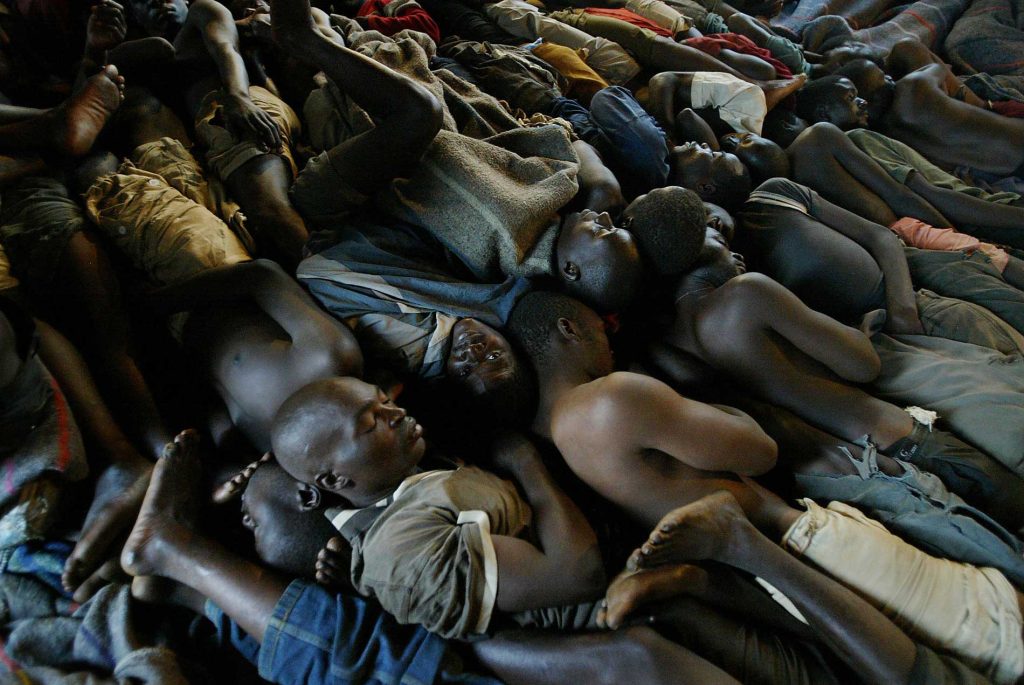
Imprisoned men at Maula Prison in Malawi who were forced to sleep “like the enslaved on a slave ship.”
Joao Silva/The New York Times/Redux
Traffickers routinely murdered, kidnapped, and tortured Black people on the coast of Africa and during the harrowing Middle Passage to Boston.
In 1645, the Boston-based captain and crew aboard the Rainbow reportedly “joined with London slave raiders in an attack upon an African village, killing about one hundred persons and wounding others.”181 When details of the raid emerged in a Massachusetts court, the court ordered that the two African men brought to Boston aboard the Rainbow be returned to Africa—and ordered that the captain receive compensation for his lost “cargo.”182
Boston traders instructed their captains to inspect the Black people they kidnapped to “take care that they are young & healthy, without any defects in their Limbs, Teeth & Eyes, & as few females as possible.”183 But conditions during the trafficking journey to Boston were so horrific that kidnapped women, men, and children often arrived barely alive.
The business of trafficking was gruesome and brutal. Kidnapped Africans were forced below deck and the men were kept in irons for the entire voyage.184 Phillis Wheatley, a renowned poet, enslaved woman, and native of Gambia who was trafficked to Boston in 1761 as a seven-year-old, arrived in Boston gravely ill and nearly naked, with “no other covering than a quantity of dirty carpet about her.”185
Wealth created by involvement in the Transatlantic Slave Trade and its related industries—rum, timber, shipbuilding, fisheries, and agriculture—formed the bedrock of Boston’s economy.
In addition to the profits from the trafficking of humans, merchants and businessmen made fortunes from trading raw goods produced by enslaved people.186
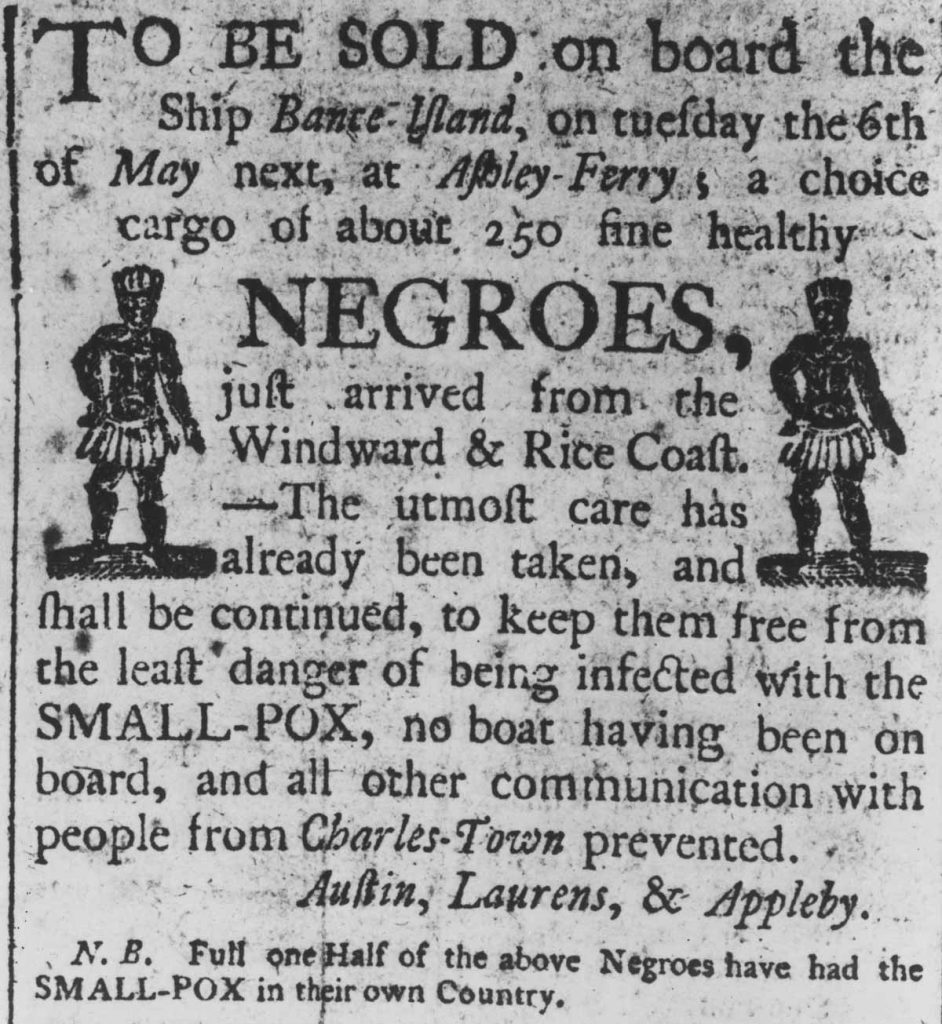
An advertisement for the sale of roughly 250 enslaved people trafficked into Boston on the Bante Island ship, ca. 1700.
MPI/Getty Images
Even after slavery was abolished in Massachusetts, Boston traders flourished by exporting fish, timber, and other supplies that plantations in the Caribbean needed to operate and expand.187
The Boston area became a major producer of rum, which required a steady supply of molasses harvested and refined by enslaved people in the West Indies under conditions infamous for their brutality.188
“The Commerce of the West India Islands, is a Part of the American System of Commerce,” John Adams wrote in 1783, 14 years before he was elected president. “They can neither do without Us nor We without them.”189
Between 1768 and 1772, Massachusetts imported 8.2 million gallons of molasses from the West Indies, and its 63 distilleries produced millions of gallons of rum, mostly for export and to trade for enslaved people.190
Controlling Enslaved People
As the enslaved Black population grew, white Bostonians passed increasingly restrictive regulations to control and socially subordinate enslaved Black people and ensure maximum segregation between Black and white communities.

Illustration of the Boston seaport, ca. 1760.
Library of Congress
By 1754, enslaved Black people comprised 10% of Boston’s population.191 Nearly a quarter of all estates probated between 1700 and 1775 listed enslaved people as property.192
One author observed that slavery in Boston was so pervasive in the 18th century that “there is no house in Boston, however small may be its means, that has not one or two [enslaved Black people].”193
To maintain a strict racial hierarchy, Massachusetts prohibited interracial sex and marriage in 1706.194 The law provided that any enslaved Black person who engaged in sexual relations with a white person must be sold and forced to leave the state. That meant Black people who were raped by their enslavers could be forcibly sold away from their families under state law.195
Profiting from Trafficking
In the 19th century, Bostonians invested their profits from the Transatlantic Slave Trade in new manufacturing industries like textiles, which Senator Charles Sumner described as an “unhallowed alliance between the lords of the lash and the lords of the loom.”196
Indeed, not only were large textile manufacturers started with capital reaped from the slave trade, but they also supported enslavement in the South by offering plantation owners a growing market for their products. Francis Cabot Lowell, who used profits from the slave trade to start Boston Manufacturing Company, drove an ever-increasing demand for cotton produced by enslaved Black people when he introduced innovations like the power loom and expanded his textile empire throughout Massachusetts.197
Boston’s most prominent higher education institutions also were enriched by gains from slavery and the Transatlantic Slave Trade.
The first president of the Massachusetts Institute of Technology (MIT) enslaved eight Black people in his lifetime.198 Tufts University is on the site of a plantation where at least 27 enslaved Black men and women labored.199

The Royall House on the Royall Plantation in Medford, Massachusetts, where dozens of men and women were enslaved.
Cody O'Loughlin/The New York Times
Harvard University routinely employed professors and administrators who were enslavers and traffickers and relied on enslaved people to cook and clean for students.200
Harvard’s first professorship of law was funded by a bequest from Isaac Royall Jr., the son of one of the largest enslavers in Massachusetts. After his father left him the fortune he had made operating sugar plantations with the enslaved workers he traded between Boston and Antigua, Royall also gifted several properties to Harvard.201
After Abolition
Slavery was abolished earlier in Boston than in much of the U.S., but white Bostonians subjected free Black people to virulent racism, racially discriminatory laws, and strictly enforced racial segregation.202
Even those who advocated for nationwide abolition intended to maintain the racial hierarchy. Renowned Boston abolitionist Theodore Parker celebrated white superiority, saying in a 1857 speech that “the Anglo-Saxon people…is the best specimen of mankind which has ever attained great power in the world.”203
Other prominent Boston thinkers developed “scientific” theories of Black inferiority.
In the 1850s, Harvard professor Louis Agassiz theorized “that the story of Adam applied to only white people and that God had created other races to fit different climates, regions, and ecosystems in the world.” This theory of “polygenesis” helped entrench white supremacy among academics and scientists.204
Harvard professor Nathaniel Shaler argued against interracial marriage in the 1890s and later stated that Black children had an “animal nature” that would emerge as they grew up.205
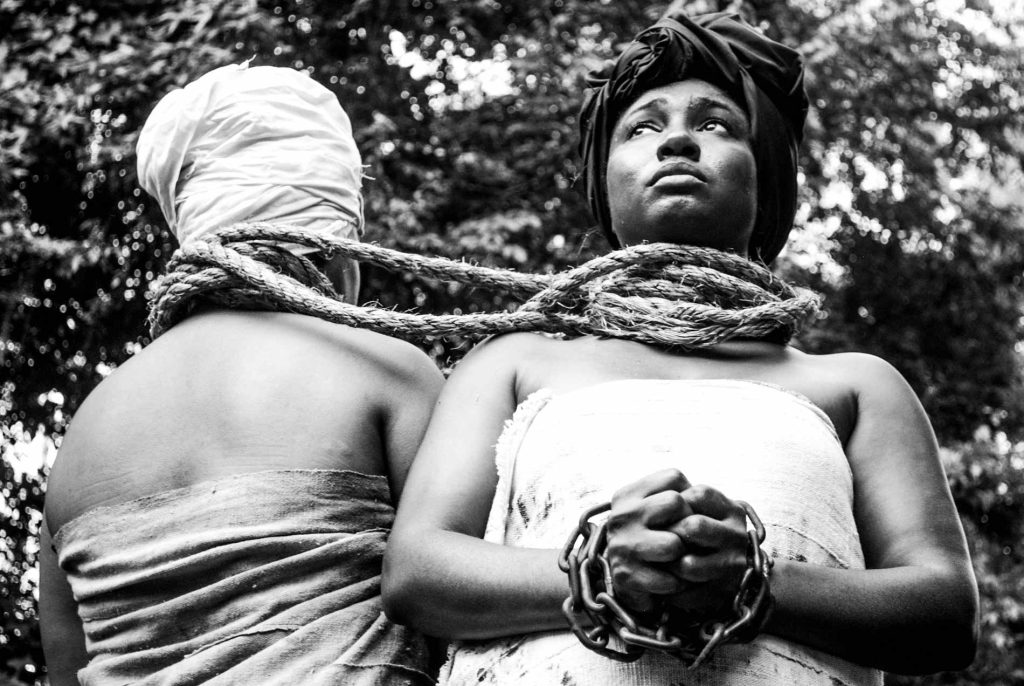
To protect the racial hierarchy, Black Bostonians were denied full citizenship rights. They were not allowed to vote or sit on juries, and were frequently humiliated by racist displays in popular culture.206 They were also forced to live with the very real threat that they could be abducted, transported to a state or country where slavery remained legal, and enslaved.207
After abolition, Black people in Boston faced more than a century of court-enforced discrimination in housing and education.
Restrictive racial covenants and intimidation prevented Black families from renting and buying homes. In 1935, 100 Black families were evicted from present-day Cambridge to make way for an all-white neighborhood, and after World War II, Boston built 25 public housing projects that were segregated by race.208
Racial segregation permeated the city’s schools as well. Between 1933 and 1943, only six Black students graduated from Boston College, and in the 1950s, more than 80% of Boston’s Black elementary school students attended majority-Black schools.209
Calls to implement busing to desegregate Boston’s school system in the 1970s were met with massive, violent protests by white parents, who pulled 30,000 children out of the public school system.210 Today, only about 14% of public school students are white in a city that is about 45% white.211
Racial hierarchy and economic inequality between Black and white Bostonians have deep roots in the Transatlantic Slave Trade that persist in the city to this day.
Chapter 4
New York, New York

In this Chapter
- Trading on Wall Street
- Laws Targeting Black People
- An Economy Founded on Slavery
- Post-War Racial Discrimination
Enslavement is a defining feature of New York City’s origin story. New York City was a critical port in the Transatlantic Slave Trade, resulting in the trafficking and sale of thousands of kidnapped Africans on Wall Street.
Enslaved people cleared and cut the road that would become Broadway, built the wall that Wall Street was named for, paved the roads that expanded the city uptown, and grew crops in Brooklyn to feed their enslavers.212
Almost half of New Yorkers in 1730 personally enslaved Black people—a higher percentage than any colonial city except Charleston, South Carolina.213
“Free” Black people in New York City faced violence, segregation, and constant threats of being kidnapped, labeled a “fugitive slave,” and sold into slavery in the South.214 In the decades following the Civil War, Black people were viewed as suspects, criminalized, subjected to Jim Crow laws and customs, and denied equal housing and educational opportunities.
Watch: New York City was a major port in the Transatlantic Slave Trade.
Trading on Wall Street
In 1626, the Dutch West India Company trafficked 11 enslaved Africans to New Amsterdam, a Dutch settlement established that year that would become New York City.215 By the early 1630s, approximately 100 of the city’s 300 residents were enslaved.
The company forced enslaved men and women to build New Amsterdam’s fort, develop the colony’s infrastructure, clear and cut the road that became Broadway, and “stand guard” against the Native people who lived there before European settlers arrived and colonized their land.216
As early as 1644, enslavement was reinforced as a hereditary status for Black people.
When New Amsterdam’s first 11 enslaved people petitioned for “half-freedom” in 1644—which gave them conditional freedom if they paid an annual fee to the company and agreed to assist the company when needed—the company agreed, but only “[w]ith the express condition that their children, at present born or yet to be born, shall remain bound and obligated to serve the honorable West India Company enslaved.”217
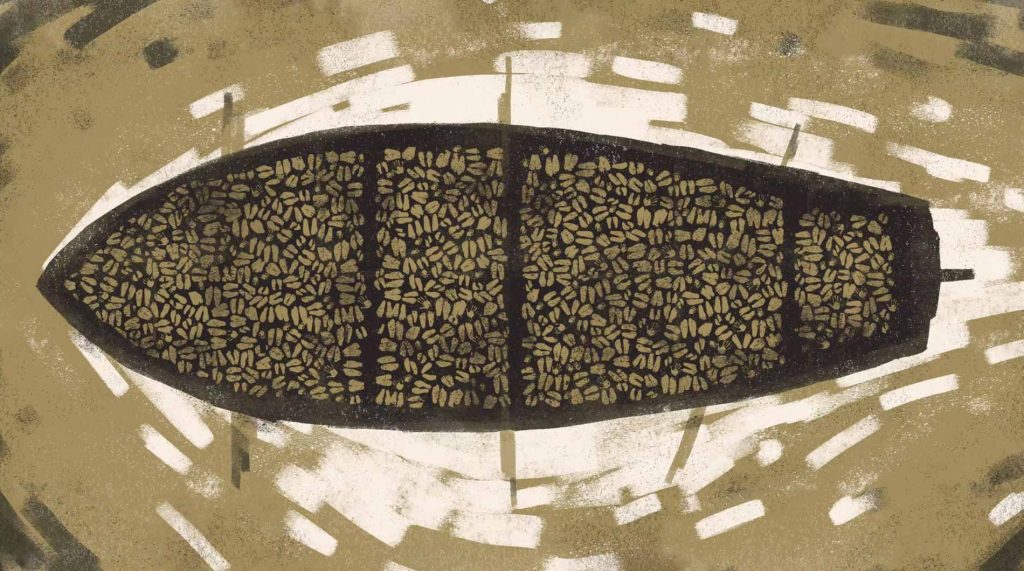
In 1655, the Witte Port, a large ship into which “slave traders had tightly packed three hundred African men and women and left them to travel across the Atlantic amid their own waste” docked in New Amsterdam.218
By 1660, New Amsterdam was the “most important slave port in North America.”219
Researchers have documented at least 70 different Transatlantic ships trafficking enslaved people between 1651 and 1775 whose “principal place of slave landing” was “New York, New York.”220 From 1651 to 1775, at least 7,209 enslaved Africans disembarked in New York City.221
Most trafficking ships docked at the Port of New York in Lower Manhattan. In 1711, New York City opened an official market for the trafficking of enslaved people on Wall Street, which became the central location for the trading of enslaved people.222
By 1730, 42% of New York City’s white residents directly enslaved Black people.223 For most of the 18th century, enslaved people comprised approximately 20% of the city’s population.224
Laws Targeting Black People
White New Yorkers justified exploiting the labor of enslaved people to build their city, with false narratives of racial difference rooted in white supremacy and Black inferiority.225
The ideology of inferiority included the myth that Black people were inherently dangerous, a false idea that was employed to justify swift, brutal, and violent responses to any threat to the social order.
In 1712, when a group of enslaved people engaged in an uprising and asserted their right to freedom, the government responded by executing 21 enslaved people—of whom the majority were hanged, some were burned alive, while one person was tortured to death on a breaking wheel—and passing new restrictions on enslaved people’s activities.226

The New York State Assembly made it a crime for any enslaved person to possess or use “any gun Pistoll [sic] sword Club or any other Kind of Weapon.”227 It was illegal for three or more enslaved people to congregate unless it was “in some servile imployment [sic] for their Master or Mistress.”228 Enslaved people were further prohibited from being on the streets after dark, unless with their enslavers.229
The New York Assembly discouraged emancipation by requiring an enslaver to pay a £200 tax or fee (over $50,000 today) for each emancipated person.230
These new laws both reflected and encouraged the race-based fears of white New Yorkers. In March and April 1741, a series of fires across New York City were blamed on the city’s enslaved population and treated as coordinated acts of arson.231 Hysteria ensued, and city officials initiated a “mass arrest of the [enslaved] population of the city,” forcing so many people into city jails that “the magistrates feared a plague.”232
A series of sensational trials began only weeks after the fires and dozens of enslaved people were convicted largely on the testimony of a paid 16-year-old white informant. City officials hanged 18 enslaved people, burned 13 people to death, and banished more than 70 to bondage in the West Indies.233
The numbers of kidnapped Africans who disembarked in New York increased from 916 people between 1700 and 1725 to 1,211 between 1726 and 1750.234 From 1751 to 1775, at least 3,583 kidnapped African people were trafficked through New York City, nearly three times the number during the previous 25 years.235 By 1771, 33% of the residents of modern-day Brooklyn were enslaved African people.236
An Economy Founded on Slavery
New York State did not officially abolish slavery until 1827.237 Even after abolition, New York City remained invested in enslavement and continued to profit from human bondage. By some estimates, the city received 40% of U.S. cotton revenue through its financial firms, shipping businesses, and insurance companies.238
Insurance companies based in New York, including New York Life Insurance Company and Aetna, Inc., which are the country’s largest life and health insurance companies today, sold policies that reimbursed enslavers for financial losses when the people they enslaved died.239
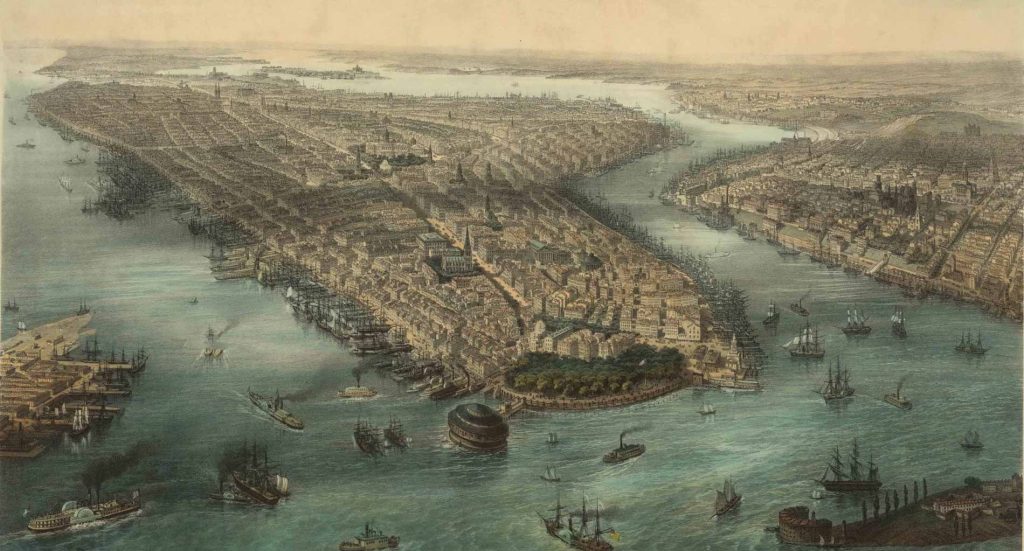
An illustration of New York City, ca. 1850.
Banks based in New York, such as Citizens Bank and Canal Bank—which later became part of JP Morgan Chase—accepted enslaved people as collateral on loans and “collected” 1,250 Black people when plantation owners defaulted.240
The National City Bank of New York (the predecessor bank of Citibank, which today has offices at 111 Wall Street) was founded by a white man named Moses Taylor, a banker and sugar trader who helped finance the Transatlantic Slave Trade after it was outlawed in 1808.241 Mr. Taylor was one of the wealthiest men in the 19th century, with an estate reportedly worth $70 million (about $1.6 billion today).242
New York City courts regularly returned formerly enslaved people to white enslavers who made claims under the Fugitive Slave Act.
Many of these lawsuits were presided over by judge Richard Riker, a former enslaver who city constable Tobias Boudinot once boasted could “arrest and send any black to the south.”243 Judge Riker often classified Black people as “fugitive slaves” without due process of law. He is the namesake of Rikers Island, where thousands of Black New Yorkers are currently confined in one of the country’s most inhumane and overcrowded jail systems.244
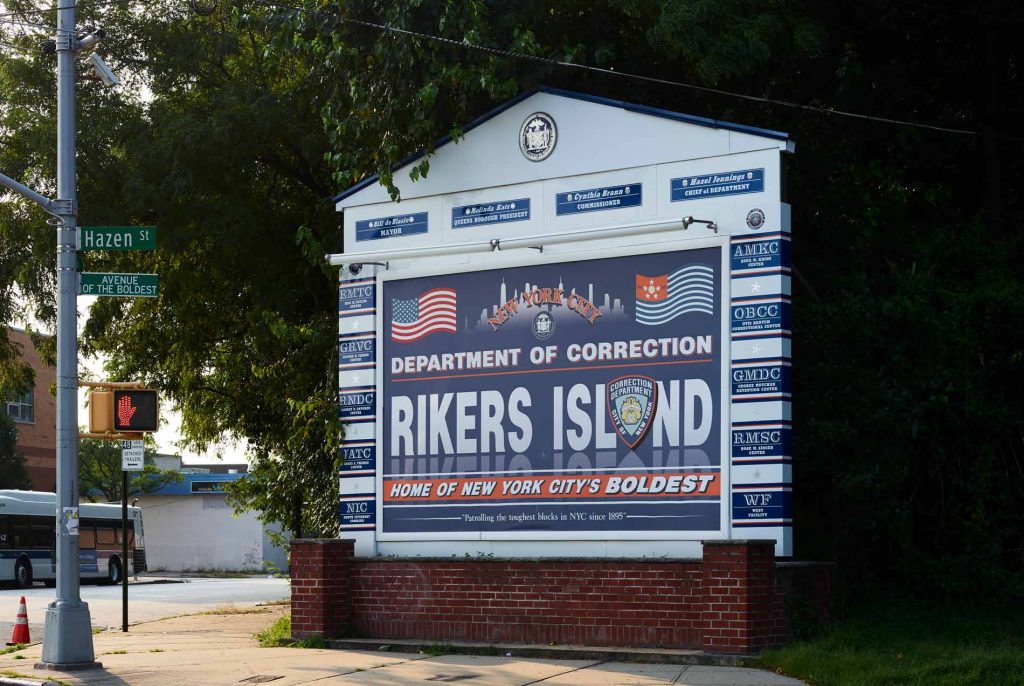
A sign for Rikers Island correctional facility in New York.
Library of Congress
In the 1840s and 1850s, New York’s political leaders and media argued that nationwide emancipation would harm employment prospects for white working-class men. Horatio Seymour, a devout white supremacist who served as governor of New York from 1853 to 1854 and 1863 to 1864, warned against abolishing slavery,245 and New York City voted against Abraham Lincoln in both the 1860 and 1864 presidential elections.246
“The scheme for an immediate emancipation and general arming of the slaves throughout the South is a proposal for the butchery of women and children, for scenes of lust and rapine, of arson and murder unparalleled in the history of the world.”
New York Gov. Horatio Seymour
In the summer of 1863, after Congress authorized the drafting of men to fight for the Union in the Civil War, white residents of Manhattan and Brooklyn viciously attacked hundreds of Black people in a racially-motivated massacre that became known as the Draft Riots.247
White people killed approximately 100 Black people in Manhattan and Brooklyn between July 13 and 16. One historian detailed the brutality of the white rioters:
On the waterfront, they hanged William Jones and then burned his body. White dock workers also beat and nearly drowned Charles Jackson, and they beat Jeremiah Robinson to death and threw his body in the river.
Rioters also made a sport of mutilating black men’s bodies, sometimes sexually. A group of white men and boys mortally attacked black sailor William Williams—jumping on his chest, plunging a knife into him, smashing his body with stones—while a crowd of men, women, and children watched. None intervened, and when the mob was done with Williams, they cheered, pledging ‘vengeance on every nigger in New York.’
A white laborer, George Glass, rousted black coachman Abraham Franklin from his apartment and dragged him through the streets. A crowd gathered and hanged Franklin from a lamppost as they cheered for Jefferson Davis, the Confederate president.248
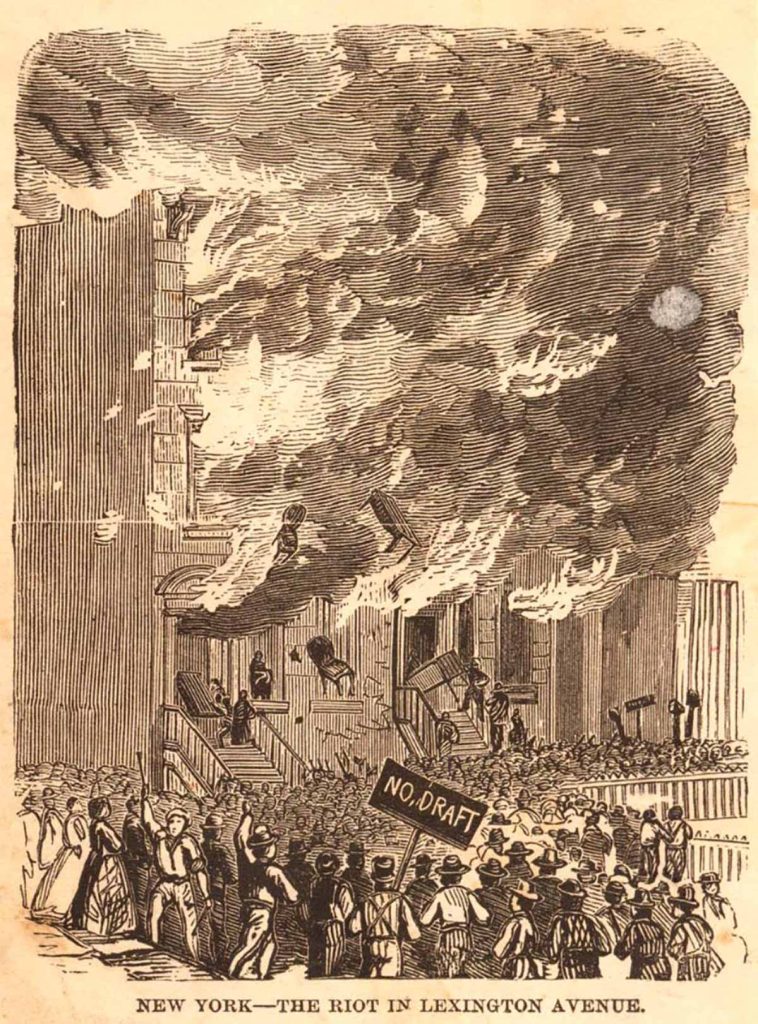
An illustration from Frank Leslie’s Illustrated Newspaper of the 1863 “Draft Riots” in New York.
New York Public Library
The violence was committed openly by known individuals, but no white people were ever held accountable. As a result of this racial terrorism, “for months after the riots, the public life of the city became a more noticeably white domain.”249
Racial terrorism permanently shaped the demographic geography of New York City.
In 1860, the Black population of New York City was 12,472. By 1865, the Black population had decreased to 9,943.250
Post-War Racial Discrimination
In the decades following the Civil War, Black people were overpoliced, criminalized, subjected to Jim Crow segregation, and denied equal housing and educational opportunities. The legacy of this history has never been confronted.
Even today, racial disparities can be found in New York City that reflect a long history of racial bias, especially in the criminal legal system. The Rockefeller Drug Laws signed into law by Gov. Nelson Rockefeller in 1973,251 NYPD’s “stop and frisk” policies in the 1990s, and residential racial segregation have led to racial disparities. Nearly 94% of people in state prison in 2002 were Black or Latino, with the overwhelming majority coming from New York City.252
In 2010, the New York metropolitan area had the third highest level of residential segregation among the 50 largest metropolitan areas in the U.S.253 Similarly, a 2014 report found that New York City’s educational system is among the most racially segregated in the country.254
Chapter 5
The Mid-Atlantic
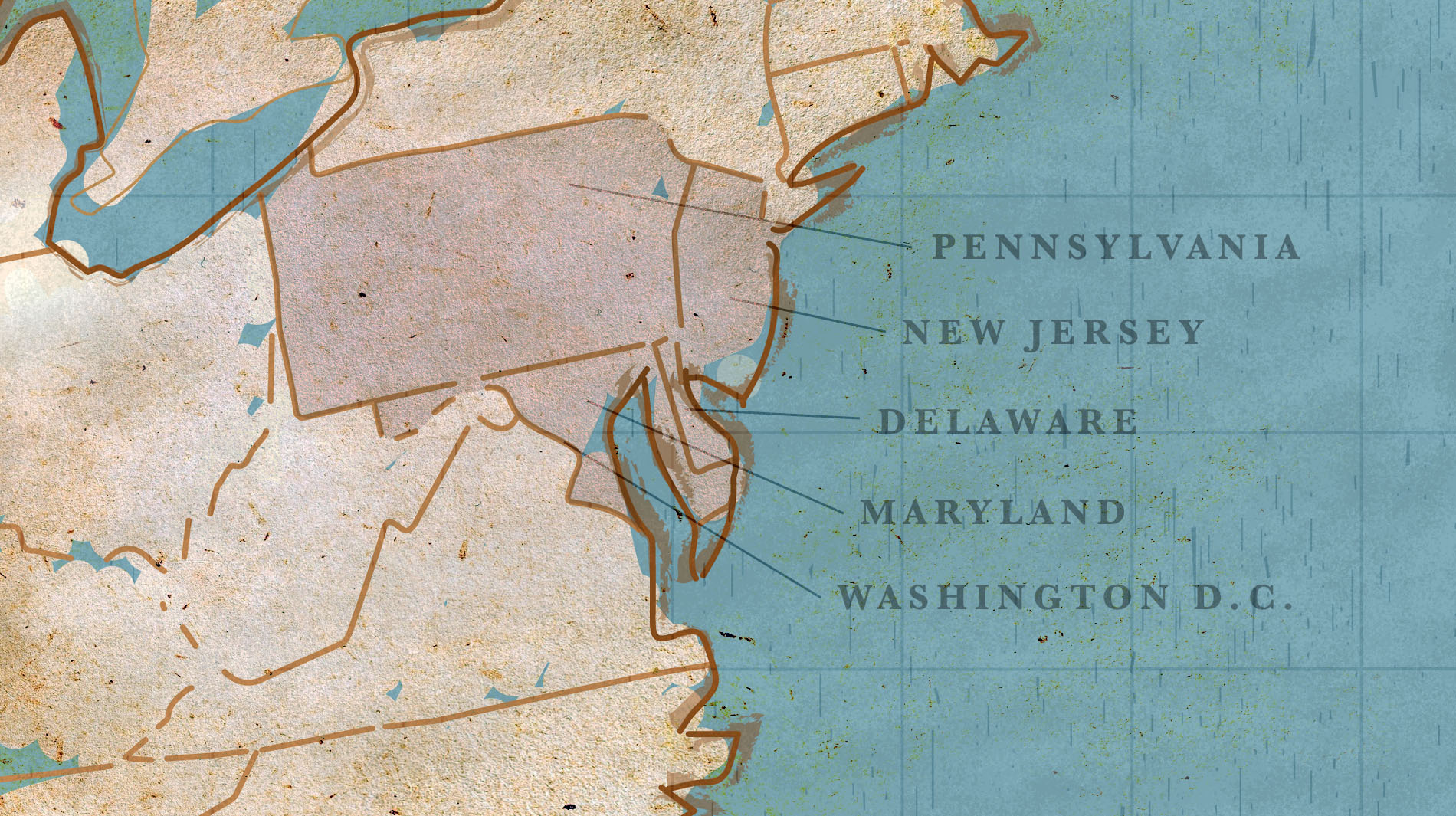
In this Chapter
- A Hub for Human Trafficking
- Work of Enslaved People
- Separating Families
- Controlling Black People
- A Legacy of Racial Bias
Trafficking in Delaware, New Jersey, Pennsylvania, Maryland, and Washington began as early as 1626, when the Dutch West India Company trafficked kidnapped Africans to “New Netherland.”255 In 1630, 50 African people enslaved on a plantation across the Hudson River became “the first Black residents of New Jersey.”256
In 1664, a “Concession and Agreement of the Lords Proprietors of the Province of New Cesarea, or New Jersey” granted land to white settlers for every enslaved person they brought into the province. The number of acres depended on the enslaved person’s age and strength.257 Called the colony’s first constitution, the concession legalized slavery as an institution and made it foundational to the region’s economy.258
As in New Jersey, white settlers in Maryland almost immediately codified the enslavement of Black people. British colonists arriving in Maryland in the 1630s brought enslaved Black people with them from Europe.259
Following initial colonization, trafficking also commenced in Maryland—colony proprietor Lord Baltimore directed his agent to purchase 10 enslaved Africans to work his land. In 1642, his younger brother, Leonard Calvert—who would later be appointed the first governor of Maryland—sought “fourteen negro men-slaves, and three women-slaves, of betweene 16 and 26 years old.”260
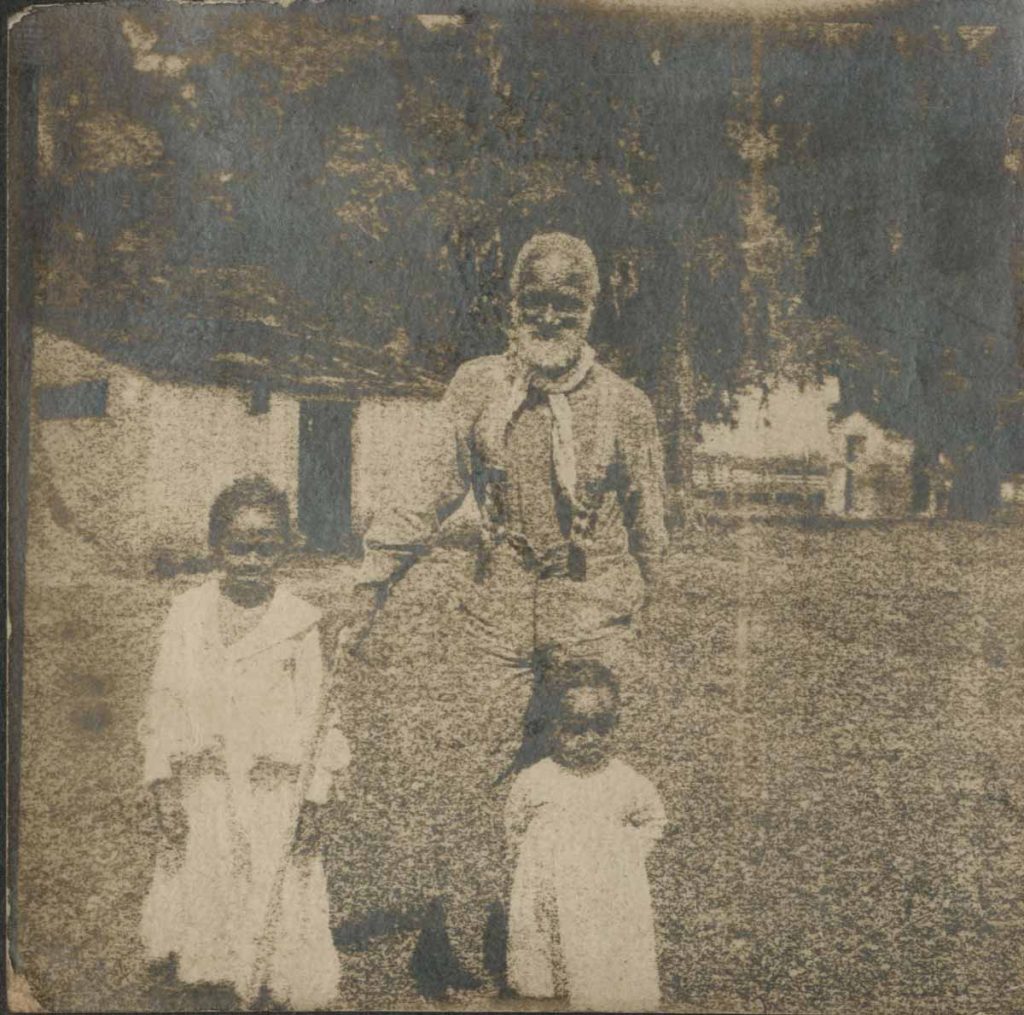
A photograph of Frank Campbell, ca. 1900. Mr. Campbell was one of 272 enslaved people sold by the Maryland Jesuits in 1838.
Robert Ruffin Barrow, Jr. Papers, Archives and Special Collections, Nicholls State University, Thibodaux, LA
The colony passed laws defining enslaved people as subordinate as early as 1639, when a Maryland law held that all Christians, “[s]laves excepted,” held the rights of Englishmen.261
In 1664, an act of Maryland’s colonial assembly transformed slavery into a permanent, hereditary, and race-based legal status.262
In Pennsylvania, trafficking of enslaved Africans began in 1639. Pennsylvania was founded by Quakers, who later opposed slavery, but many Quaker families enslaved people in early colonial settlements.263
The first enslaved Black person trafficked to Delaware was a man named Anthony, who was captured in 1638 and arrived in Delaware in 1639.264
A Hub for Human Trafficking
Between 1662 and 1800, at least 136 Transatlantic slave voyages landed in the Mid-Atlantic and sold thousands of kidnapped Africans into captivity in local markets and ports.265 These ships trafficked 27,829 enslaved people, including more than 5,000 who died from disease, injury, starvation, or suicide during the gruesome Middle Passage.266
Maryland’s desire to exploit enslaved labor far outpaced the other Mid-Atlantic colonies.
To encourage the use of ports in Maryland and Washington, Maryland imposed much lower import taxes than neighboring Virginia.267 At least 25,844 people were kidnapped from Africa and trafficked to Maryland alone.268
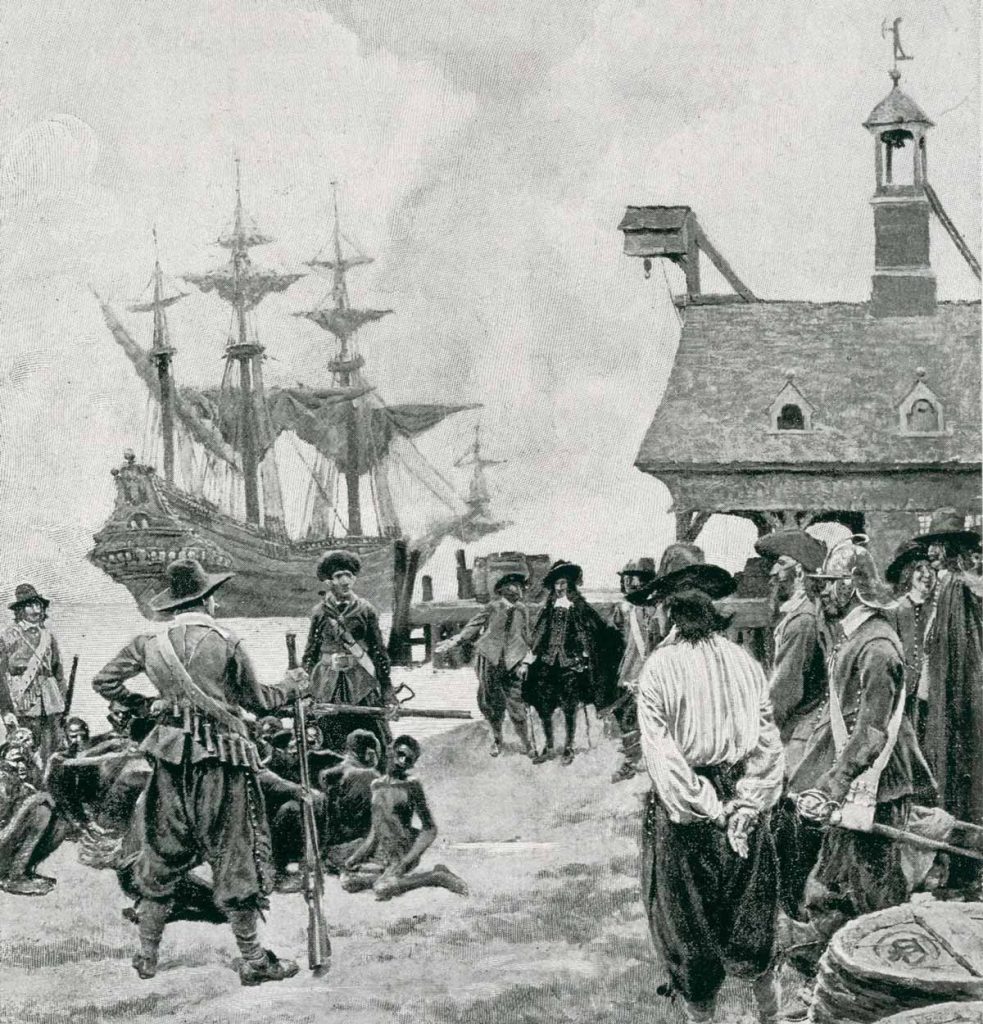
An illustration published in Harper’s Magazine in 1901 shows trafficked Africans arriving in Jamestown, Virginia.
Howard Pyle/Private Collection, via Bridgeman Images
The Mid-Atlantic region was also responsible for trafficking enslaved Black people to other parts of the world. Between 1695 and 1865, 25 Transatlantic voyages departed from Mid-Atlantic ports carrying 4,634 enslaved Black people, 1,090 of whom died during the journey.269 Seven of these voyages occurred after the Transatlantic Slave Trade was abolished in 1808.270
Mid-Atlantic traffickers also actively trafficked enslaved people to and from the West Indies and between U.S. colonies.271 In total, 13,178 Black people were purchased in the Mid-Atlantic and trafficked to other countries on 479 different voyages between 1695 and 1831.272
Work of Enslaved People
The forced labor performed by enslaved Black people in the Mid-Atlantic varied widely and included harvesting grain, producing meat and dairy products on small farms, building homes, blacksmithing, butchering, tanning and leatherwork, carpentry, carriage driving, cooking, cleaning, and mining.273
Brutality was the constant, as even “the lives of enslaved artisans were marred with the same physical, emotional, and psychological violence as their counterparts who performed domestic and agricultural labor.”274
Iron mines in Monmouth County, New Jersey, relied heavily on the labor of enslaved people. One of the earliest records of enslaved Africans in New Jersey comes from Col. Lewis Morris’s estate.275 Morris assigned skilled labor to free white workers and hard physical labor to enslaved Africans, requiring the groups to live in separate dormitories on his property.276 These measures “established unequal, race-based ranks among the laborers,” setting the stage for future racial discrimination in industrial settings in Monmouth County.277
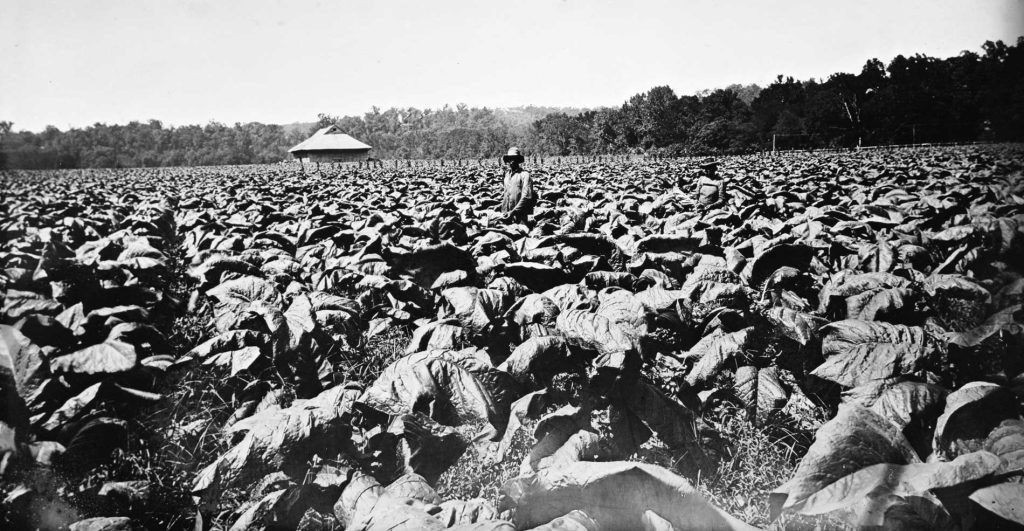
A tobacco field on the Wessyngton Plantation in Tennessee.
Library of Congress
Tobacco-farming enslavers on Maryland’s fertile Western Shore became the colony’s first large-scale investors in Transatlantic trafficking.278
By the 1690s, enslaved Black people in Maryland outnumbered European servants two-to-one. By 1700, Maryland tied with Virginia as the single largest trafficking destination in North America.279 Enslavers in the Western Shore counties had transitioned completely to enslaved African labor by 1710.280 In 1864, just before the end of the Civil War, 140,000 enslaved and free Black people worked in tobacco and cereal fields in Maryland.281
More than 100 ships used in the Transatlantic Slave Trade were constructed in the Mid-Atlantic region.282
In Pennsylvania, enslaved Black people were forced to build some of these ships and make sails.283 A 1768 posting in the Pennsylvania Gazette advertised the sale of “[f]our healthy young Negroe Men…brought up to the sail-making trade; they have been from nine to twelve years at said trade.”284
These ships continued to traffic kidnapped African men, women, and children long after the federal government banned the international slave trade in 1808, with trafficking voyages departing the Mid-Atlantic as late as 1856.285
Enslaved Black people in the Mid-Atlantic often lived in the homes of their enslaver, where they were subject to constant surveillance.286 Outside the home, enslaved people lived under strict curfews enforced by violent punishments. Passed in 1725, Pennsylvania’s curfew law stated that “any negro…found out of or absent from his master or mistress’s house after nine o’clock at night without license from his said master or mistress, [he] shall be whipped on his or her bare back.”287 New Jersey’s 1751 law also imposed a 9 pm curfew on enslaved Black people and made violations punishable by whipping.288
Separating Families
After 1808, Washington, D.C., became a popular hub for the Domestic Slave Trade. Enslaved people were brought to the nation’s capital “as if it were an emporium of slavery” and then transported to the Deep South to be sold.289
Many downtown hotels and taverns were used in the slave trade. Several dedicated blocks of rooms for the temporary housing of enslaved people and for enslavers and traffickers who traveled to Washington to engage in the Domestic Slave Trade.290
One known slave pen was right across the street from the White House291 and Black people were also held in pens near and on the National Mall.292 The D.C. jail offered to warehouse people for traffickers for 34 cents per day.293
In 1815, an enslaved Black woman was being held in a tavern on F Street in downtown Washington prior to being sent to the South with a coffle. Human traffickers had separated her and her two children from her husband. Desperate to escape, she jumped from a third story window and broke both arms and her back. She survived but the traffickers left her behind and took her children to be sold in the South.294
Family separation was commonplace in the Mid-Atlantic, where enslavers had no concern for the precious family ties that enslaved people managed to create under horrific, dehumanizing conditions.
Children were often separated from their families and sold alone.295 Even when they were not sending family members to distant plantations, enslavers rarely permitted Black families to live together.296
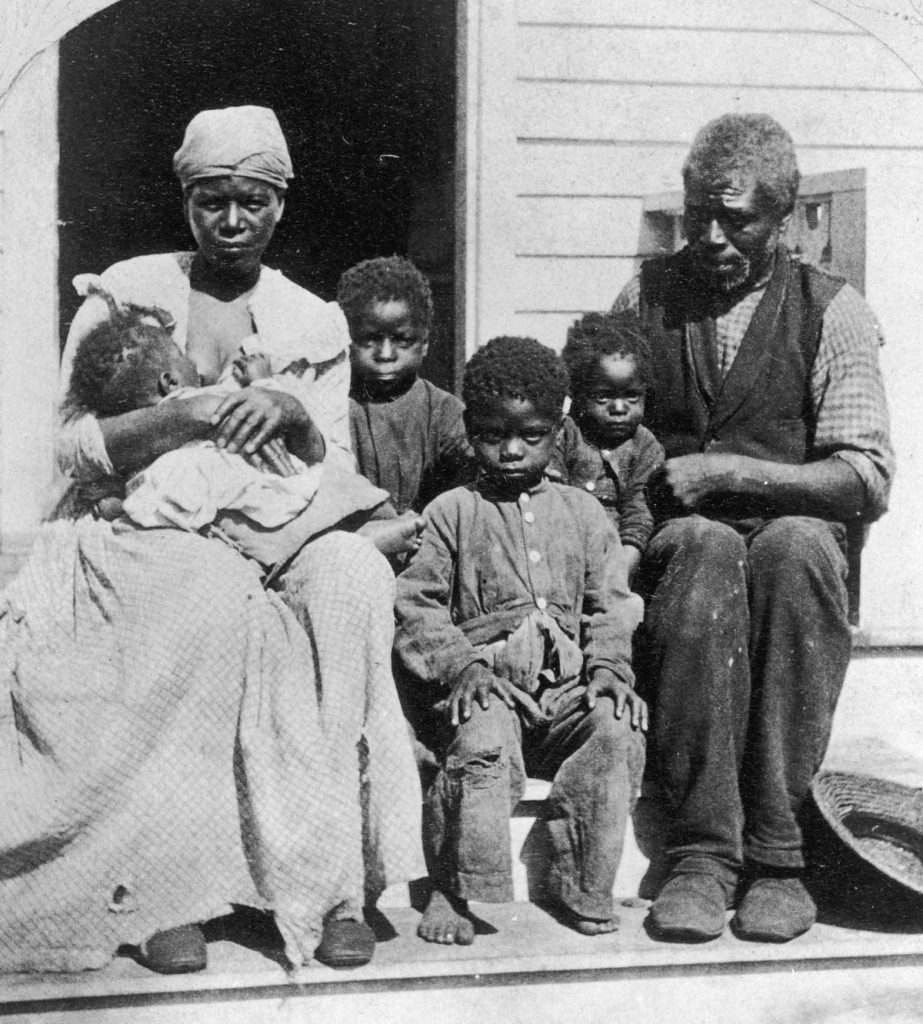
An enslaved family, ca. 1850.
Fotosearch/Getty Images
Laws intended to prevent enslaved people from straying from their enslavers also separated families.
A 1704 New Jersey law provided that if an enslaved person was more than 10 miles from their home, any person could capture them, whip them 20 times, and obtain a reward for returning them to their enslaver.297
After the Civil War, enslaved people risked their lives and traveled great distances, even with small children in tow, to reunite with loved ones.298
Controlling Black People
To uphold slavery as a permanent condition tied to race, states in the region enacted punitive laws targeting and regulating free Black people. In 1698, Maryland Gov. Francis Nicholson voiced many white enslavers’ fears when he said that allowing free Black people freedom of movement, combined with growing numbers of enslaved Black people, might lead to “great disturbances if not a rebellion.”299
In 1715, building on these narratives, Maryland prohibited free Black people from socializing with or “entertain[ing]” enslaved people.300 Another Maryland law was passed in 1723 to prevent “the evil Consequences that do and may attend the Suffering of Negro and other Slaves to meet in great Numbers on Sabbath and other Holy-Days.”301
The colonies also passed laws prohibiting gatherings of more than four or five enslaved Black people. In 1700, Pennsylvania, of which Delaware was then a part, prohibited Black people from gathering “in great companies or number.”302 If more than four Black people gathered, they were to be severely and publicly whipped.303
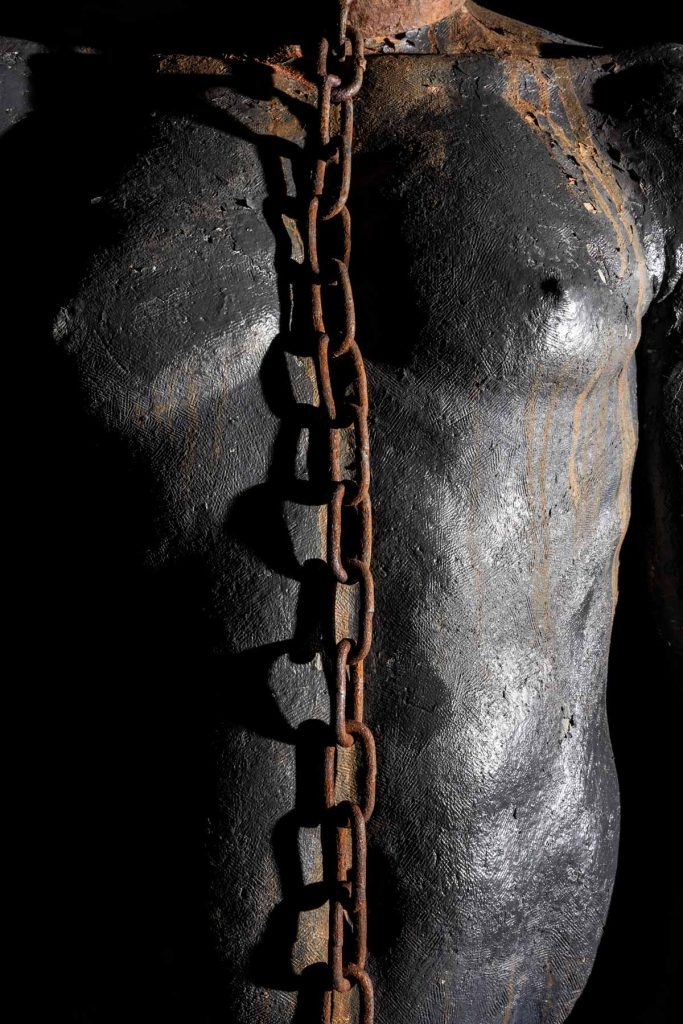
A 1704 law in New Jersey prohibited Black people from entering the colony without written permission from their enslaver.304 The law authorized any white person to capture a Black person suspected of entering without permission and “he, she or they so taken up shall be whipt at the publick Whipping-post.”305 The law effectively barred free Black people from entering New Jersey because they had no enslaver to provide the required license.306
Colonies in the Mid-Atlantic restricted free Black people’s ability to establish economic independence.
A 1713 New Jersey law prohibited formerly enslaved Black or Native people from purchasing or owning land, stating “no Negro, Indian or Mulatto Slave, that shall hereafter be made free, shall enjoy, hold or possess any House or Houses, Lands, Tenements or Hereditaments within this Province.”307
As late as 1849, Delaware passed legislation providing for the forced enslavement of free Black people based on the assertion of a white person that they could not support themselves.308 Pennsylvania passed a mandatory forced servitude law in 1725 that provided “if any free Negroe fit and able to work, shall neglect so to do, and loiter and mispend his or her Time or, wander from Place to Place, any two Magistrates next adjoining are hereby impowered and required to bind out to Service such Negroe from Year to Year, as to them shall seem meet.”309
Eventually, colonies in the Mid-Atlantic passed legislation that outright prohibited free Black people from living in their communities.
In 1807, Delaware banned free Black people from moving into the state.310 Any who did, and remained for 10 days, would be warned to depart. If they refused, they would be fined. If they could not afford the fine, they would be sold into servitude “not exceeding seven years.”311 Exceptions were made for those who had both a certificate of freedom and a certificate signed by two justices of the peace in the state from which they came that asserted they were of “good moral character, and industrious habits.”312

A woman named Jints, who was enslaved by James Anderson in Delaware, holds a young girl named Hanna Stockley, ca. 1860.
Delaware Public Archives
To disincentivize enslavers from setting enslaved people free, every Mid-Atlantic community required that the freed person or their former enslaver pay a fine in order for that person to live in the colony and remain free.
A 1713 New Jersey law required enslavers to pay a security of £200 (about $13,800 today) per year for the rest of the formerly enslaved person’s life.313 If an enslaver chose to free an enslaved person through their will and the enslaver or enslaver’s executor failed to pay the yearly security, “said Manumission to be void, and of none Effect.”314
These laws often codified racist tropes and reinforced the ideology of Black inferiority.
A Delaware law limited emancipation because “it is found by experience, that free Negroes and Mulattoes are idle and slothful, and often prove burdensome to the neighborhood wherein they live, and are of evil example to slaves.”315
Free Black people in the Mid-Atlantic lived in constant fear of being kidnapped and trafficked to the Deep South. Their fear was well founded.
Days after her husband died, a young, pregnant, and free Black woman was seized from her bed by her landlord and other white men, who placed a noose around her neck and repeatedly struck her in the head with a wooden stick when she resisted.316 She was trafficked from Maryland to Washington, where she was forced to await sale to Georgia. While she and her infant child managed to obtain their freedom before being taken South—potential buyers “refused to purchase, on account of her asserting she was free”—countless individuals were not so fortunate.317
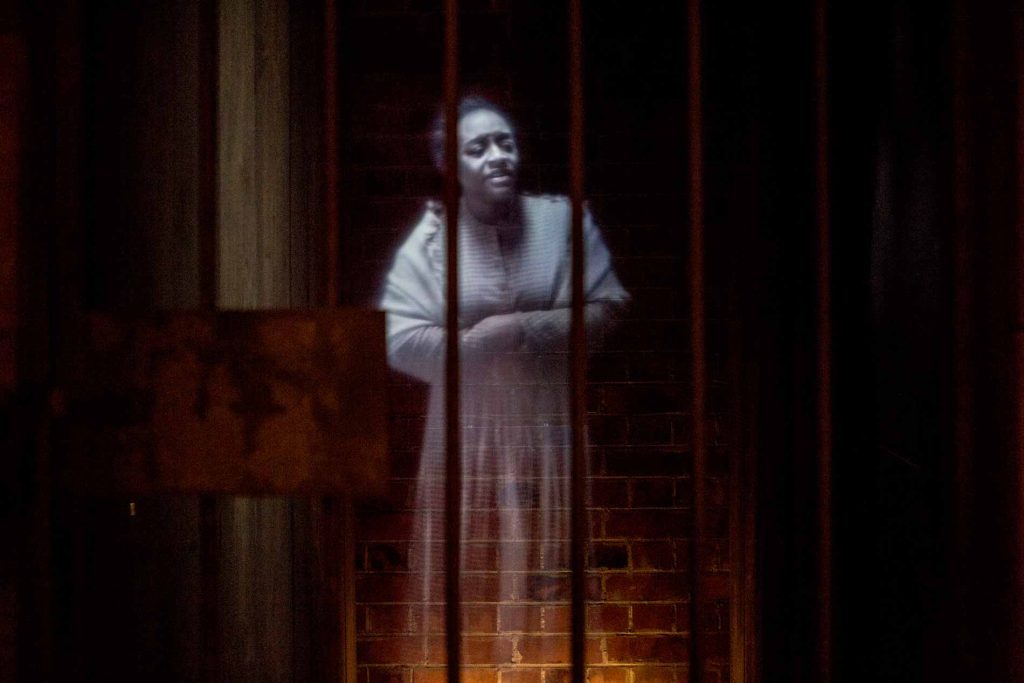
An exhibit at the Legacy Museum in Montgomery, Alabama, uses technology to share stories of enslaved people and the trauma of being separated from loved ones.
Andrea Morales/The New York Times
Each colony in the Mid-Atlantic passed legislation prohibiting the importation of enslaved Black people from Africa prior to the federal government’s ban on the Transatlantic Slave Trade in 1808.318 But communities in the Mid-Atlantic continued to be originating ports in the Transatlantic Slave Trade and to benefit from the institution of slavery.
New Jersey banned the importation of enslaved Black people in 1786,319 but the law prevented the importation or sale only of enslaved people who had been kidnapped from Africa after 1776.320 As a result, enslaved people who were kidnapped and trafficked from Africa before 1776 could still be sold and trafficked to New Jersey.
While New Jersey’s law would eventually prohibit the removal of enslaved people from the state without their consent, or the consent of their “guardians,”321 enslavers could simply forge an enslaved person’s signature. Surviving bills of sale “reveal that 41 percent of slaves ‘consented’ to removal to the Deep South, showing that coercion of some sort was likely common.”322
One of the most notorious examples of coercion was a human trafficking organization established by Judge Jacob Van Wickle and his brother-in-law, Charles Morgan, a Louisiana state legislator. The judge would falsely attest to the consent of enslaved people, including children, who were transported to Louisiana and other states in the lower South.323
Judge Van Wickle continued to mastermind illegal trafficking even after the passage of New Jersey’s gradual abolition act in 1804. As a result, enslaved children who would have been freed as they aged in New Jersey, were instead trafficked to the South where they faced a lifetime in bondage.324
During the Civil War, Delaware resisted all efforts at abolition within the state, including President Abraham Lincoln’s 1861 proposal to compensate Delaware’s enslavers using federal funds if they would free the Black people they held in bondage. The Delaware legislature replied to President Lincoln’s proposal with a resolution stating that “when the people of Delaware desire to abolish slavery within her borders, they will do so in their own way, having due regard to strict equity.”325
When President Lincoln signed the Emancipation Proclamation in 1863, he explicitly exempted Maryland and Delaware, which allowed enslavement to continue there during the Civil War.326
Even after the Civil War, Delaware staunchly opposed abolition.
It refused to ratify the Thirteenth Amendment abolishing slavery, or the Fourteenth and Fifteenth Amendments, which extended civil rights and voting privileges to Black men.327 Delaware finally ratified the Thirteenth Amendment on February 12, 1901—more than 30 years after it became part of the Constitution.328
A Legacy of Racial Bias
White communities in the Mid-Atlantic found many ways to restrict and regulate Black people’s lives for decades after emancipation. Today, the region continues to grapple with racial segregation in both housing and education.
In Maryland, public schools were closed to Black children for seven years after the Civil War.329
In Washington, separate but unequal schools for Black children continued to operate well beyond 1954 through a track system that created discriminatory outcomes.330
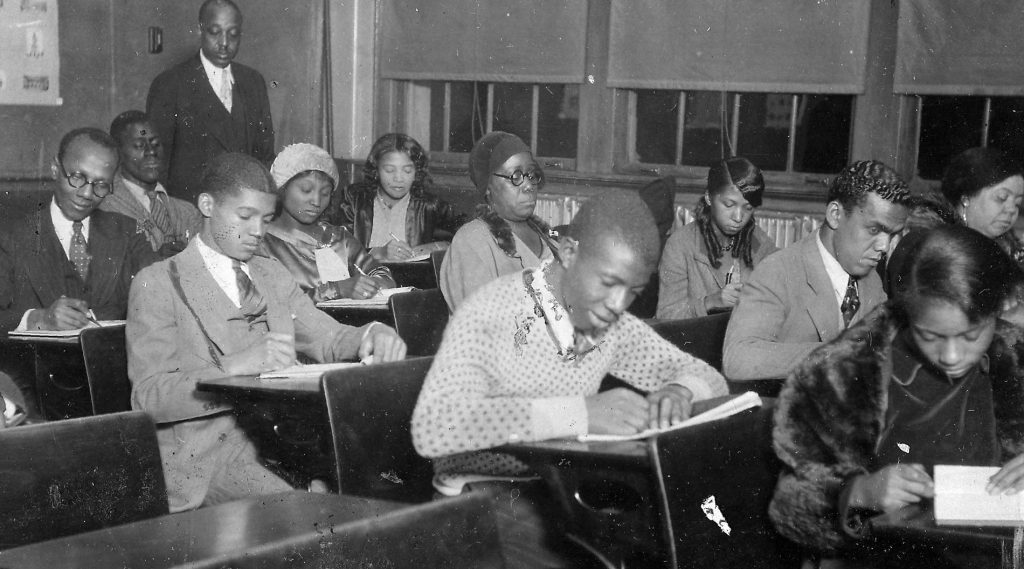
Black students attend an evening class at the segregated Frederick Douglass High School in Baltimore, Maryland, on February 7, 1930.
Afro American Newspapers/Gado/Getty Images
“New Jersey is one of the most racially and ethnically diverse states in the country—but it is also one of the most segregated.”331
In the 1940s, “racial covenants served to confine the vast majority of DC’s expanding Black population to older housing near the city center, near waterfront employment along the Potomac and Anacostia rivers, and to remote sections of far Northeast and Southeast DC.”332
Housing segregation became entrenched and persists in Washington today.333
Black people in Washington make up 45% of the nearly 690,000 people living there as of the 2020 Census, but they have no real representation in Congress.334
Black people in the Mid-Atlantic continue to be disproportionately incarcerated at rates above the national average. Today, the disparity in the incarceration rate between Black and white people in New Jersey is 12.5 to 1, compared to 4.8 to 1 nationwide.335 In Pennsylvania, the disparity is 7.4 to 1, meaning a Black person is almost eight times more likely to be incarcerated than a white person.336
Chapter 6
Virginia
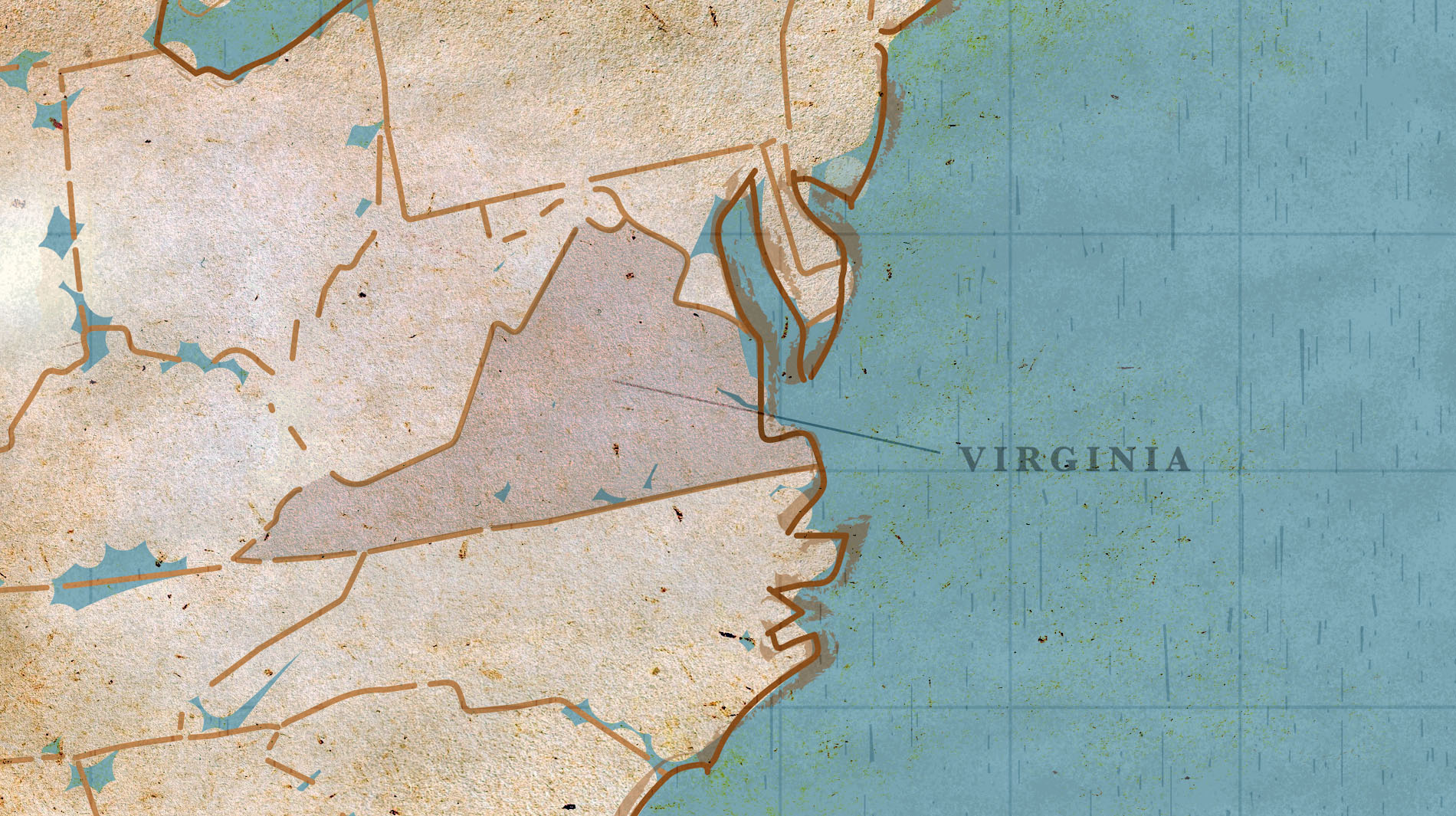
In this Chapter
- Tobacco Drives Trafficking
- Legislating Hereditary Enslavement
- Laws Controlling Lives
- The Domestic Slave Trade
The first kidnapped Africans trafficked to British North America in the Transatlantic Slave Trade arrived at Jamestown, Virginia, on a Portuguese trafficking vessel in 1619.337
In 1662, Virginia specified that every child born to an enslaved Black woman was enslaved for life—making it the first British North American colony to formally mandate race-based, hereditary enslavement.338
Over the next 150 years, Virginia’s culture, economy, and society developed around Transatlantic trafficking and the codification of race-based chattel slavery. Virginia also pioneered an extensive legal framework to subordinate free and enslaved Black people by restricting their rights and freedoms.
More kidnapped Africans were trafficked to Virginia during the Transatlantic Slave Trade than any other colony except South Carolina.
More than 100,000 Africans were kidnapped and trafficked to Virginia; at least 20% died during the arduous journey.
After international trafficking was banned nationally in 1808, Virginia became the leading source for America’s growing Domestic Slave Trade. Virginia enslavers trafficked hundreds of thousands of Black Americans into slavery in the Deep South.
Tobacco Drives Trafficking
Over the 17th and 18th centuries, as global demand for tobacco grew exponentially, white settlers in North America came to see human trafficking and bondage as the road to profit.339 Virginia quickly emerged as a dominant supplier of tobacco, and by 1681, Britain had imported enough tobacco from Virginia to supply all of England for five years.340
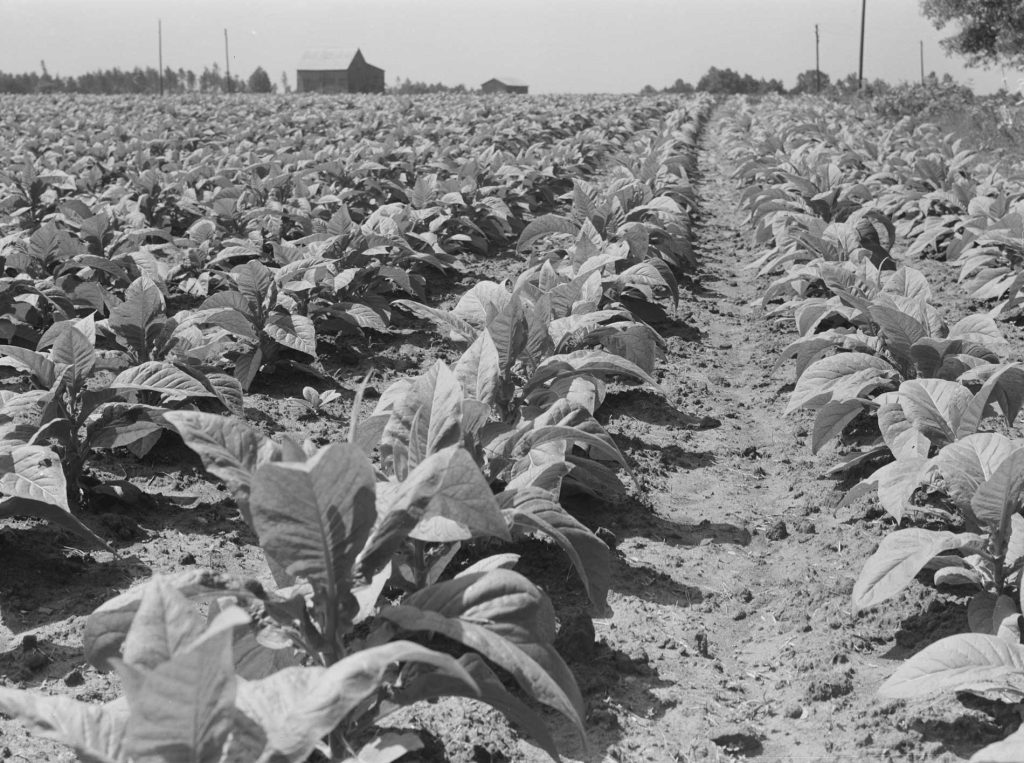
A tobacco field in Caroline County, Virginia.
Library of Congress
Tobacco was a land-intensive, volatile crop, and enslaved Virginians were forced to farm it in brutal, life-threatening conditions. Enslaved adults and children labored in the field for 16 hours a day, often seven days a week, to meet draconian output quotas set by enslavers to maximize profits.341
Grueling conditions resulted in a high mortality rate.
It was not uncommon for 20 enslaved people to perish on a single Virginia plantation over the span of a few months.342
An enslaved laborer in King George County, Virginia, described their workdays:
Our hours for work were…from daylight up to nine or ten o’clock at night…All children over ten years of age were obliged to work in the field…We did not go home for either breakfast or dinner, but had it brought to us…we were exposed to the broiling southern sun the whole day, and its fierce, fiery rays would often prostrate the feebler ones and by night we would feel tired in body and mournful in spirit. We had always to finish the row we commenced before we could have our meal, and it was not a pleasant sight to be working hard yourself while someone else was eating close by.343
Enslavers on plantations often purchased people on credit, promising future tobacco, which meant that many kidnapped Africans trafficked to Virginia effectively funded their own bondage by producing tobacco.344 Indeed, traffickers negotiated prices for kidnapped Africans in pounds of tobacco, such as 3,000 pounds for a child between seven and 11 years of age, 4,000 for a girl between 11 and 15 years old, and 5,000 for teenagers and young adults of 15 to 24 years old.345
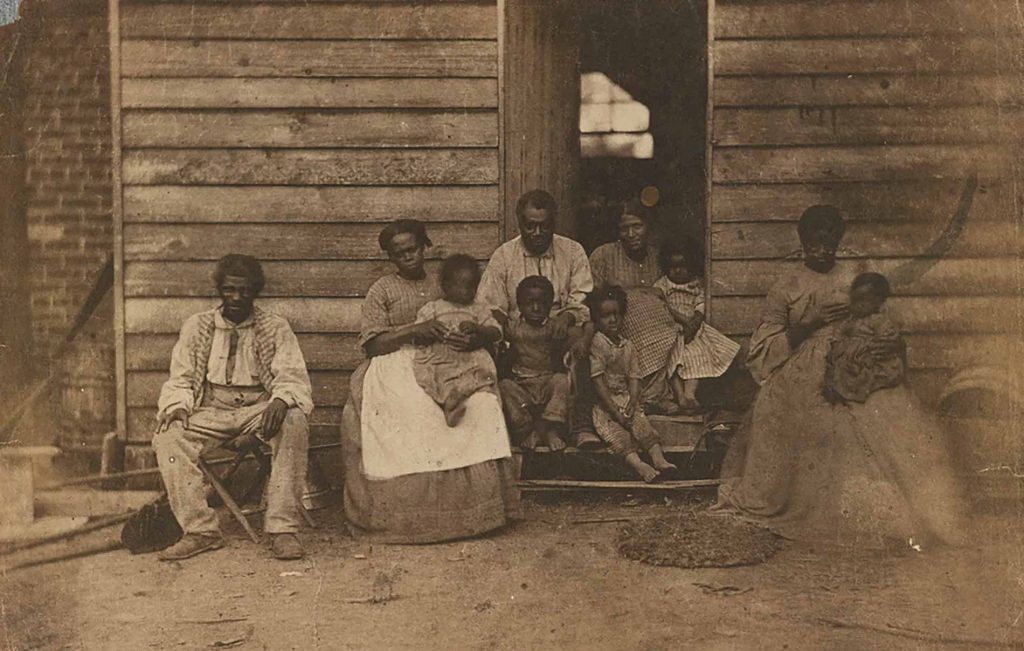
An enslaved family on the plantation of Dr. William F. Gaines in Hanover County, Virginia, 1862.
G.H. Houghton via Library of Congress
Traffickers treated those who died at sea as lost revenue, seeing each kidnapped African who perished as a decrease in agricultural productivity.346 As one trafficker wrote to a ship’s captain in 1702, “[T]he whole benefitt of the Voyage lyes in your care in Preserving the Negroes lives.”347
For most of the 17th and 18th centuries, more than two-thirds of the people trafficked by the British were kidnapped from the Bight of Biafra, a region in West Africa that includes modern-day Nigeria.348 Virginia traffickers grew to rely on kidnapped Igbo people, and particularly Igbo women, with the goal of forcing them to reproduce offspring, who would also be enslaved under Virginia law.349 Shipping records document that trafficking vessels docking in Virginia ports carried a higher proportion of women than groups of Africans trafficked to other parts of North America, approaching roughly equitable gender ratios.350
Legislating Hereditary Enslavement
As Virginia’s dependence on enslaved labor grew, the colony adopted laws to entrench hereditary and race-based slavery. A 1662 statute, the first of its kind in British North America, provided that infants born to enslaved mothers were legally enslaved at birth.351
A system of laws developed to ensure that enslaved people were legally treated as property, with the same legal status as livestock, and not as people.
For example, a 1669 bill exempted enslavers from punishment for murdering a person they enslaved because people could not be criminally liable for destroying their own possessions.352 Similarly, a 1672 law classified enslaved Black people as taxable property.353 A second 1672 act required that a white Virginian who killed a person enslaved by someone else must pay the enslaver 4,500 pounds of tobacco as compensation.354
Laws that institutionalized race-based slavery guaranteed enslavers access to the involuntary labor force that made it possible to reap massive profits from tobacco.355
Laws Controlling Lives
To protect the colony’s rigid racial caste system, Virginians passed laws that denied enslaved Black people access to knowledge and opportunities and restricted all areas of Black people’s lives.356
In 1691, Virginia became the first American colony to outlaw interracial marriage and impose strict penalties for romantic relationships between white and Black Virginians. The law levied a financial penalty on white women who gave birth to biracial children and prohibited enslavers from freeing those they enslaved unless they paid for their transportation out of state.357
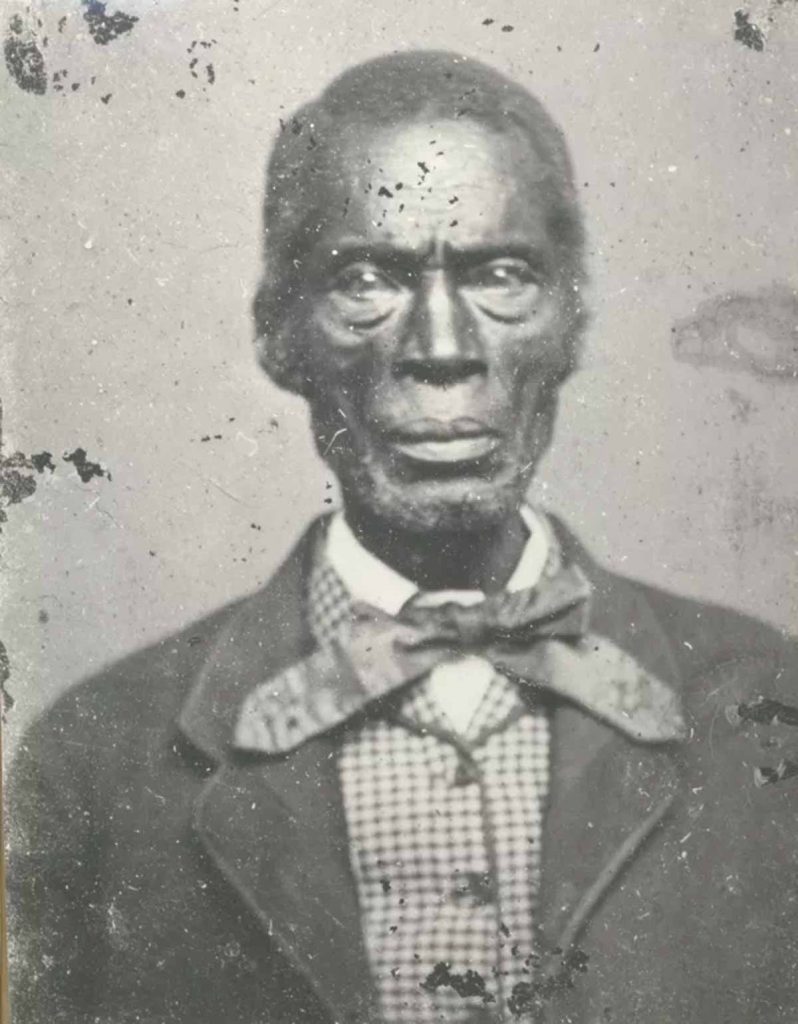
Leonard Norris was among dozens of people enslaved by George Washington Parke Custis, grandson of Martha Washington and step-grandson of George Washington, at Arlington House in Virginia. When Mr. Custis passed away, Robert E. Lee, the executor of the estate, took over the house and continued to enslave those living there.
National Park Service
As early as 1680, Virginia enacted legislation providing that any enslaved person found outside their enslaver’s plantation would receive up to 20 lashes.358 In 1723, reflecting a growing fear of uprisings by enslaved people, the Virginia General Assembly forbade enslaved people from meeting in groups of more than five people and imposed a penalty of 50 pounds of tobacco on enslavers who permitted enslaved people to meet on their property.359
Virginia also prohibited enslaved Black people from buying or selling goods.360 Virginia barred free Black people from entering the colony and allowed the capture and re-enslavement of any free Black person who remained in Virginia for more than a year.361A resolution passed in Lancaster County in 1748 even prohibited enslaved residents from owning dogs.362
Enslaved people were denied control over the most intimate spheres of their lives—forced to marry and have children with whomever their enslaver chose.
As Isaac Williams, an enslaved man from King George County documented, “The marriage ceremony was very often omitted with us, and the overseer would simply bring some female slave and say, ‘you live with this woman,’ and that was about all there was to it.”363

“Le Cri, Âmes Soeurs,” a sculpture by Sandrine Plante, in the Legacy Museum in Montgomery, Alabama.
Matt Odom
When Bethany Veney, an enslaved woman in Page County, Virginia, asked her enslaver for permission to marry Jerry, an enslaved man, her enslaver, Jonas Mannyfield, authorized the union. But less than a year later, Bethany’s husband was jailed and then sold to satisfy Mannyfield’s debts.364
Virginia law afforded enslaved people no protection in their spiritual and religious lives. Instead, Virginia gave enslavers the power to deny enslaved people access to religious services.365
In 1831, after Nat Turner, a Black preacher from Southampton, Virginia, led an uprising against enslavers, the state legislature passed a law prohibiting ordained Black clergy from preaching and barred Black congregations from meeting without the supervision of a white minister.366 As Fields, a Black man and aspiring Baptist minister, expressed:
From the day that I [believed] until now I have ever felt…that God has called me to the ministry and if I never perform that I shall ever think that I have fallen short of the work which God has assigned to my hands…[t]he reason why I have not preached may be known by all of those who know the laws of this land.367

An image of Private Gordon. Brutal and frequent beatings left his back completely scarred.
Corbis
Other laws prompted by fears of Black resistance threatened enslaved people with torture and even death if they challenged slavery or the legal architecture erected to sustain it. Any Black person, free or enslaved, accused of testifying falsely during a capital trial received the following punishment:
Every such [person] shall be ordered by the said court to have one ear nailed to the pillory, and there to stand for the space of one hour, and then the said ear to be cut off; and thereafter, the other ear nailed in like manner, and cut off, at the expiration of the other hour, and moreover, the [person] shall receive 39 lashes on [their] bare back.
The same law authorized enslavers to “dismember” enslaved Black people caught out at night without permission.368
The Domestic Slave Trade
By the late 1700s, wealthy Virginia enslavers were advocating for the end of Transatlantic trafficking in order to drive up the prices for enslaved Black people.369 The first U.S. Census, taken in 1790, revealed that Virginia enslaved 292,627 people, more than any other state.370
After Transatlantic trafficking was abolished, Virginia became the leading domestic exporter of humans, trafficking tens of thousands of Black people into slavery in the Deep South.
The strong bonds among enslaved family members on Virginia plantations made trafficking all the more excruciating for victims of the Domestic Slave Trade.371
Domestic traffickers forcibly removed children of all ages from their parents, handcuffed them together with ropes and chains, and marched them for miles. Enslaved mothers watching their children grow up dreaded the arrival of traffickers:
Not more regularly does the farmer put in his scythe to reap his annual harvest, than the slave-dealer visits the estates around him to gather up those who are ripe for sale. Every slave-mother trains her child from in-fancy with the full knowledge that, the more perfect the growth of her child, the more certainly will it be selected for the gang.372
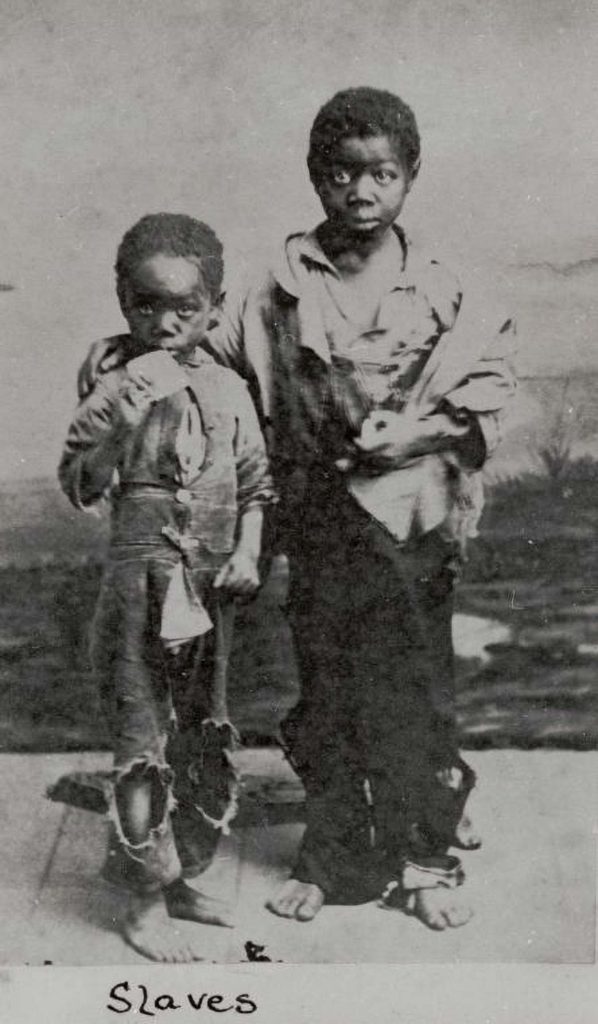
Two young enslaved boys, ca. 1850.
New York Public Library
Virginian traffickers kidnapped enslaved children from under beds and out of closets and priced them for sale in front of their parents.373 Powerful narratives written by enslaved people detail the deep trauma this violent separation had on the lives of people trafficked to the Deep South—and on the lives of those left behind.
Historically dependent on the enslavement of Black people, Virginia’s capital city served as the headquarters for the Confederate government during the Civil War. Today, Virginia maintains more standing Confederate monuments than any other state in the nation.
Chapter 7
Richmond, Virginia

In this Chapter
- A Trafficking Hub
- An Enslavement-Based Economy
- Suppressing Black Resistance
- Center of the Domestic Slave Trade
Richmond was founded in 1733 to serve as a hub for human trafficking.374 It became precisely that, as more than 11,000 kidnapped Africans were trafficked into Richmond as part of the Transatlantic Slave Trade.375
The enslaved Black people who survived the horrific journey to Richmond were forced to labor under brutal conditions on the tobacco plantations surrounding the city as well as in Richmond’s cotton factories and paper mills. By the time international trafficking of kidnapped Africans was abolished, Richmond was entirely dependent on slavery, its labor force comprised almost exclusively of enslaved Black people.376
By the middle of the 19th century, Richmond had become a primary market for the Domestic Slave Trade. Enslavers auctioned up to 50 Black people per day in Richmond, sending them away from their spouses and children and selling them into slavery in the Deep South.377
A Trafficking Hub
William Byrd II, an enslaver and trafficker of kidnapped Africans, selected the site for Richmond due to its location at the “uppermost landing of the James River.”378
Byrd made his fortune purchasing kidnapped Africans in Richmond and selling them to smaller enslavers along the Upper James River at “double the profit.”379 By 1712, the Byrd family owned three plantations on the Upper James River. Byrd employed overseers to manage tobacco production on these plantations, and became angry with them when they did not work his enslaved laborers hard enough.380
Byrd had accurately predicted Richmond’s rise as a major trafficking destination. Between 1727 and 1769, 11,139 kidnapped Africans entered the Upper James District.381
Richmond’s proximity to large tidewater tobacco plantations where demand for enslaved workers was insatiable made it the ideal port for the larger Transatlantic vessels favored by British traffickers.

A sign advertising a slave auction in Richmond, Virginia, on July 22, 1823, where 10 enslaved people, including a teenaged girl, were to be sold.
Chicago History Museum/Getty
Most trafficking vessels bound for Richmond carried kidnapped Africans from Guinea, the Gambia, and Sierra Leone in groups of 200 or more.382
Communities in Sierra Leone and other parts of West Africa had long grown, refined, and traded tobacco through a network of well-established trade relationships. Individuals with these skills were prized workers on tobacco plantations along the Upper James River.383
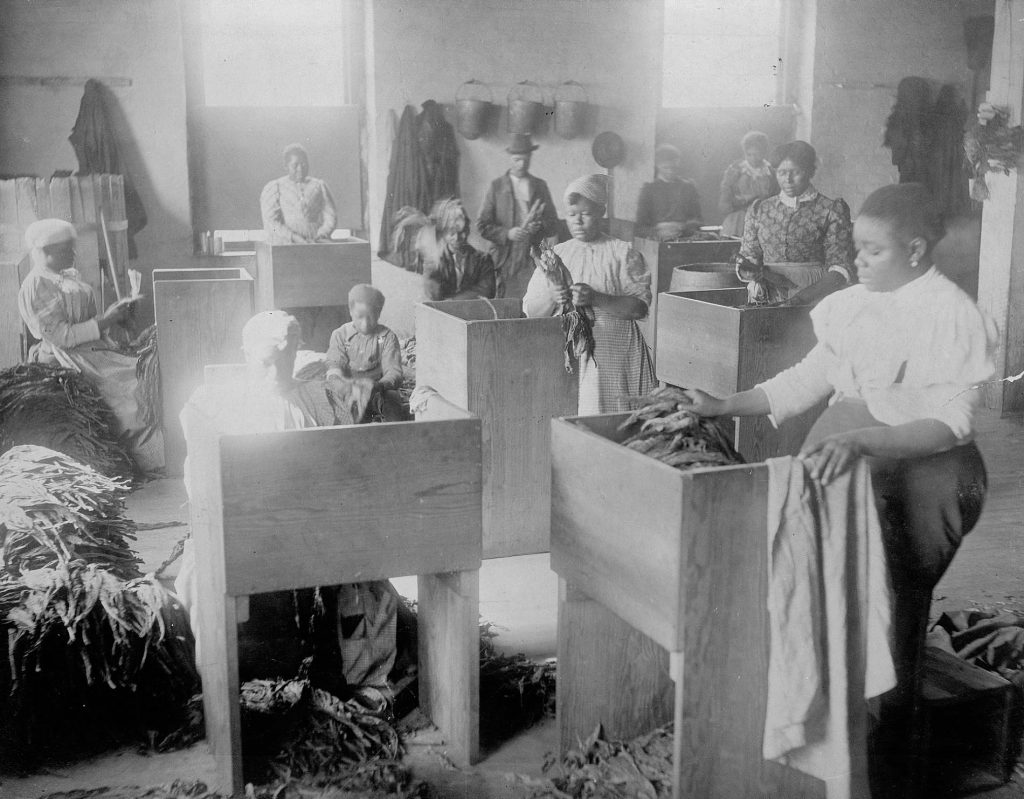
A group of women sort tobacco at the T.C. Williams & Co. factory in Richmond, Virginia, ca. 1899.
Library of Congress
Richmond’s rapid success in trafficking large numbers of kidnapped Africans created cause for alarm among white enslavers.
In 1739, William Byrd II wrote to a British colonial official that he feared Richmond would soon be named New Guinea due to the city’s increasing number of enslaved Africans.384 He wrote:
I am sensible of many bad consequences of multiplying these [Africans] amongst us. They blow up the pride, and ruin the Industry of our [w]hite [p]eople, who seeing a Rank of poor Creatures below them, detest work for fear it [should] make them look like [those enslaved]…another unhappy Effect of Many [enslaved Black people] is the necessity of being severe. Numbers make them insolent, and then foul Means must do what fair will not.385
Census records in 1782 document 120 enslaved Black people within Richmond’s city limits, making up nearly half of Richmond’s population.386 By 1840, Richmond was home to 20,153 Black Virginians, a larger number of Black people than in any other city in the state.387
An Enslavement-Based Economy
Enslaved Black labor fueled the state’s industries and was critical to the functioning of Richmond itself.
In 1857, nearly 150 enslaved Black people repaired tracks and hauled wood for Richmond’s Virginia Central Railroad Company.388 Enslaved Black laborers staffed Richmond’s downtown hotels and the Virginia State Armory.389
One ship captain declared in 1850: “I don’t know one free man that works in any store in Richmond.”390
A Richmond hotel owner remarked in 1855 that “all the work in Richmond is done by [enslaved Black people].”391
Direct involvement in slavery was not limited to Richmond’s wealthiest residents. Enslavers of moderate means hired out the Black women they enslaved to perform domestic labor in the homes of Richmond’s wealthiest families.392
Enslaved Black women also performed industrial labor alongside men. Enslaved Black children as young as six were forced to labor in Richmond, where they witnessed and experienced the extreme violence that was foundational to the system of slavery.
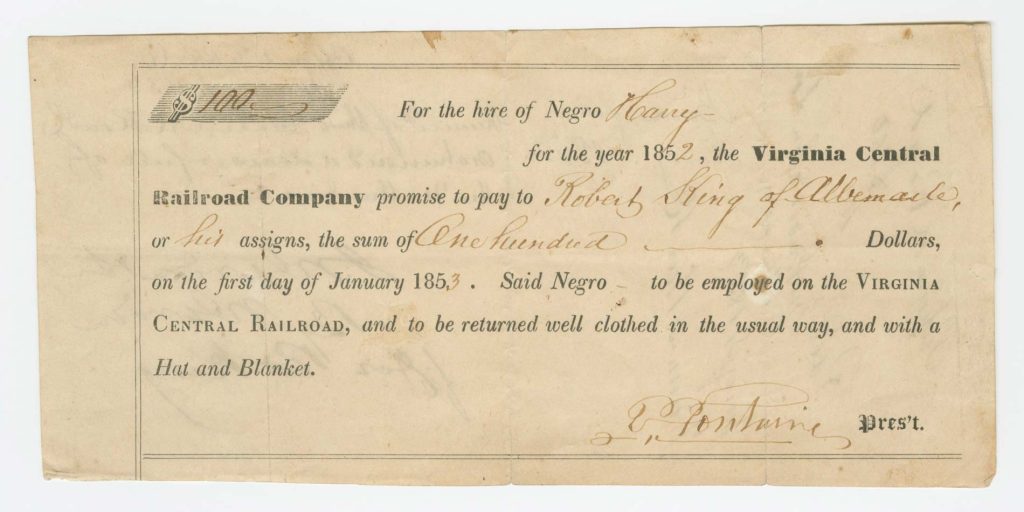
A bond for the hire of an enslaved man named “Harry,” by the Virginia Central Railroad Company.
Virginia Central Railroad Company/NMAAHC
In 1838, Richmond trafficker George Pullan approached six-year-old Louis Hughes as he was working on a James River canal boat. Pullan seized Louis and took him to a “trader’s yard,” where the young boy witnessed enslaved Black people being invasively examined and publicly whipped. Louis later vividly described the “whipping business” in Richmond:
Whipping was done at these markets, or trader’s yards, all the time. People who lived in the city of Richmond would send their slaves here for punishment. When any one wanted a slave whipped he would send a note to that effect with the servant to the trader. Any petty offense on the part of a slave was sufficient to subject the offender to this brutal treatment. Owners who affected culture and refinement preferred to send a servant to the yard for punishment to inflicting it themselves. It saved them trouble, they said, and possibly a slight wear and tear of feeling. For this service the owner was charged a certain sum for each slave, and the earnings of the traders from this source formed a very large part of the profits of his business.
The yard I was in had a regular whipping post to which they tied the slave, and gave him “nine-and-thirty,” as it was called, meaning thirty-nine lashes as hard as they could lay it on. Men were stripped of their shirts in preparation for the whipping, and women had to take off their dresses from the shoulders to the waist. These whippings were not so severe as when the slaves were stripped entirely of their clothes, as was generally the case on the plantations where slaves were owned by the dozen. I saw many cases of whipping while I was in the yard. Sometimes I was so frightened that I trembled violently, for I had never seen anything like it before.393
Suppressing Black Resistance
White Richmonders wielded Virginia’s death penalty to suppress Black resistance to enslavement.
In 1800, Henrico County authorities arrested Gabriel Prosser, an enslaved blacksmith accused of plotting resistance against his enslaver. Mr. Prosser had planned to free himself and join other Black Richmond residents in challenging the city’s system of enslavement.394
Mr. Prosser and other Black Richmonders arranged to meet at the blacksmith shop where he worked, having told their enslavers and overseers they were attending a church barbecue.395 Richmond authorities arrested Mr. Prosser and 30 or 40 other Black Virginians396 and locked them in the city jail, placing Mr. Prosser in solitary confinement.397
Twenty-six men, including Gabriel Prosser, were sentenced to death, and one died by suicide while awaiting trial.398 After a series of mass executions, Virginia Gov. James Monroe paid enslavers compensation for the executed men out of Virginia’s state treasury.399
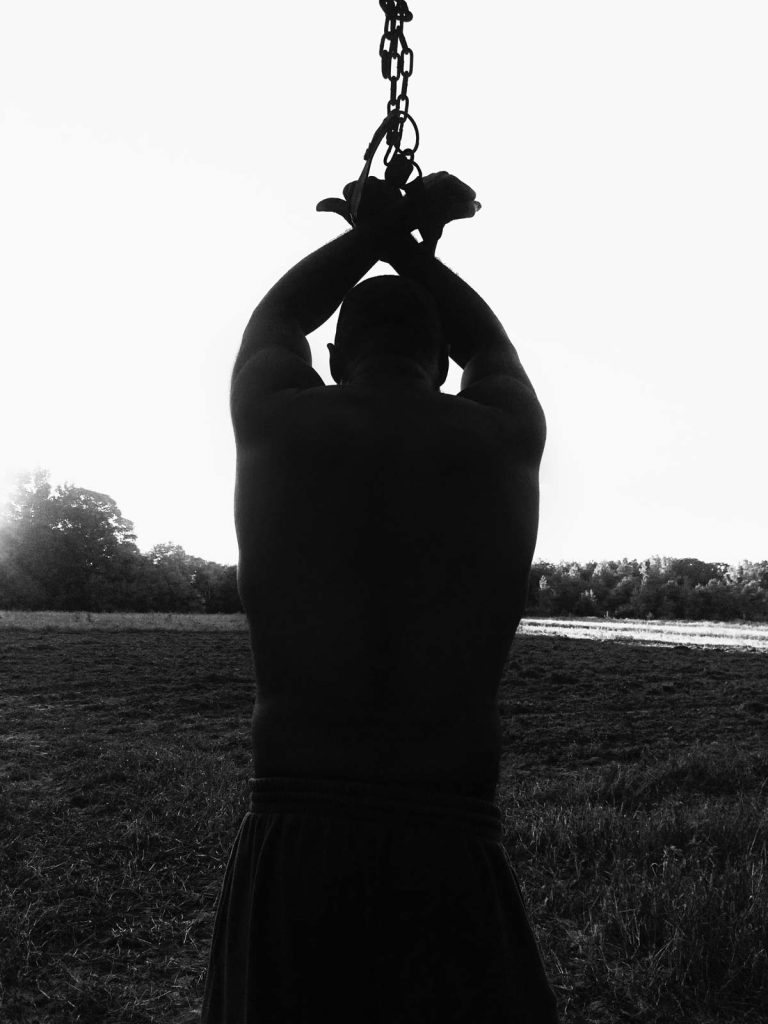
The trial of Gabriel Prosser and his alleged co-conspirators triggered white fears of Black resistance across Virginia. Residents from Petersburg wrote to the governor requesting details about the prosecutions.400 City leaders in Williamsburg sought to shore up their ammunition supply.401
And in the years after the mass executions, white Richmonders lobbied for increasingly repressive legislation targeting free and enslaved Black people.402
Center of the Domestic Slave Trade
Richmond rose to prominence as a major trafficker of enslaved Black Virginians to the Deep South after the Transatlantic Slave Trade was abolished.
In 1855, a European visitor described Richmond as “the head-quarters of slavery.”403The Richmond Dispatch wrote in 1854:
It is all a hallucination to suppose that we are ever going to get rid of African slavery; or that it will ever be desirable to do so. It is a thing that we cannot do without; that is righteous, profitable and permanent, and that belongs to southern society as inherently, intricately and durably as the white race itself. [T]he negro is here, and here forever; is our property, and ours forever; is never to be emancipated; is to be kept hard at work and in rigid subjection all his days.404
By mid-century, Richmond’s markets were auctioning as many as 50 enslaved Black people to Deep South enslavers every day. Additional transactions took place in private offices in the city’s downtown hotels between traffickers and enslavers who wished to conduct their business “discreetly.” The city strategically located public auction sites near predominantly Black neighborhoods to reinforce the possibility of sale as a psychological threat to enslaved Black Richmonders.405
Richmond enslavers threatened Black people with punishment if they displayed anger, fear, or sadness at the market.
Auctioneers conducted public sales with no regard for the humanity of enslaved people, forcing young men to remove their clothing, interrogating women about their reproductive history, trafficking children too young to work, and separating infant children as they clung to their mothers.406
Prospective enslavers who visited Richmond’s markets conducted physical inspections of enslaved Black people, noting telltale whip marks “with the knowing air assumed by horse dealers.”407

An illustration of an enslaved woman and child being sold at an auction.
Rischgitz/Getty Images
Richmond’s domestic traffickers routinely removed children from their parents by force and deception. Some forcibly sold their own multiracial children away from the women they had raped.408
Virginia law placed no constraints on the brutal methods that traffickers used to destroy families because enslaved parents had no legal rights to their children.
In 1825, a Richmond dealer arrived at the home of Col. A. Burwell, an enslaver in Prince Edward County, Virginia. The trafficker weighed and measured the enslaved children, pricing them by the pound in front of their parents. When seven-year-old “Little Joe” Keckley’s mother became distressed as the trafficker loaded her son into a wagon headed for Richmond, Burwell told her he was preparing Joe for a trip to town.409
Elizabeth Keckley, a seven-year-old girl also enslaved by Burwell, witnessed the tragic separation of Little Joe from his mother. She noted:
Morning came, but little Joe did not return to his mother. Morning after morning passed, and the mother went down to the grave without ever seeing her child again. One day she was whipped for grieving for her lost boy. Colonel Burwell never liked to see one of his slaves wear a sorrowful face, and those who offended in this particular way were always punished.410

Confederate veterans, including General J. S. Carr, at an annual reunion in Richmond, Virginia, in 1922.
Bettmann/Getty Images
Richmond’s dependence on enslavement motivated the city’s enthusiastic participation in the Civil War, and in May 1861, the Confederate government moved its capital from Montgomery, Alabama, to Richmond.
To fuel the war effort, Richmond drew on the involuntary labor of both free and enslaved Black people, who were forcibly transported from throughout the state to Confederate military headquarters. Virginia’s conscription laws obligated free Black people to work for the Confederacy under the threat of enslavement or incarceration.411
Richmond’s oppression of Black residents did not end when the Confederacy surrendered in April 1865. Instead, white Richmonders continued to embrace beliefs about Black inferiority that were formed and embraced to justify the Transatlantic Slave Trade and, later, the Domestic Slave Trade.
In the 21st century, Richmond continues to honor its history of white supremacy. Up until 2020, the city maintained no less than 29 Confederate monuments.412
Chapter 8
The Carolinas
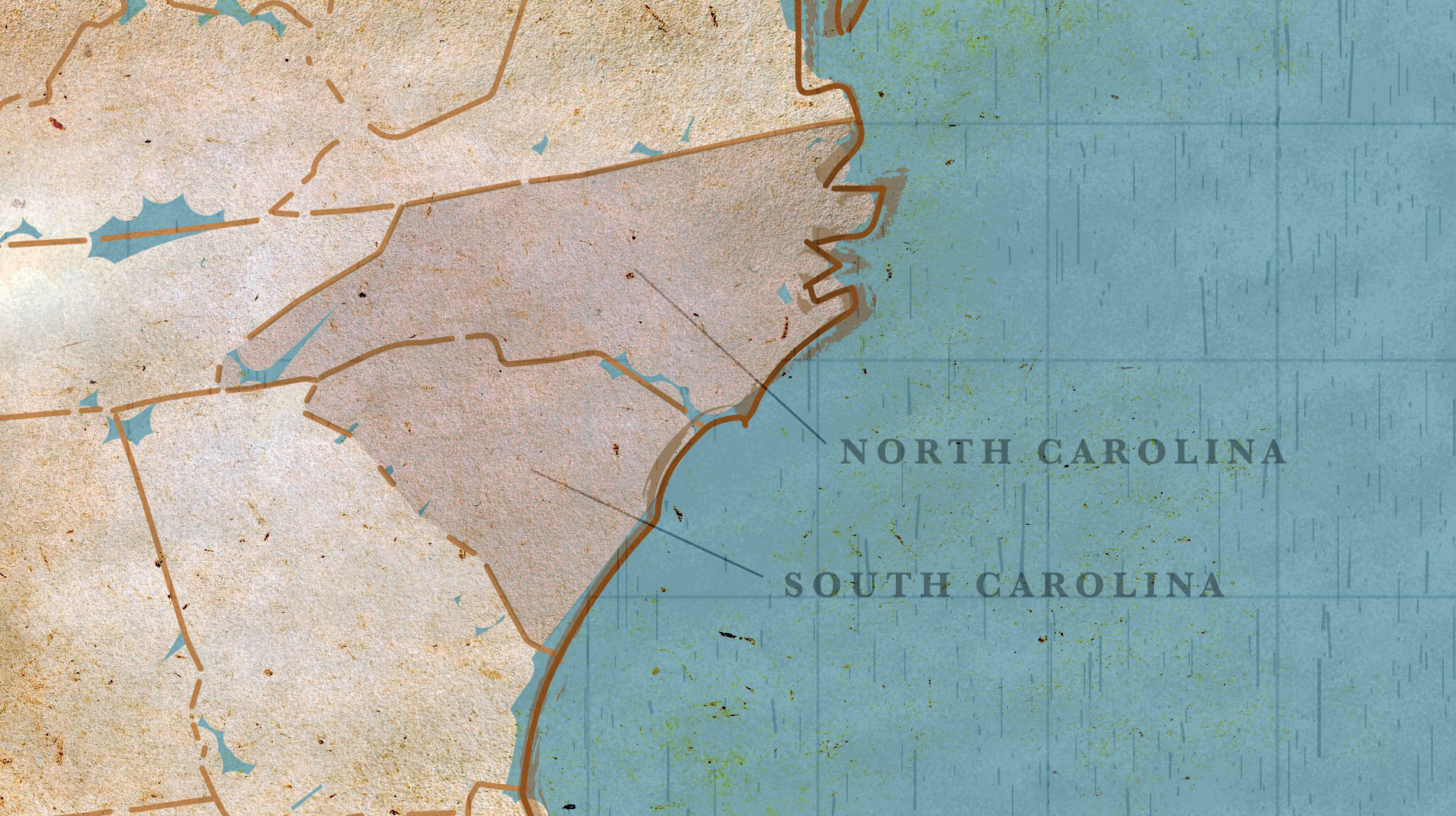
In this Chapter
- Trafficking for Rice and Indigo
- North Carolina Trafficking
- Resistance to Enslavement
South Carolina was the first British North American colony founded as a “slave society.”413 Established as a profit-seeking proprietary settlement in 1663, its “Lords Proprietors” recruited white plantation owners from the English West Indies by granting every freeman “absolute Power and Authority over his Negro slaves” and offering prospective settlers 20 acres of land for every Black male and 10 acres for every Black female they enslaved.414
In South Carolina, the most lucrative crops were rice and indigo, which both required a significant amount of intensive manual labor.
Seeing the potential for massive profits, human traffickers purchased large numbers of enslaved African people to meet the growing market for forced labor.415 From the 16th century until the mid-19th century, at least 150,000 African people were trafficked through South Carolina’s ports.416
The slave trade was so active in the Carolinas that, by the 1720s, the Lowcountry had more enslaved Black people than white colonists.417
Trafficking for Rice and Indigo
Human traffickers in South Carolina’s Lowcountry began to purchase large numbers of enslaved Black people from the rice-growing communities of West Africa after the crop was introduced in the 1690s.418 White colonists began developing new areas to accommodate the Lowcountry’s growing rice plantations, establishing Beaufort in 1711 and Georgetown in 1729.419
Fixated on obtaining maximum prices for their human cargo, wealthy traffickers in Charleston frequently rejected enslaved people who had been made “meagre and thin” from starvation and deprivation during the Middle Passage. Some of these enslaved people were sold in the Lowcountry, where they faced some of the harshest and deadliest conditions in the Carolinas.420
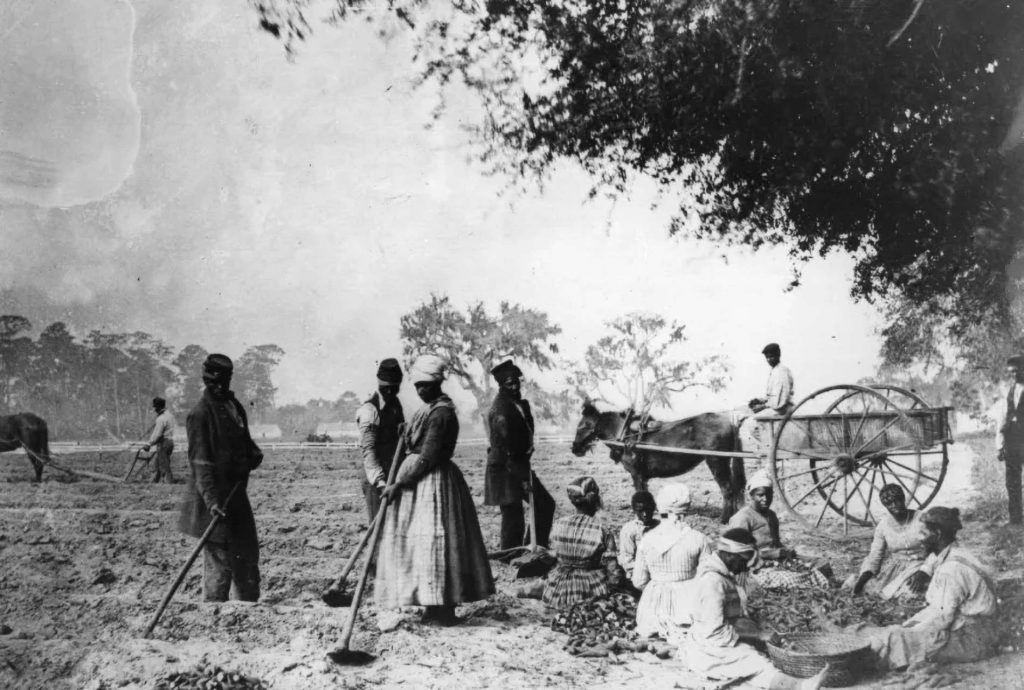
Enslaved people working on a plantation in South Carolina.
Henry P. Moore/Library of Congress
Many Black people from the West Coast of Africa were skilled in planting rice.421Throughout the Lowcountry, human traffickers sought to capitalize on West Africans’ extensive engineering experience, technical skills, and knowledge. They boasted about purchasing African people from the continent’s West Coast, knowing that their unique expertise made them profitable. Advertisements that read “Gold Coast Slaves for Sale” were not uncommon.422
Rice plantations—and the economic prosperity they brought to South Carolina’s Lowcountry—were dependent on enslaved Africans, their knowledge, and their skilled labor.
As the rice industry grew during the 18th century and more enslaved people were trafficked into South Carolina, human traffickers began to use quarantine islands as ports of entry. At these sites, enslaved people were forced to quarantine on ships or in “pest houses” until white traffickers determined they were free of diseases such as smallpox.
The first “pest house,” as they were called, was founded at Sullivan’s Island in 1707. Morris Island and James Island were founded in 1776 and 1797, respectively. Historians estimate that tens of thousands to hundreds of thousands of kidnapped Africans were trafficked through these quarantine islands. Estimates of how many enslaved Africans died at these sites vary, but the squalid conditions led observers to refer to Morris Island as “Coffin Island.”423
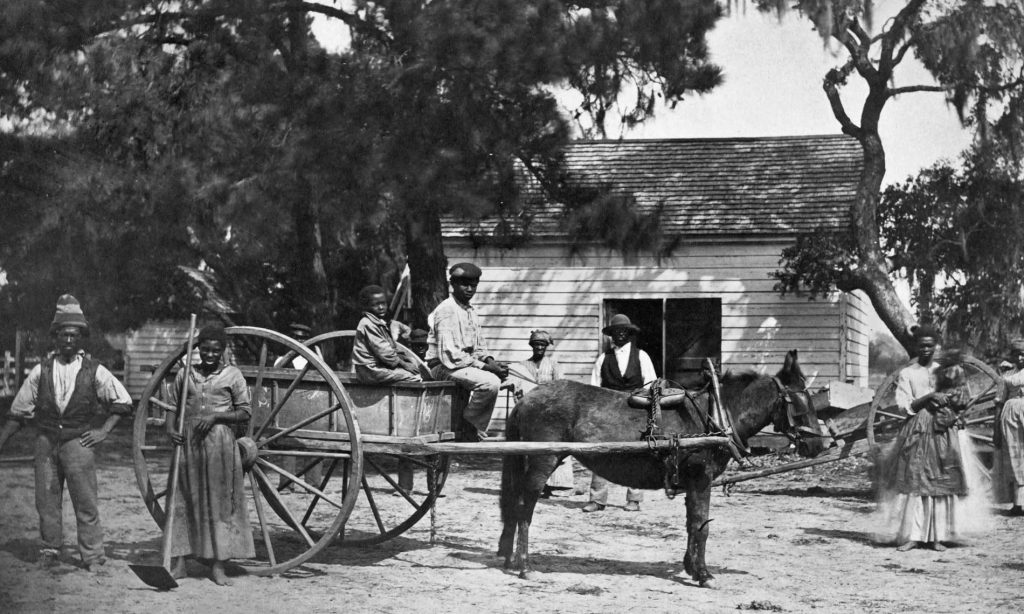
Enslaved people working on the Cassina Point plantation belonging to James Hopkinson on Edisto Island, South Carolina.
Marian S. Carson Collection/Library of Congress
By the middle of the 18th century, South Carolina’s white enslavers were in search of a new profitable crop. They began to grow indigo, a weed that could be used to make a vivid blue dye.
Indigo became a significant export for the region, and enslaved people in South Carolina were forced to labor year-round to meet production demands.424
North Carolina Trafficking
Trafficking ports in North Carolina experienced slower economic growth than those in neighboring South Carolina because of the state’s geography. Traffickers found the North Carolina coastline undesirable because it was “jagged, dangerous, shoal-burdened and constantly changing,”425 and it lacked deep harbors hospitable to large ships.426
As a result, many African people trafficked into North Carolina were brought from South Carolina and Virginia. In January 1733, the governor of North Carolina lamented that the state had so few enslaved Black people trafficked directly from Africa and that North Carolinians had “to buy the refuse, refractory, and distemper’d Negroes brought in from other governments.”427

The quarters at Horton Grove, part of the Stagville Plantation in Durham County, North Carolina.
Wikimedia Commons
North Carolina eventually exported rice and indigo like its neighbor to the south, but early coastal communities relied on the exportation of naval stores—turpentine, tar, pitch, rosin, and other materials produced from longleaf pines, so named because they were originally used to build and maintain wooden ships—and lumber to fuel the slave trade.428
Brunswick Town, a port of entry for enslaved people, was founded in 1726 along Cape Fear—a long blackwater river that runs from the interior of the state to the Atlantic Ocean and served as a key transportation route during the colonial period. White enslavers who relocated from South Carolina and wanted to implement the same agricultural practices they had seen in the Lowcountry began forcing enslaved Black people to grow rice and indigo in the Cape Fear region.429
More than a thousand enslaved Black people were brought to Brunswick between 1768 and 1790.430 Brunswick County established 18 plantations from 1725 to 1760 and 50 more were founded within 50 miles of Brunswick.431
While North Carolina’s jagged coastline deterred traffickers from using the ports to transport enslaved people, the coast was home to thousands of acres of pine leaf forests, where enslavers found new ways to profit from the exploitation of enslaved Africans. Throughout the 18th and 19th centuries, North Carolina supplied most of the world’s naval stores.
Until the invention of kerosene in 1860, turpentine produced by enslaved Africans was used to light homes, public buildings, and streets.432 Most enterprises in the region enslaved at least four Black people; larger pine plantations along the coast had up to 100 enslaved workers.433
As these exports strengthened North Carolina’s economy, white residents increasingly began enslaving Black people to do the intense physical labor of gathering, felling, and boxing trees for lumber and turpentine.434
Founded near the Cape Fear River in the early 1730s, Wilmington became the world’s largest exporter of naval stores during this era.435 The city quickly became central to the growth and maintenance of the Transatlantic Slave Trade as Wilmington shipbuilders began supplying slave trafficking ships to nearby regions.436
By the late 18th century, Hanover County, where Wilmington is situated, had a higher percentage of enslaved Black residents than any other county in the region.437
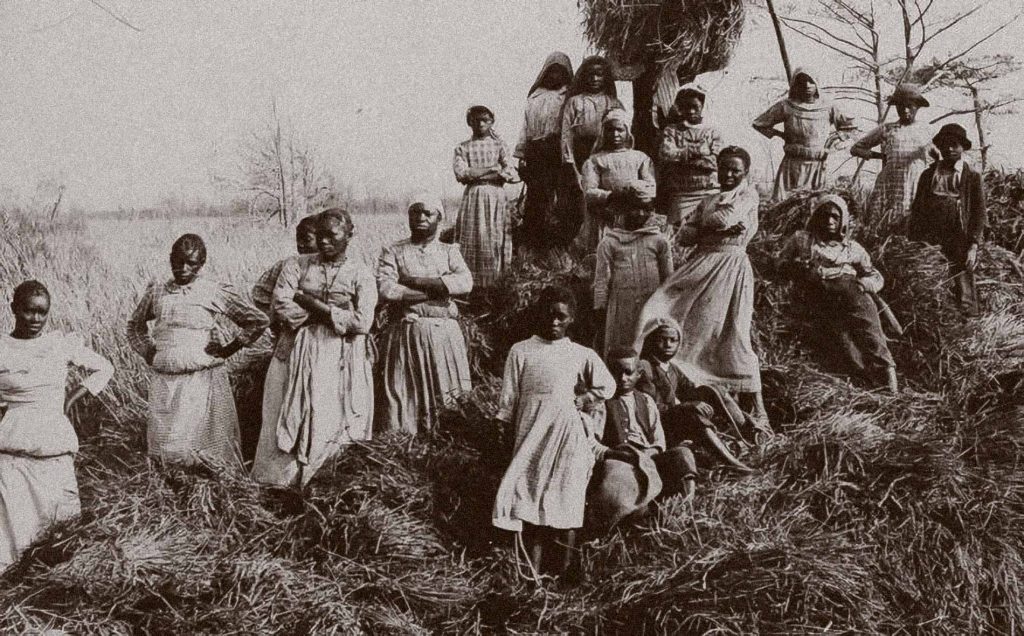
A group of Gullah Geechee people stand alongside a rice raft near Georgetown, South Carolina, in 1904.
College of Charleston Stereoscope Views, College of Charleston Libraries, Charleston, SC, USA
Enslavers relied on enslaved Black workers to develop North Carolina’s economic infrastructure. Enslaved Africans built canals that connected the state’s interior piedmont region to coastal ports, underpinning the state’s economic development.438
They also built canals to drain swamps, cultivate rice, and clear access to waterways for the lumber industry.439 In 1786, the Edenton-based Lake Company trafficked nearly 100 enslaved people directly from Africa to dig a six-mile-long canal from Lake Phelps to the Scuppernong River.440
Canal-building was agonizing work. During this two-year project, enslaved Black people worked from sunrise to sunset in the swampland, where they were exposed to malaria and other deadly diseases. Many died from sheer exhaustion; as one overseer wrote, those who were too tired or ill to return home at the end of a work day would “be left by the bank of the canal, and the next morning the returning gang would find them dead.”441
As in neighboring South Carolina, the development of towns and ports in North Carolina was driven by the slave trade and made possible through the forced labor of enslaved Africans.
New Bern, founded in 1710 along the Pamlico River by Swiss and German settlers who enslaved Black people, became North Carolina’s largest port city in the late 18th century. By 1724, enslaved Black people made up at least 24% of New Bern’s population.442
Resistance to Enslavement
Enslaved Africans in the Carolinas resisted bondage in myriad ways—they revolted, they escaped, and they survived.
The largest rebellion in the British colonies, known as Cato’s Rebellion, took place in South Carolina in 1739 when scores of armed, enslaved Africans began marching to Spanish Florida, fought off an armed militia that tried to stop them, and were ultimately defeated by the South Carolina militia.
After the revolt, the colonial legislature passed the Negro Act of 1740 to restrict the assembly, education, and movement of enslaved Black people and created a prohibitively high tax on trafficking Africans for the next five years.443
A legal framework emerged in the Carolinas to supplement the violence and cruelty used to maintain control on plantations and to enforce white racial domination.444
Enacted in 1715, North Carolina’s slave codes declared that enslavement was permanent and hereditary.445 In 1831, the slave codes were expanded to restrict the movement and behavior of enslaved people:
It shall not be lawful for any slave to go at large as a freeman, exercising his or her own discretion in the employment of his or her time; nor shall it be lawful for any slave to keep house to him or herself as a free person exercising the like discretion in the employment of his or her time; and in case the owner of any slave consent or connive at the commission of such offence, he or she so offending shall be subject to indictment, and on conviction be fined in the discretion of the court not exceeding one hundred dollar.446
Throughout the Carolinas, “slave patrols” were developed to control large enslaved populations447 and the law empowered white people to capture and kill escaped Black people with no legal penalties.
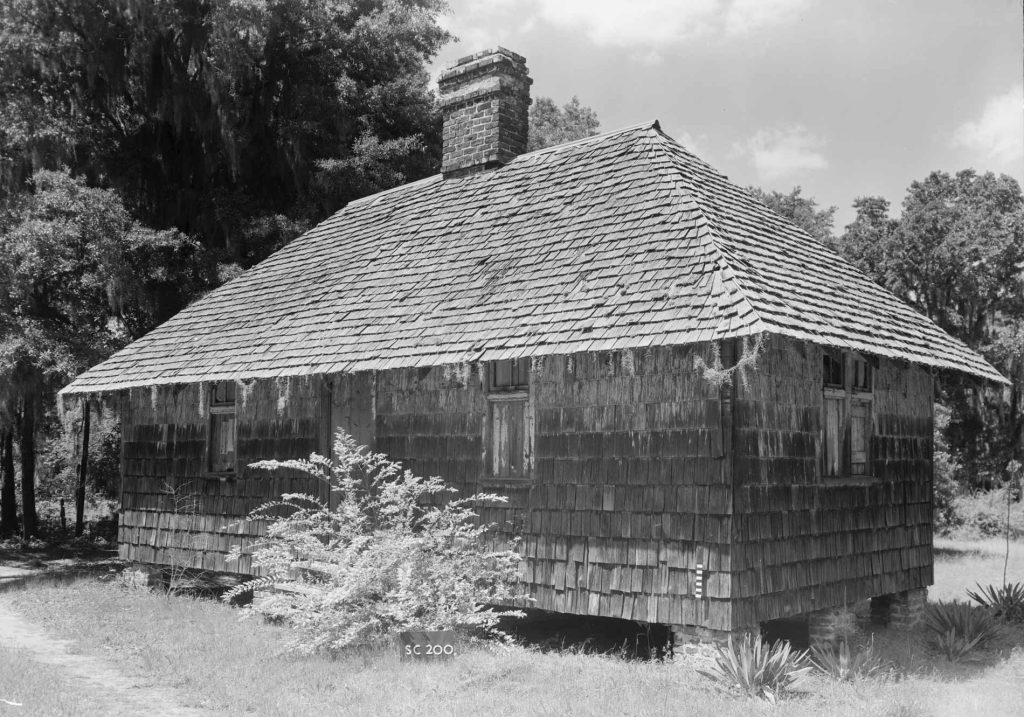
A cabin on the Hopsewee Plantation in South Carolina where enslaved people were forced to live.
Library of Congress
Indeed, one advertisement for the capture of an escaped enslaved person in the New Bern area read that “any Person…may Kill and destroy the said Slave, by such means as he or they shall think fit.” In 1829, the North Carolina Supreme Court overturned a jury’s conviction of John Mann, an enslaver who killed an enslaved Black woman named Lydia when she attempted to escape a whipping.448
Enslavers—along with anyone who attacked or killed an enslaved person—were not punishable by law or subject to penalties for this violence.449
In the Lower Cape Fear region, special courts were developed where enslaved Black people often were found guilty on a mere accusation alone. White officials publicly executed enslaved Black people accused of running away or charged with other crimes, generating terror to deter other Black people from escaping.
In 1768, after two enslaved men named Jonny and Quamino were hanged and decapitated after being charged with robbery, white officials in Wilmington put their heads on display for the public to see.450
Courts formally implemented gruesome sentences, including castrating enslaved people and burning them alive. Some enslaved people drowned themselves to avoid being tortured by the courts.451
Chapter 9
Charleston, South Carolina
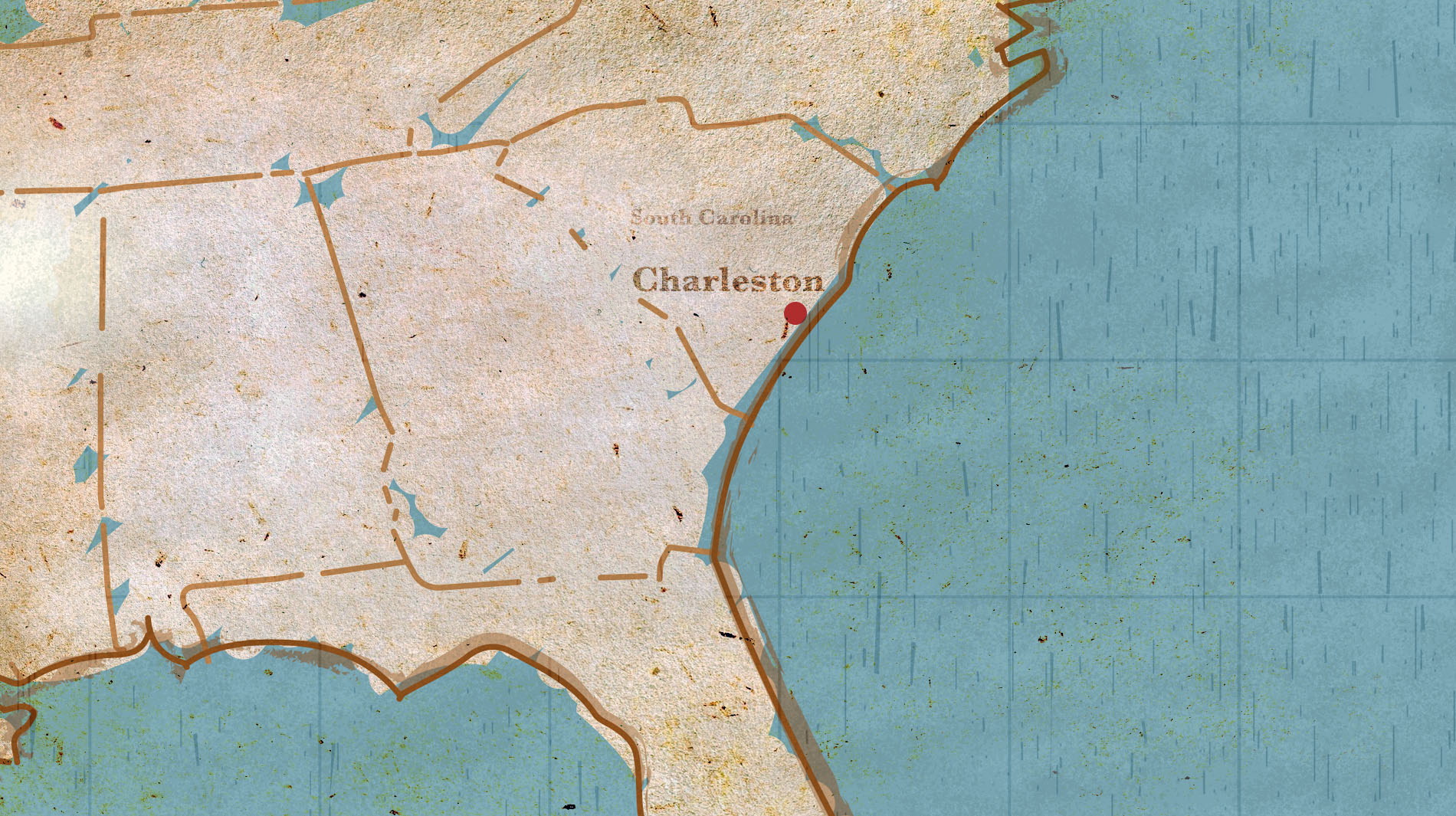
In this Chapter
- “Carolina Gold”
- Centrality of African Culture
- Wealth Through Exploitation
Charleston was North America’s largest Transatlantic Slave Trade port of entry. Nearly 150,000 kidnapped Africans—over 40% of all enslaved Africans trafficked to North America—arrived through Charleston Harbor.452
As a result, many Black Americans today can identify at least one ancestor who was trafficked through Charleston.
The arrival in Charleston was part of a brutal and traumatic journey for kidnapped Africans. Some arriving ships had lost as many as three-quarters of the kidnapped people on board during the Middle Passage.453
Those who survived could spend weeks, or even months, confined aboard ships in the port awaiting sale.454 Many died of dysentery, typhus, or other disease, and their bodies were thrown overboard into the harbor.
About one-third of kidnapped Africans who landed in South Carolina died within a year.455
Enslaved people were forced to perform treacherous work on rice plantations. African women—the principal rice growers and processors in West Africa—played a critical role in transferring rice culture to South Carolina. Other enslaved people were forced to labor in grueling conditions picking Sea Island Cotton or were “hired out” to perform tasks.
Slavery made the Lowcountry one of the wealthiest regions in the world. By 1776, Charleston was home to nine of America’s 10 wealthiest people.456 By that time, enslaved Black people made up more than 70% of the city’s population.457

White enslavers and overseers, like the one pictured here, used brutal violence and torture, often daily, to extract more labor from enslaved people.
Wikimedia Commons
Unlike any other major North American city, Charleston remained a Black-majority city through the 1850s, at which time three out of every four white families in Charleston enslaved at least one Black person.458
As the minority of the Charleston population, the white ruling class developed a “siege mentality” and deep commitment to upholding slavery and maintaining white supremacy that culminated in its violent secession from the Union.
“Carolina Gold”
In 1663, Charleston’s Lord Proprietors—English noblemen to whom King Charles II granted the land that became North and South Carolina—recruited plantation owners from the English West Indies by granting every freeman “absolute Power and Authority over his Negro slaves.” They offered prospective white settlers 20 acres of land for every Black male and 10 acres for every Black female they enslaved.459
Early settlers tried to grow tobacco, silk, olives, and indigo, but none flourished in the Carolina soil. Around 1700, settlers struck “Carolina Gold”—a strain of rice that became the colony’s major cash crop.460
Growing rice required 10 times the labor needed for other crops and incurred high mortality rates.461 As a result, Charleston started trafficking in more enslaved people than it trafficked out.462
By the middle of the 18th century, Charleston had the largest port in the lower South.463

A group of people hoeing rice fields.
O. Pierre Havens/New York Public Library
Alexander Garden, a port physician assigned to inspect slave ships for contagious disease, wrote that most of the ships coming into Charleston “had many of their cargoes thrown overboard; some one-fourth, some one-third, some lost half; and I have seen some that have lost three-fourths of their slaves.”464
All the ships he visited smelled “most offensive and noisome,” and, he wrote, were so filthy and foul from “putrid dysenteries…it is a wonder any escape with life.”465Thousands died in captivity waiting to be auctioned off.466
In 1769, Charleston residents complained to the governor:
It has been represented to me that a large number of dead negroes who have been thrown into the river, are driven upon the marsh opposite of Charles Town, and the noisome smell arising from their putrefaction may become dangerous to the health of the inhabitants of this province.467
Enslaved people died at much higher rates in the rice region than anywhere else in the South.468 Enslaved workers were brutalized, undernourished and overworked, and forced to work in standing water and mud under the brutally hot sun.
Establishing rice plantations involved draining snake- and mosquito-infested tidal swamps and marshes, building dikes by piling up mud dug from river bottoms, and installing giant gates to let fresh water flood the fields and keep out incoming tides—work so treacherous that “only people threatened by the whip” would do it.469

A man ditching rice fields on the Mulberry Plantation in South Carolina.
Lowcountry Digital Library
The cultivation of rice in the warm, wet climate created large bodies of standing water—an ideal environment for mosquito-borne diseases, especially malaria and yellow fever.470
Enslavers asserted that Black people were uniquely immune to these lethal diseases as a justification for enslavement. In reality, Black men, women, and children died in huge numbers.471
At least 55%, and perhaps closer to two-thirds, of children born on 19th-century rice plantations did not survive to age 15.472
To avoid these conditions themselves, Lowcountry enslavers and their families left their plantations for at least five or six months each year during the fever season.473 A Charleston enslaver told Fredrick Law Olmsted, “I would as soon stand fifty feet from the best Kentucky rifleman and be shot at by the hour, as to spend a night on my plantation in summer.”474
Meanwhile, enslavers and overseers employed brutal violence to force enslaved people to work. James Matthews, an enslaved man who worked on several Lowcountry plantations, described in horrifying detail the abuse—and even murder—of enslaved men, women, and children that was common practice among enslavers and their overseers.
We could hear his whip going regularly every morning. He used to lock his slaves up over night, when they did not do their tasks, and whip them before they went to work in the morning. There was on his plantation a low squat tree, with limbs stretching out close to the ground, and his common way of punishing was to lash his slaves by the hands and feet, face down, to the limbs of the tree, and then cut up their backs with a cowskin. I have seen the blood spattered on the tree when I have been over there on Sunday.
I saw a man rolling another all over the yard in a barrel, something like a rice cask, through which he had driven shingle nails. It was made on purpose to roll slaves in. He was sitting on a block, laughing to hear the man’s cries. The one who was rolling wanted to stop, but he told him if he did’nt [sic] roll him well he would give him a hundred lashes.475
Centrality of African Culture
“[T]he history of rice cultivation surrounding the Atlantic basin,” one historian wrote, “was not the outcome of European agency and ingenuity but the result of a sophisticated knowledge system of wetland cultivation brought by involuntary black migrants.”476
Lowcountry enslavers often differentiated among West and Central African cultures and deliberately sought out Africans of particular ethnicities or from particular regions.477

Jery Bennet Taylor making sweetgrass baskets outside of St. Helena Island restaurant Gullah Grub, which specializes in traditional Gullah food.
©Pete Marovich/American Reportage
West African women brought both the knowledge of how to grow rice under submersion in standing water and the knowledge of how to process rice for international markets.478
These women developed the specialized fanner baskets used for winnowing rice and the distinct cooking methods that prevent rice from clumping together. As a result, Carolina enslavers sought to traffic and enslave more women than other plantation systems.479
Enslavers’ absenteeism, together with the geographic isolation of Lowcountry plantations and the regular infusion of newly enslaved people from West Africa, “contributed to a greater degree of African cultural retention in the Lowcountry than in other North American slave societies.”480
Gullah—a language and culture that enslaved Africans along the South Carolina coast crafted from African and New World elements—was passed down to future generations.481 It thrives today, in Charleston’s rice-centric cuisine, the preservation of Gullah Geechee art, music, and spiritual traditions, and in the coiled sweetgrass baskets now sold to tourists at the Charleston City Market.482
Wealth Through Exploitation
Charleston’s economy boomed in the 1790s as enslavers began growing cotton on the Sea Islands.483 “Sea Island cotton”—a special, silky strain that was highly prized in Europe—ushered in a “second golden age” for Charleston.484
Cotton was labor intensive and required large numbers of enslaved workers, who worked in teams managed by an enslaved driver with a whip.485
Slavery made the Lowcountry one of the wealthiest regions in the world.486 By 1776, Charleston was home to nine out of 10 of America’s wealthiest white people.487
Enslaved people in Charleston were also “hired out” to work as unskilled laborers or skilled artisans for business owners, families, and the city itself. The practice of “hiring out” was so common that the City of Charleston developed a “slave badge” system to regulate hired out enslaved people.488
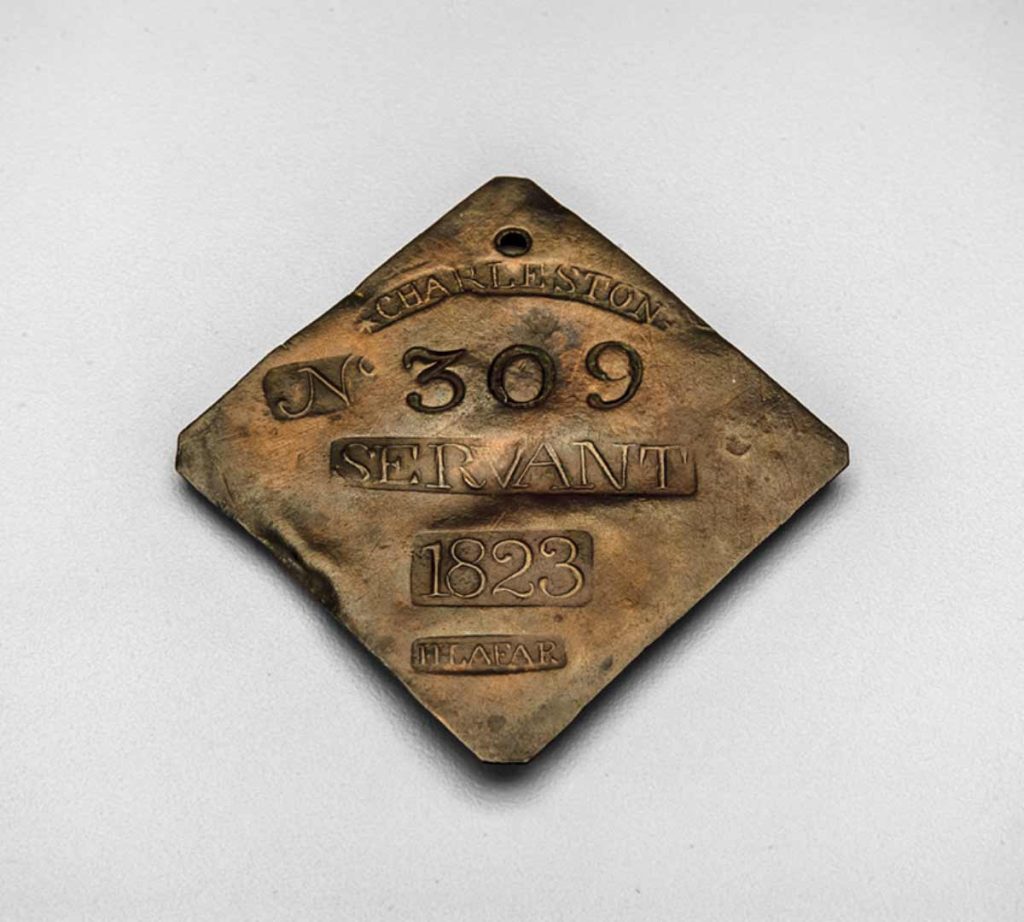
A “slave badge” from 1823.
Museum of Early Southern Decorative Arts
Oppressive laws barred enslaved people from traveling without written permission, meeting in groups, raising their own food, possessing money, using drums, horns, and other instruments, and learning to read and write, among other things.489 A regular “slave patrol” was instituted and granted the power to search slave quarters and examine plantations for compliance with the law.490
In 1786, the city required that enslaved people who worked “without a badge,” or who violated other city ordinances, be taken to the Workhouse, also known as the “Sugar House,” because it was once a sugar refinery, located near Military Hall.
“I have heard a great deal said about hell, and wicked places, but I don’t think there is any worse hell than that sugar house.”
Jim Matthews
An enslaved man later identified as Jim Matthews wrote a firsthand account published in The Emancipator in 1838.491 Mr. Matthews, who had been held in the Workhouse before escaping enslavement, explained:
Slaves are carried there to be whipped by the people in the country four or five miles round, and by all the people in the city, and the guard men carry there all the runaways they take up. Some would want their niggers whipped with the cowskin and paddled on top of that, and some with the paddle alone, because the paddle blisters and peels the skin all up. They wet the paddle, and then rub it in sand, and every time they hit with it, the skin peels off just the same as you peel a potato. When it gets well it will be right smooth, and not in knots as when whipped with the cowskin.492
He described the whipping room:
The room to do the whipping in is by itself. When you get in there, every way you look you can see paddles, and whips, and cowskins, and bluejays, and cat-o’-nine tails. The bluejay has two lashes, very heavy and full of knots. It is the worst thing to whip with of any thing they have. It makes a hole where it strikes, and when they have done it will be all bloody…You may hear the whip and paddle there, all hours in the day. There’s no stopping. As soon as one is loosed from the rope, another is ready to be put in.493
Resistance by enslaved Black people in Charleston and on nearby plantations took many forms and increased as the Civil War got underway. Enslaved people refused to go with their enslavers to Upcountry plantations, they gave aid to federal soldiers, and countless enslaved people ran away.494
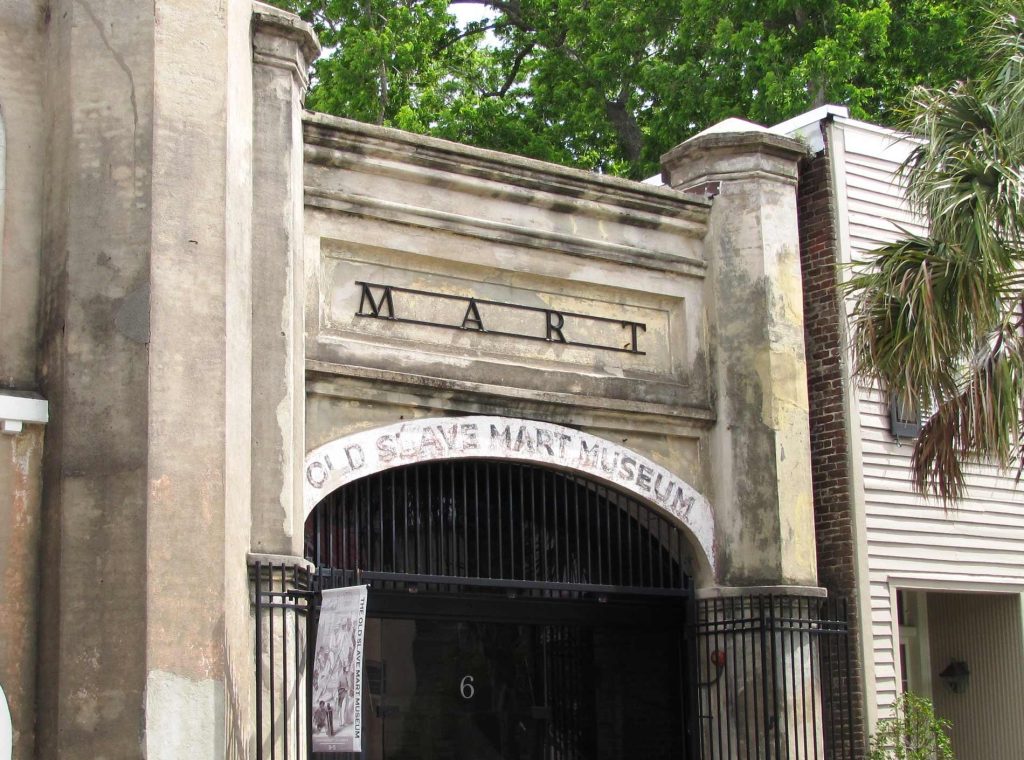
The facade of the Old Slave Mart Museum in Charleston, which was once the entrance to a slave auction gallery.
Wikimedia Commons
After Benjamin M. Holmes refused to flee with his enslavers in 1862, he was sold to a slave trader who put him in jail in Charleston’s slave-trading district, where he obtained a copy of the Emancipation Proclamation and read it to his fellow prisoners.495
Enslavers responded to resistance with even more severe violence, including whippings and other physical abuse, and even resorted to shooting enslaved people.496
Today, large plantation sites in and around Charleston draw hundreds of thousands of visitors each year.497 With few exceptions, tours primarily focus on the architecture, fine furnishings, and lavish lifestyles of white enslavers, while failing to acknowledge the violence and abuse enslaved people endured.498
Chapter 10
The Deep South

In this Chapter
- Spanish and French Trafficking
- Enslavement Conditions
- Trafficking Surges in the 18th Century
- Illegal Transatlantic Trafficking
For 300 years, white colonists trafficked enslaved people from Africa to the Deep South. As colonists from France, Spain, and Britain competed for resources, control, and profits, they killed and displaced the Indigenous people who lived in and cultivated the region. They then kidnapped Africans whose expertise and labor served as a critical resource for the growing agricultural industry.
Over generations, hundreds of ships carrying thousands of enslaved Black men, women, and children landed in ports across the Gulf from Pensacola, Florida, to Biloxi, Mississippi, to Galveston, Texas.
Spurred by large profits from cotton, sugar, rice, and other crops, Transatlantic trafficking continued in the Deep South well into the 1800s—decades after the practice was banned by Congress in 1808. The last known Transatlantic trafficking ship arrived in Mobile Bay just over 160 years ago, in 1860.
Spanish and French Trafficking
In the 1500s, Spanish colonizers began trafficking enslaved Africans to areas across the Deep South, stretching from the Georgia coast, down around Florida, and along the Gulf Coast to Texas.499
Enslaved Black people were forced to assist with exploratory missions and help establish outposts and build fortifications along the Mississippi River that were critical to the region’s growing economy.500
French traffickers began transporting enslaved Africans to the Deep South in the 1700s. Upon arriving in the Gulf Coast region, French settlers first enslaved local Indigenous people, but soon began trafficking thousands of enslaved Africans, whom they viewed as easier to control and exploit because they were displaced in an unknown and unfamiliar land.501
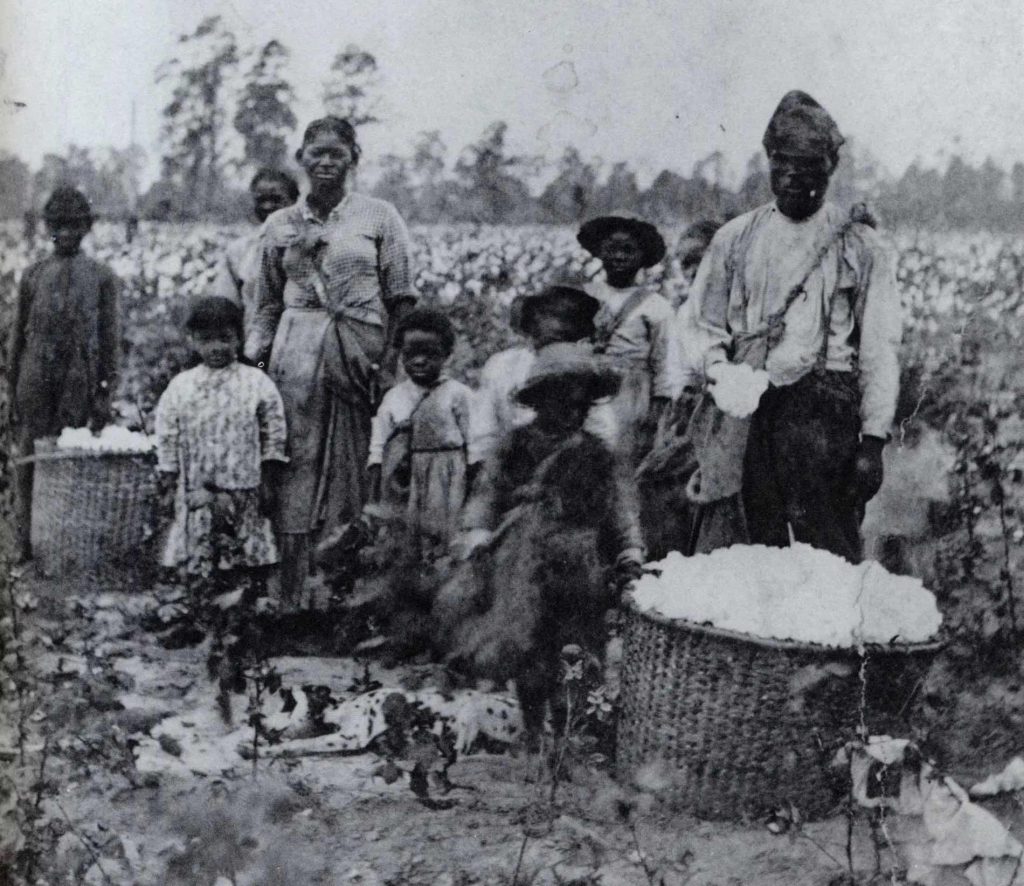
An enslaved family picking cotton outside of Savannah, Georgia.
New York Historical Society
In 1721 alone, nearly 2,000 enslaved Africans were trafficked to the ports of Biloxi, Mississippi, and Mobile, Alabama.502
Within 10 years, the number of enslaved Africans in the French colony that encompassed modern-day Louisiana and parts of Alabama and Mississippi reached nearly 3,400—double the population of white colonists.503
By 1763, French settlers enslaved around 6,000 Africans in their North American colony.504
Enslavement Conditions
Many enslaved Africans held captive in present-day Louisiana, Mississippi, and Alabama were forced to work in the dangerous timber industry. In Mobile, French settlers forced enslaved Africans into swamps to cut down cypress trees that could be used for roofing shingles.505
In Louisiana, white colonizers forced enslaved Africans to make tar, a task requiring months of work felling and splitting pine trees, which were then burned in large stacks over a series of interconnected pits that had to be dug by hand.506
Enslavers coerced labor by withholding food, clothing, and shelter, and by relying on horrific violence to terrorize enslaved people.507
In 1727, after an enslaved African man named Choucoura returned after being absent for two days from a farm in Louisiana, he was whipped 600 times.508 His hands were then bound so tight that his circulation was cut off, gangrene set in, and he lost several fingers.509
Conditions were similarly grim in Georgia, where white American colonists enslaved thousands of kidnapped people from Africa. Throughout much of the 18th century, the colony of Georgia had nearly as many enslaved Black people as white colonists. In 1773, for example, the colony had 15,000 enslaved Black people and 18,000 white colonists.510
In some places, enslaved Black people greatly outnumbered colonists. In Liberty County, Georgia, there were 4,000 enslaved Black people in 1790 and only 1,303 white colonists.511
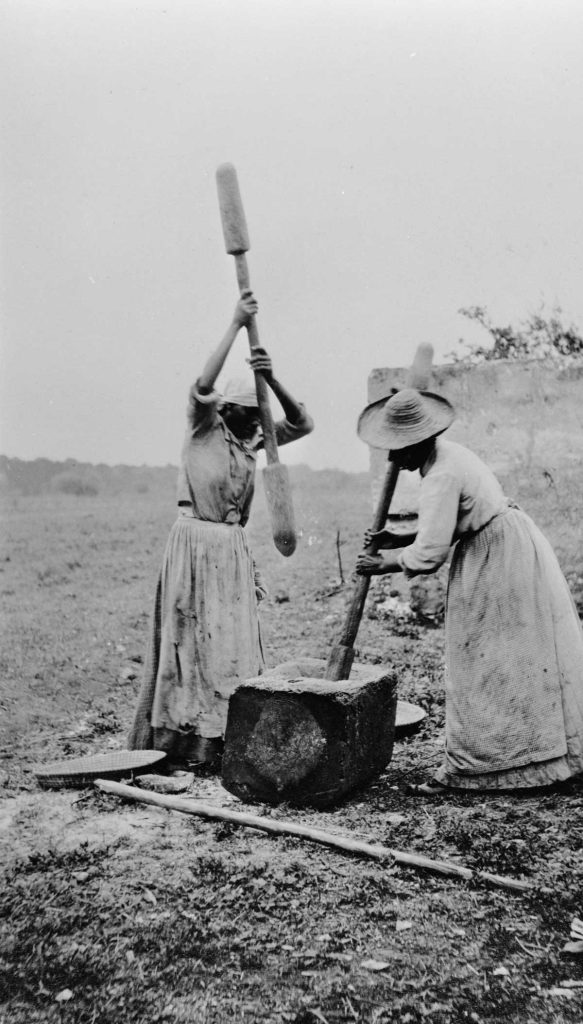
Two women hull rice on Sapelo Island, Georgia, ca. 1900.
Courtesy, Georgia Archives, Vanishing Georgia Collection, sap093
Many of the thousands of enslaved Black people in Georgia were forced to work in rice production.
Plantation owners along the Georgia coast sought to enslave African people who had been taken from the “Rice Coast” and “Grain Coast” of West Africa that stretches from modern Senegal to Sierra Leone.512 The enslavers hoped these kidnapped people would have special expertise in growing rice, the primary cash crop on Sapelo Island and the other Georgia sea islands, and along the rivers winding through the Georgia Lowcountry.513
Growing rice was exceedingly difficult, demanding, and time-consuming.
Enslaved Africans were forced to dig ditches, build devices to flood and drain the ditches, plant the rice, harvest it, and then process it—a cycle that, from start to finish, lasted the entire year.514
Generally, though not exclusively, women were forced to plant and harvest, which required long periods of standing knee-deep in cold, swampy water, while men were forced to perform carpentry and related labor to flood and drain the canals.515
As a result of the grueling work and harsh swamp environment, the mortality rate among enslaved Black people on rice plantations was incredibly high.516

A group of men working in the rice fields of the Mulberry Plantation in South Carolina in 1916.
Historic Charleston Foundation
Though its agricultural infrastructure was less developed and it had fewer plantations, Florida still housed a significant number of enslaved Black people. Under Spanish rule, everyone “legally” trafficked into Florida was branded, including hundreds of children.517
One source documents the trafficking of a five-year-old named Melchora, a nine-year-old named Vizente, and a 10-year-old named Antonio, each of whom had an enslaver’s brand burned into his skin when he arrived in Florida in 1752.518
Children trafficked into Florida often bore signs of abuse. In the leger documenting their registration, Vizente was noted as having a broken nose and Antonio a “very broken” nose.519 Of the 204 people trafficked to Florida and registered in 1752, more than 120 were children.520
Trafficking Surges in the 18th Century
The British and Spanish took control of much of the Deep South starting in the mid-1700s, and they increased human trafficking significantly. Between 1767 and 1776, the British trafficked 1,427 kidnapped Africans, with hundreds dying en route, to St. Augustine, Florida, and hundreds more were forced into slavery in Pensacola, Florida.521
When these areas were placed under Spanish control after the Revolutionary War, the Spanish continued to encourage the trafficking of kidnapped Africans. In 1782, Spain liberalized trade in its colonies by permitting a period of duty-free importation, which accelerated the trafficking of enslaved people across the Atlantic.522

A family on the Kingsley Plantation on Fort George Island in Jacksonville, Florida.
State Archives of Florida, Florida Memory
By 1785, there were more than 16,544 enslaved African men, women, and children in Louisiana and West Florida, which encompassed present-day Alabama and Mississippi, and only 14,215 white people.523 Just three years later, the number of enslaved Africans had risen by 30%, to 21,645 enslaved Black people.524
After the Revolutionary War ended in 1783, white Americans seeking wealth at any cost pushed further west into land occupied by Indigenous people and deeper into Spanish-controlled Louisiana and Florida.
This land grab by white Americans, coupled with the Indigenous genocide, created an opportunity for white “settlers” to profit by cultivating large swaths of land—land that, in many instances, they paid nothing to obtain.

Children on a Louisiana sugarcane plantation, ca. 1885.
Schomburg Center for Research in Black Culture, New York Public Library
Rather than working the land themselves, white colonizers enslaved and trafficked into the region thousands of enslaved Black women, men, and children, forcing them to labor in devastating and violent conditions on plantations. This practice accelerated after the Louisiana Purchase in 1803 and Florida’s incorporation as an American territory in 1821.
Technological advancements, namely the invention of the cotton gin, magnified potential profits and led to the development of huge plantations that required ever more enslaved Black people.525
The cultivation of sugar, mainly in Louisiana, and cotton, which was more widespread, created financial incentives for the growth of complex plantation systems and further exploitation of Black people throughout the Deep South.526
Harvesting and processing sugar cane required back-breaking field work to cut the stalks, strip leaves, and clear away unripe portions of the plant.527 At the same time, the sugar had to be boiled day and night after the sugar cane went through a mill, requiring enslaved Black people to work through the night after long days of devastating labor in the fields.528
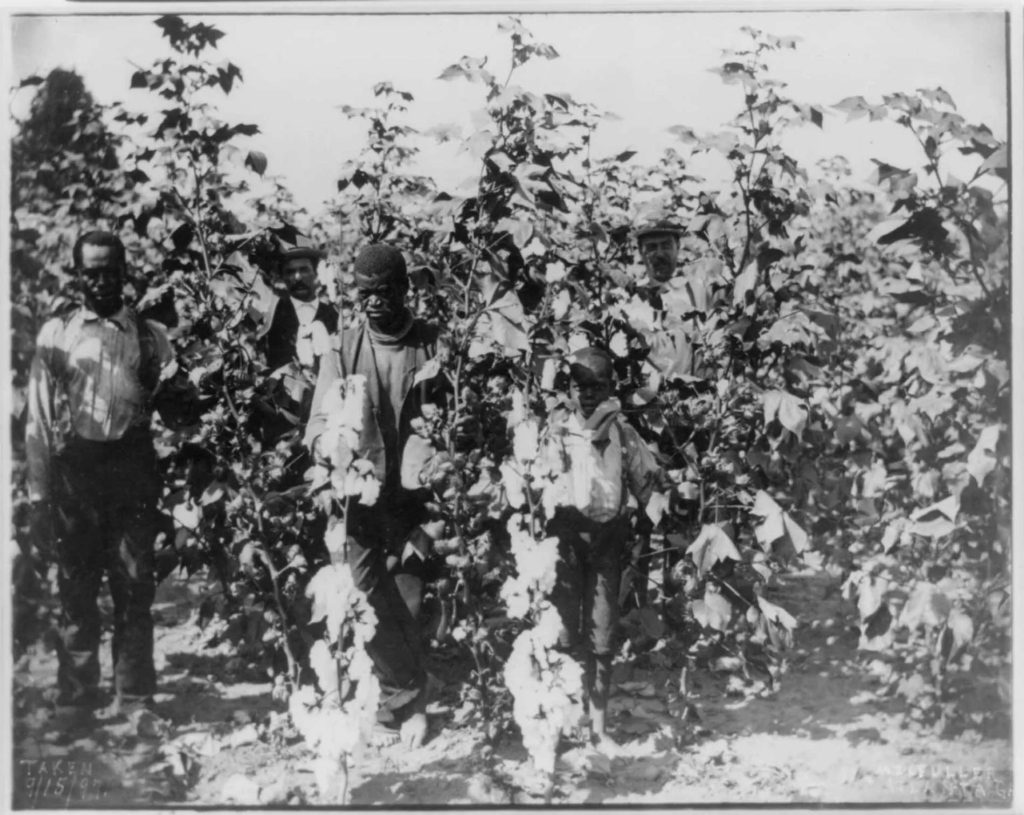
A group of Black men and boys picking cotton on a plantation in Atlanta, Georgia.
Library of Congress
Growing cotton was similarly grueling, particularly at harvest when timing was critical to ensure the quality of the crop. White enslavers added to the brutality of the season by using violence to force productivity gains, meting out whippings and other forms of physical torture, often daily, when enslaved Black people did not meet production quotas.529
Enslaved Black people were lashed “until the blood ran out of [their] shoes.” “My clothes were all full of the blood that flowed from my own body.”530
As the production of cash crops was taking off in the late 1790s and early 1800s, states began to prohibit the Transatlantic Slave Trade, and in 1808, Congress abolished Transatlantic trafficking altogether.
To meet the surging demand for enslaved workers, enslavers in the Deep South turned to North America’s growing Domestic Slave Trade and intensified their efforts to coerce reproduction through sexual violence.531
As Harriet Jacobs, an enslaved mother of a premature baby, later recalled, her enslaver “did not fail to remind me that my child was an addition to his stock of slaves.”532
Illegal Transatlantic Trafficking
Transatlantic trafficking voyages continued for decades after Congress banned the international slave trade in 1808. Neither the states nor the federal government did much to enforce the ban and traffickers actually found ways to profit from it.
When the government offered rewards to informants who reported illegal trafficking, traffickers reported themselves, collected their rewards, and allowed customs officers to confiscate illegally imported Africans. The traffickers then purchased the same enslaved men, women, and children at government auctions, where they received legitimate ownership titles that allowed them to charge their buyers top dollar for each enslaved person.533
Federal court records alone, which arose from enforcement efforts and thus constitute a significant undercount, indicate that traffickers captured and “attempted to deliver” to the U.S. somewhere “between 4,106-4,213” kidnapped Africans between 1810 and 1821, and some estimates are as high as 14,000.534
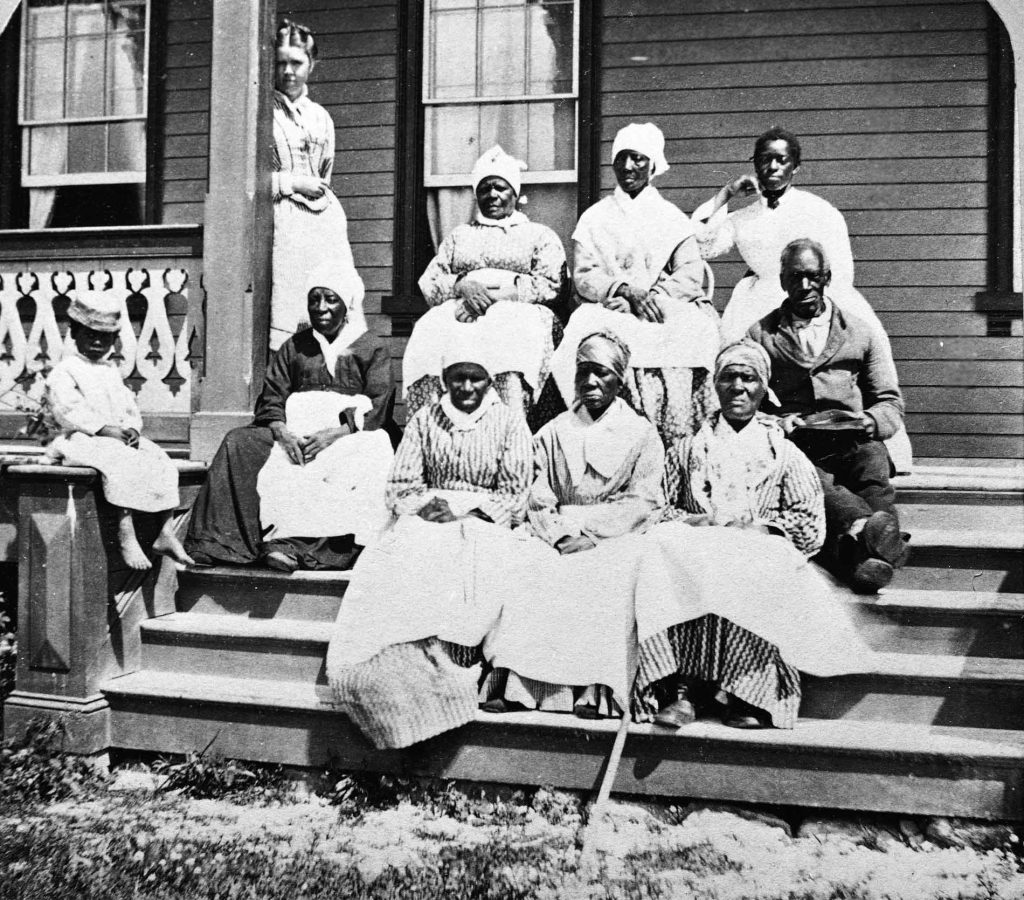
A group of enslaved people and a white woman sit outside the Florida Club in St. Augustine, Florida.
Hulton Archive/Getty Images
Amelia Island, off the coast of Florida, was a popular destination for illegal trafficking voyages.535 Though Florida was a Spanish colony at the time, Americans were involved at every stage as investors, captains, and purchasers.536 Many kidnapped Africans disembarked at Amelia Island and were taken by river and overland to Georgia and other parts of the Deep South, where they were enslaved permanently.537 Another common route for the illicit trade was through the bayous and marshes near the Gulf Coast cities of Pensacola, Florida, and New Orleans.538
Some illegal human trafficking was carefully concealed. But many traffickers brazenly flouted federal law. In 1858, the Wanderer landed near Jekyll Island, one of Georgia’s barrier islands.539
The voyage was organized by a number of wealthy and prominent white businessmen and enslavers who worked together to convert a yacht into a ship that would hold kidnapped Africans.540 The ship was retrofitted with a hidden deck and a 15,000-gallon freshwater tank.541
Two of the investors, William Corrie of Charleston and Charles Augustus Lafayette Lamar of Savannah, sailed the vessel from New York to the Congo River, where they conspired with a New York firm to purchase 487 kidnapped Africans.542
Lamar exemplified their defiant perspectives; he believed that continued Transatlantic trafficking was a “Southern Right” and dared federal officials to stop him. “I will re-open the trade in slaves to foreign countries—let your cruisers catch me if they can,” he declared prior to the voyage.543
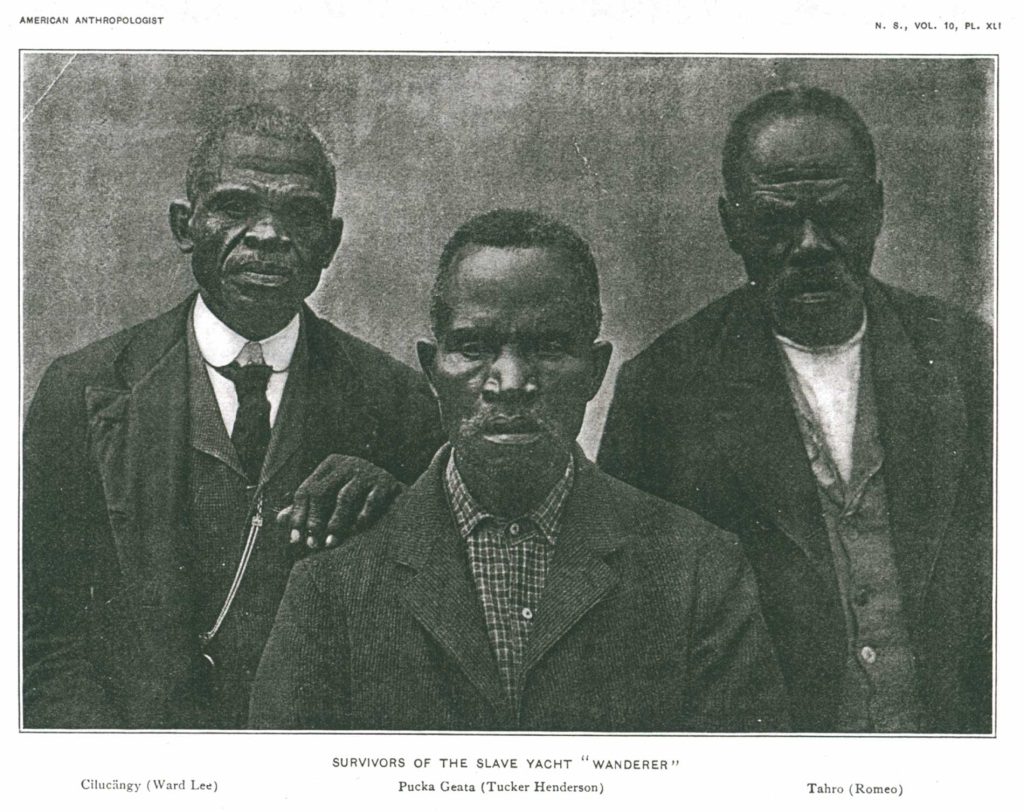
Three survivors from the Wanderer, a ship used to traffic nearly 500 kidnapped Africans to the U.S.
American Anthropologist
After the journey through the Middle Passage killed 80 enslaved Africans, the ship docked at Jekyll Island, where the DuBignon family, traffickers based in Georgia, coordinated sales and arranged for kidnapped Africans to be shipped across the South to Alabama, Louisiana, South Carolina, and other parts of Georgia.544
After the Wanderer landed, President James Buchanan sent a secret agent to investigate the extent of illicit trafficking.545 The agent traveled throughout the Deep South and heard many accounts of recently landed enslaved Africans.546 But in his report to the Secretary of the Interior, the agent discounted the clear evidence of illegal trafficking he obtained and asserted falsely that “it requires the exercise of a large credulity to believe that even one” ship had arrived from Africa since the Wanderer in 1858.547
In fact, between 1857 and 1859, 24 American ships were captured either in the U.S. or close to the port where enslaved Black people boarded the ships.548
The last known ship to dock in the U.S. carrying people kidnapped in Africa was the Clotilda, which arrived at Alabama’s Mobile Bay in 1860.

Abache and Cudjoe Kazoola Lewis, two survivors of the Clotilda trafficking ship.
Wikimedia Commons
Efforts to curtail the illicit trafficking of enslaved Africans gained steam just before the Civil War.549
In 1860, the U.S. Navy seized three ships carrying more than 1,400 kidnapped Africans total.550 The kidnapped Africans disembarked in Key West, Florida, where the Navy left them languishing in horrific conditions for 12 weeks. Nearly 300 Black people died and were buried on what is now Higgs Beach.551 Those who survived were sent to Liberia on the same ships that trafficked them to Florida. Hundreds more died during the journey.552
Transatlantic trafficking of kidnapped Africans to the Deep South did not end until after the Thirteenth Amendment abolished slavery in the U.S.—“except as punishment for crime.”
Landowners, mining companies, and state and local governments exploited that loophole to create the convict leasing system, which captured free Black people and forced them to work without pay under horrific and often deadly conditions.
The convict leasing system—which historians have called “worse than slavery”—lasted well into the 20th century.553 Most significantly, the myth of white supremacy spawned to justify the practice of race-based slavery, survived the formal abolition of slavery and the Transatlantic Slave Trade and continues to shape attitudes and institutions in the Deep South.
Chapter 11
Savannah, Georgia

In this Chapter
- Trafficking in Savannah
- Urban Enslavement
- “The Weeping Time”
- Legacy of Enslavement
Savannah, Georgia’s oldest city, was founded in 1733 in part to prevent enslaved Black people in South Carolina from escaping to Spanish Florida.554
Enslavement was technically prohibited in Georgia until 1751, but the law was frequently ignored. Indeed, enslaved people were brought to Savannah almost immediately after its founding.555 Georgia legalized slavery in 1751, and by 1755, enslavement was codified as a permanent, hereditary, and race-based status.556
The desire to exploit the knowledge and labor of Africans skilled in cultivating rice meant that, by 1771, 86% of enslaved people trafficked into Savannah had been kidnapped directly from Africa.557
By 1790, enslaved Black people made up more than three-quarters of the population in Chatham County, where Savannah is located.558
After Transatlantic trafficking was abolished in 1808, Savannah became a hub for the Domestic Slave Trade.
In Savannah, Black people were enslaved by white citizens and companies, as well as by the city government itself. Life for enslaved people in the city was governed by restrictive laws and inhuman treatment.
Trafficking in Savannah
In 1733, English colonizers led by Gen. James Oglethorpe arrived in modern-day Savannah and founded a new colony strategically located to prevent enslaved people in South Carolina from escaping to Florida, where the Spanish had offered them freedom in order to weaken and undermine the English colonies.559
The Georgia colony, with Savannah as its chief city and port, officially outlawed slavery in its royal charter.560 But shortly after Oglethorpe and the first colonists arrived, enslaved people were “borrowed” or “hired” from South Carolina enslavers felled trees, built fortifications, and helped construct Savannah.561 A decade later, enslavers were illegally but openly selling enslaved people in the city.562
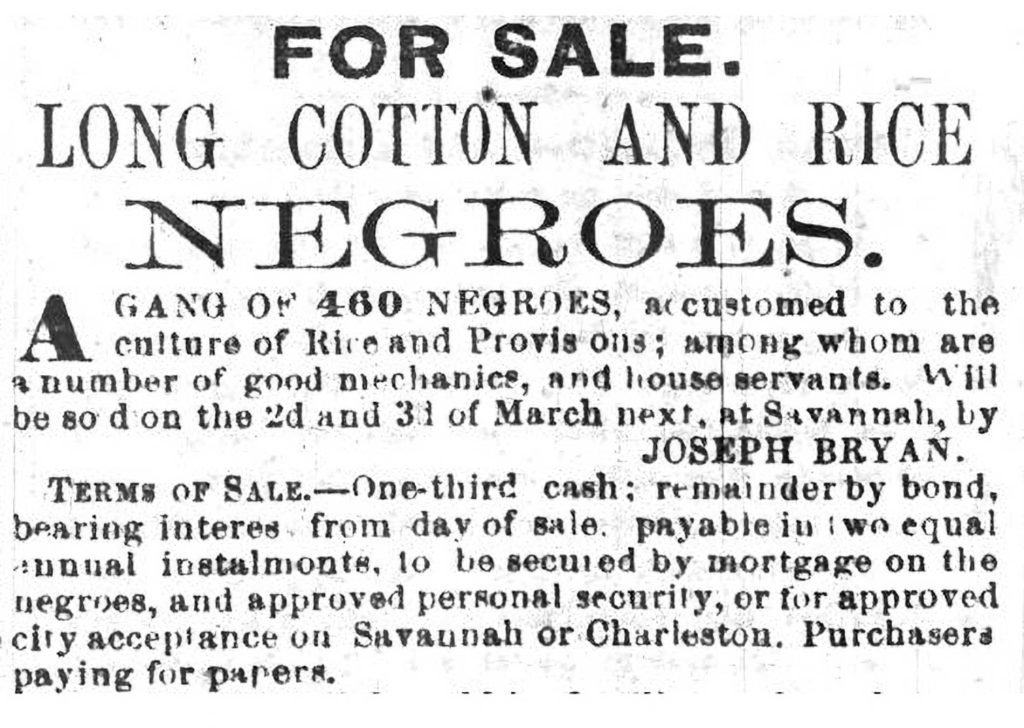
An advertisement for a two-day auction of enslaved people, published on February 8, 1859. The auction was one of the largest in history; nearly 500 enslaved people were sold for $303,850— roughly $9.4 million today.
The Savannah Republican
From the outset, white settlers determined to emulate South Carolina’s success in exploiting enslaved workers for enormous profits563 lobbied the trustees who governed the Georgia colony to allow slavery, sending letters and signing petitions.564
The colonists’ and planters’ efforts bore fruit and, in 1751, the legal ban on slavery was officially lifted. Four years later, Georgia formally codified hereditary race-based slavery, declaring that “Negroes, Indians, Mulatos, and Mestizos” who were not already free, as well as “all their Issue and offspring Born or to be Born,” were thereafter “deemed Absolute Slaves.”565
Savannah became a major hub for Transatlantic trafficking and trading between the Caribbean and the North American colonies. Between 1749 and 1773, the number of enslaved people in Georgia rose from several hundred in 1749 to around 16,000 in 1773, when Georgia’s white population reached about 18,000.566

A Black family stands outside the Hermitage Plantation in Savannah, Georgia.
Library of Congress
Between 1751 and 1767, nearly two-thirds of the enslaved people trafficked into Savannah were from the Caribbean and a quarter were kidnapped directly from Africa’s west coast.567 But by 1771, 86% of the enslaved people arriving in Savannah’s port were trafficked directly from Africa under horrific conditions.568
In April 1766, the Mary Brow arrived in Savannah. One of the first ships to bring enslaved African people directly from the African continent,569 it departed from the island of Saint-Louis, off the coast of present-day Senegal, with 106 captive Senegalese people in its hold.570 During the two-month-long voyage across the Atlantic, 28 kidnapped Africans died.571
Over the decades that followed, more than 100 slave trafficking ships arrived in Savannah to meet the growing demand for Africans skilled in rice and grain cultivation to work on Georgia’s rice and grain plantations.572 So many people were trafficked to Savannah that, by 1790, enslaved people made up three-quarters of Chatham County’s population.573
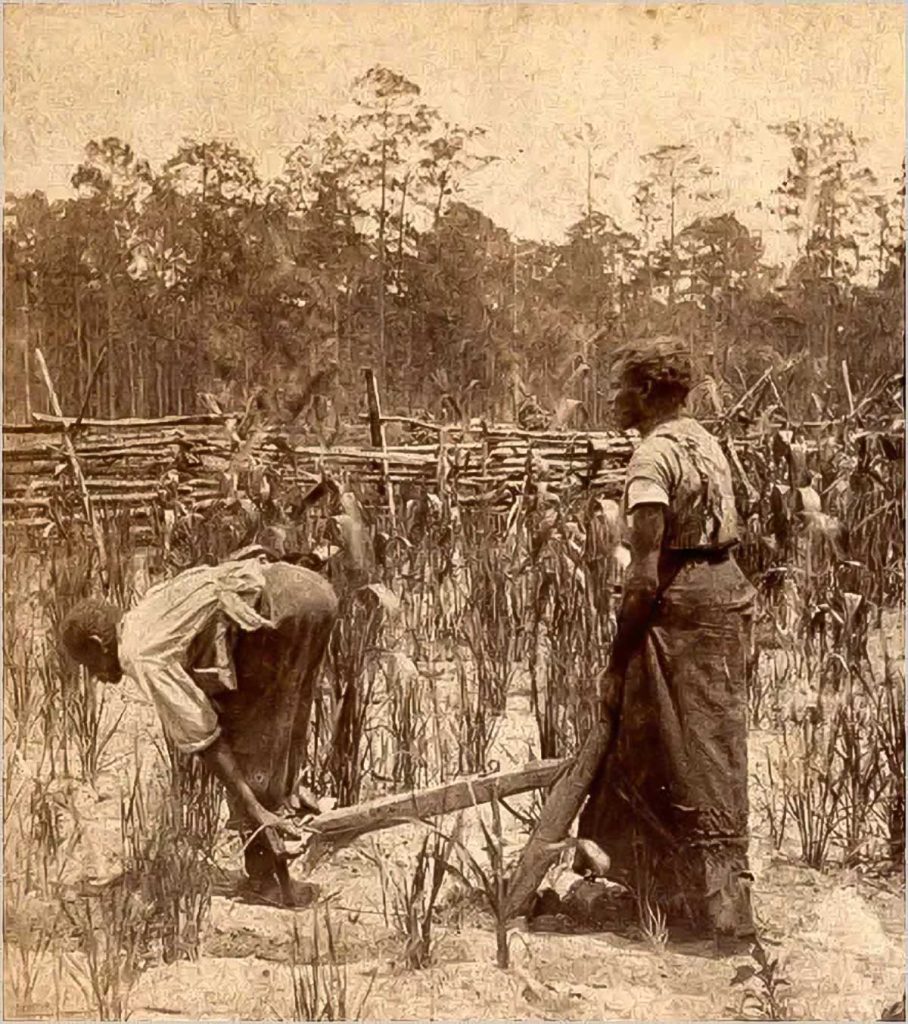
Two people working in a rice field near Savannah, Georgia, ca. 1855.
GHS 1361-SG, Georgia Historical Society stereograph collection, Courtesy of the Georgia Historical Society
Urban Enslavement
Most of the people trafficked to Savannah were sold to plantation owners outside the city, but some were enslaved in the city by white families, companies, and the city government.574
City officials used enslaved people in the scavenger department, where they cleaned dead animals and debris off the streets and cleared weeds and brush in public spaces.575
Some enslaved Black people were permitted to grow small amounts of vegetables and trade them in Savannah, but this limited independence was the exception.
City ordinances tightly controlled almost every aspect of daily life for enslaved people living in Savannah.
Enslaved people were forbidden to meet together without white supervision or prohibited from engaging in “idleness, gaming, drinking, and other misbehavior.”576
They were not allowed out after curfew without a pass or a ticket unless they were with a white person, and anyone caught out after the curfew bell rang across the city at 8 pm in the winter and 9 pm in the summer could be arrested.577
“The Weeping Time”
In 1798, Georgia followed the lead of other Southern states and banned the international slave trade in order to cut off the supply of kidnapped Africans and inflate the value of kidnapped Africans already enslaved in the state.578
As a consequence, Savannah became a central hub in the Domestic Slave Trade,579 with major auction sites in Johnson Square and other prominent locations to serve the region’s plantation owners.580
In fact, one of the largest auctions of enslaved people in American history occurred in Savannah.581
Pierce M. Butler, a well-known plantation owner who enslaved nearly 900 people, had gambled himself into debt and was ordered to settle his debts by selling the men, women, and children he enslaved.582
Local and national newspapers were filled with advertisements drumming up interest for the auction. Traffickers and tourists “from as far as Louisiana” came to participate in the horror.583
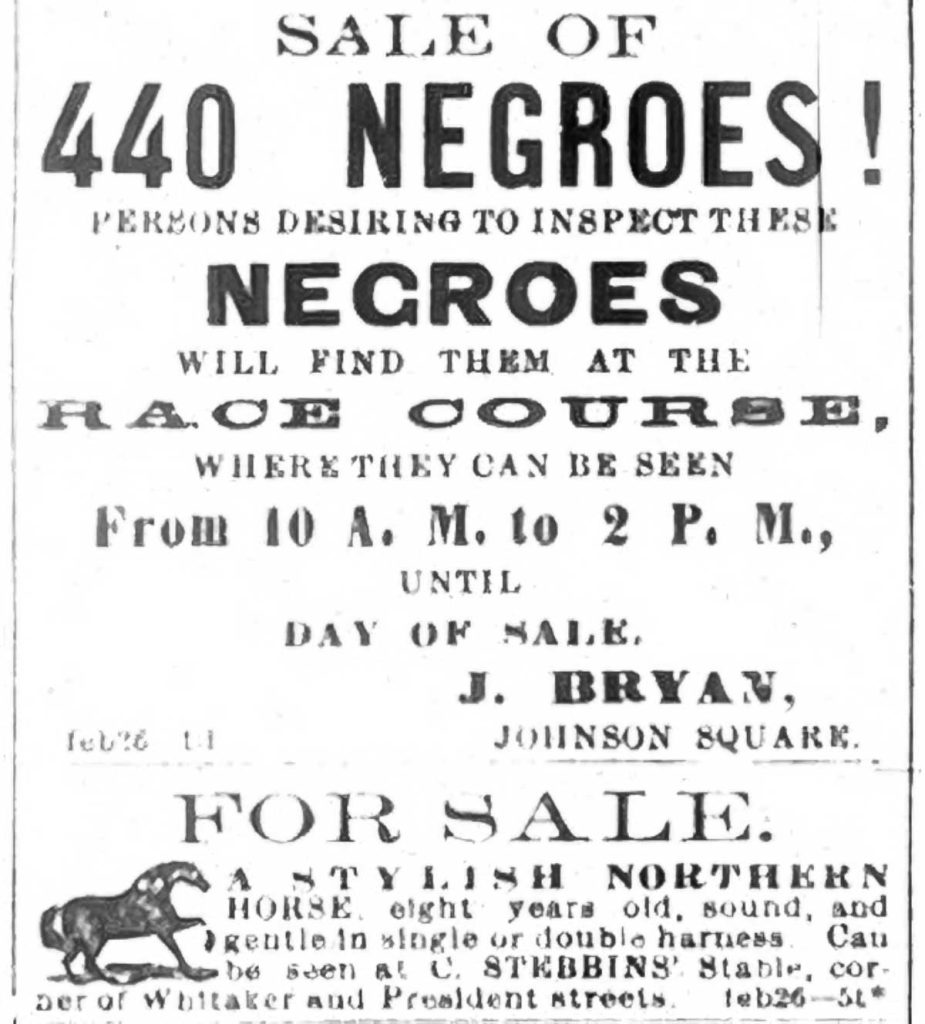
An ad announcing the planned auction of nearly 500 enslaved people in Johnson Square in Savannah. Joseph Bryan, a notorious slave trader, ran ads like this one for several weeks ahead of the auction to publicize it.
Savannah Daily Morning News
Over two days in March 1859, buyers turned out in the pouring rain to bid on more than 430 enslaved people at a race track in Savannah.
Mortimer Thomson, a Northern journalist posing undercover as an interested buyer, wrote that the enslaved people wore “expression[s] of heavy grief.”584 Others “sat brooking moodily over their sorrows, their chins resting on their hands, their eyes staring vacantly, and their bodies rocking to and fro, with a restless motion that was never stilled.”585
Enslaved people were “stuffed into the horse and carriage stalls at the racetrack”; “pok[ed],” “prodd[ed],” “pinch[ed]”; and the prospective buyers “jok[ed] and ma[de] lurid comments at some of the female slaves,” even those carrying children. Thomson wrote that the men’s comments toward enslaved women were “emphasized with profanity, and mingled with sayings too indecent and obscene to be even hinted at.”586
He recounted the story of Jeffrey, an enslaved man who tried to convince a prospective enslaver to buy him and his fiancée so they would not be separated, but the buyer refused.587
So many dozens of families were broken apart, sold off to toil in brutal bondage far from their loved ones, that the auction was called “The Weeping Time.”
Legacy of Enslavement
When Union Gen. William T. Sherman reached Savannah in 1864, enslaved people were overjoyed. Many simply walked away from their enslavers’ homes. Some stayed and did the things they’d never been allowed to do, such as visiting the park and sitting in the sun.588
Savannah remained a Black-majority city well into the 21st century.589
But white residents were so effective at using legislation and racial terrorism to suppress Black voters that Savannah did not elect its first Black mayor until the 1990s or inaugurate a majority-Black city council until 1999.590
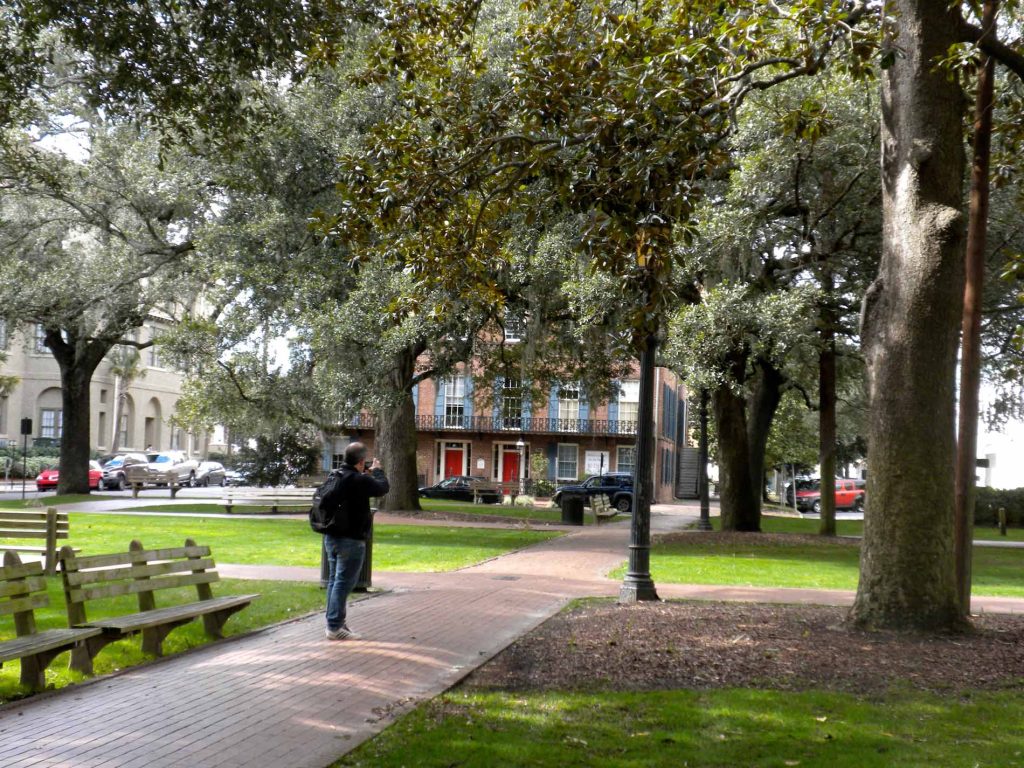
Johnson Square in Savannah, Georgia—the city’s oldest and largest square—where hundreds of enslaved people were separated and sold away from loved ones.
Wikimedia Commons
In the 21st century, Savannah has undertaken efforts to remember the people who were enslaved in the city and surrounding area.
In 2007, nearly 150 years after the infamous Butler auction separated hundreds of enslaved people from their children, spouses, and other relatives, the Georgia Historical Society and the City of Savannah erected a marker commemorating “The Weeping Time.”591
Chapter 12
New Orleans, Louisiana
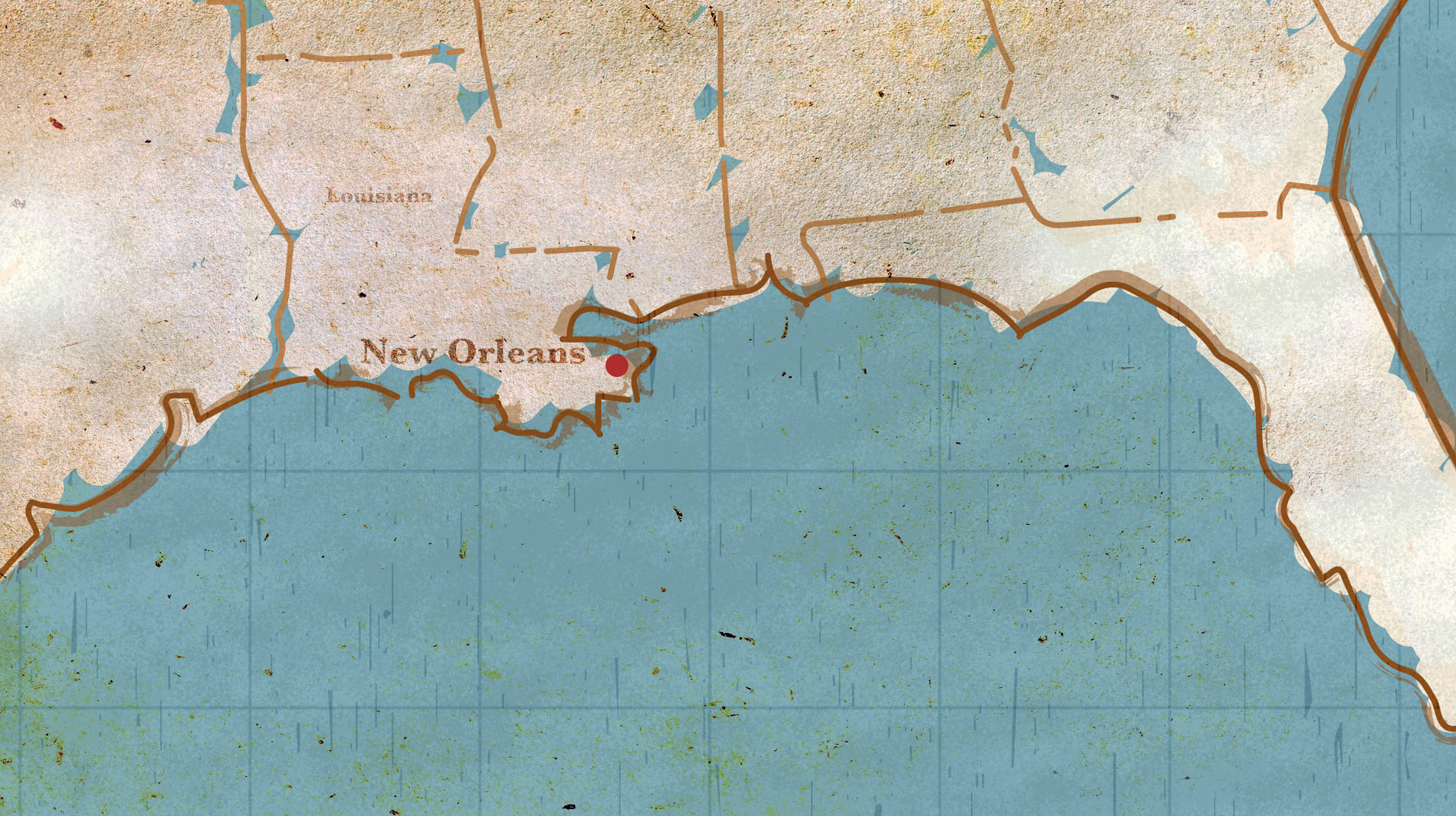
In this Chapter
- A City Built on Trafficking
- Brutal Conditions
- Resistance and Violent Response
New Orleans’s economy and, indeed, its very existence depended on slavery.592
Founded in 1718, New Orleans was controlled by the French and Spanish before Louisiana joined the United States in 1803. Under all three powers, New Orleans was an active and profitable center for the Transatlantic Slave Trade.
Enslaved people in New Orleans were kidnapped from many parts of Africa, including from modern-day Senegal, Gambia, Liberia, Ivory Coast, Ghana, Togo, Benin, Nigeria, Cameroon, and the Republic of Congo.593 All told, more than 102 ships carrying over 21,000 kidnapped Africans arrived in Lower Louisiana.594
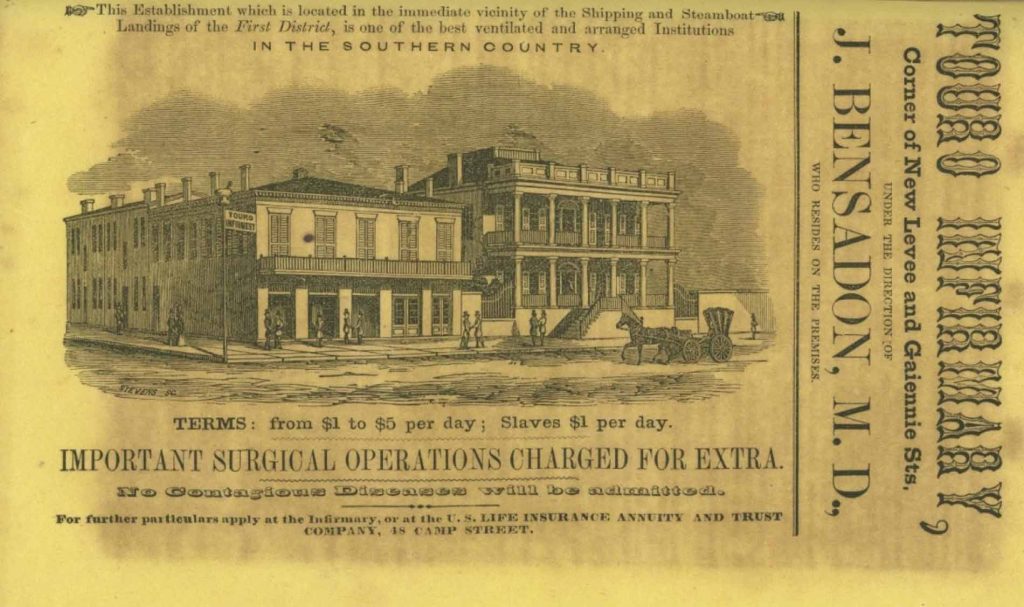
An advertisement for Touro Infirmary in New Orleans, a hospital that still operates today. At one point, 45% of the infirmary’s patients were enslaved people. The infirmary’s doctors also provided warranties—such as clean bills of health—to protect the sellers of enslaved people from being sued if the person got sick later on.
The Historic New Orleans Collection
Kidnapped Africans trafficked into New Orleans were enslaved on nearby sugar and cotton plantations. Some were enslaved by the city government, which relied heavily on enslaved Black labor to build the infrastructure that New Orleans needed to thrive as a commercial port.
Enslaved Black people dug drainage canals along the river, laid down streets, cleared forests, and constructed levees to protect the city.595
Black people enslaved by the city were forced to clear roads, collect garbage, and maintain city services.596 In the late 1700s, enslaved Black people twice rebuilt the city after devastating fires.597
A City Built on Trafficking
The French controlled Louisiana from 1719 to 1731, and during that time, the majority of Africans trafficked to Louisiana were from the Senegambia region of West Africa, a stretch of land between the Senegal and Gambia Rivers598 of great geographical significance to the African continent.599
At least 1,367 kidnapped Africans died during the Middle Passage to Lower Louisiana.600 In 1720, 260 kidnapped Africans were killed on a single trafficking voyage when the ship carrying them across the Atlantic Ocean burned.601
In 1731, France granted the Company of the Indies a monopoly contract with exclusive rights to traffic enslaved Black people into Louisiana.602 The company preferred closer ports in the Caribbean, and only a limited number of ships arrived in New Orleans. As a result, enslavers in New Orleans began purchasing kidnapped Africans illegally from English traders.
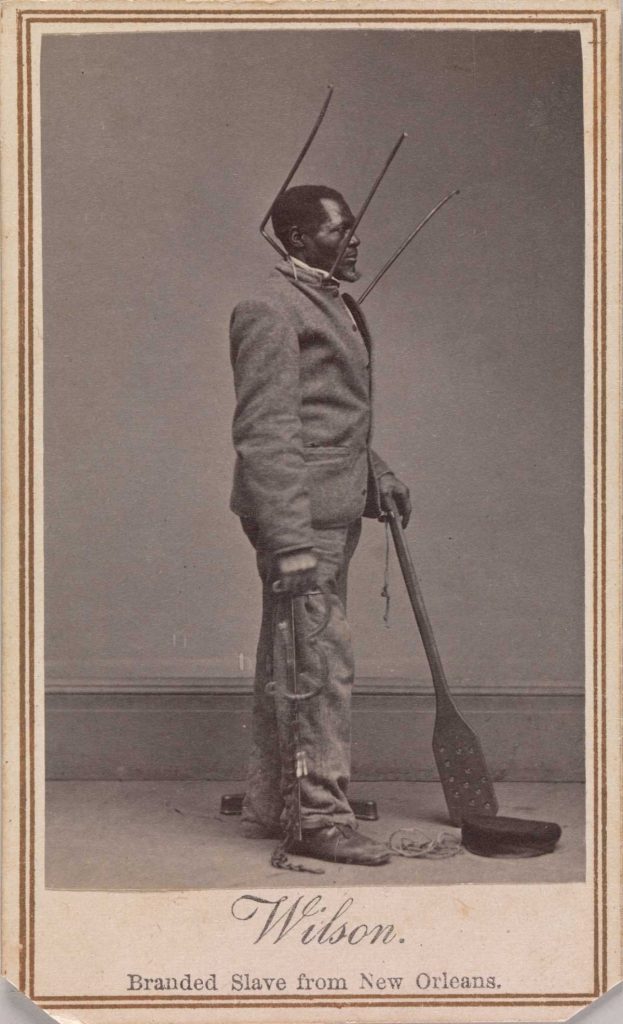
A card published by Harper’s Weekly on January 30, 1864, featuring an enslaved man named Wilson who was around 60 years old. The editors noted that Wilson’s former enslaver, a sugar planter in New Orleans named Volsey B. Marmillion, “was accustomed to brand his negroes, and Wilson has on his forehead the letters ‘V.B.M.’”
Public Domain
By 1748, English traffickers were supplying several thousand enslaved Black people to the Americas, and they were eager to expand into New Orleans and other restricted markets in Spanish and French colonies where demand for enslaved Black people was high.603
The Spanish assumed control of Louisiana in 1763, and human trafficking to Louisiana through the Caribbean increased. Between 1772 and 1776, at least 16 ships trafficked enslaved people to Louisiana from Jamaican ports.604
In 1776 alone, six ships arrived from Jamaica,605 and by 1787, half of all kidnapped Africans departing Kingston, Jamaica, were bound for Louisiana. At least 15,000 Black people were trafficked to Louisiana while it was under Spanish rule.606
After the U.S. acquired New Orleans through the Louisiana Purchase in 1803, trafficking to New Orleans accelerated at an unprecedented pace. Historians estimate that as many enslaved Black people were trafficked to New Orleans between 1803 and 1810 as in all previous years combined.607
Between 1804 and 1808, at least 55 ships trafficked enslaved Black people to New Orleans from Africa and other U.S. port cities.608
In 1807, at the height of Louisiana’s slave trade, 2,800 enslaved Black people were trafficked to New Orleans in a single year—an average of more than 230 people each month.609
Even after the formal abolition of the Transatlantic Slave Trade in 1808, New Orleans was a frequent destination for illegal international trafficking as well as one of the most active ports for the Domestic Slave Trade in the U.S.
In 1830, at least 185 traffickers sold enslaved Black people from 226 Southern counties in New Orleans.610
In the 1840s and 1850s, New Orleans was among the largest markets for trafficking enslaved Black people in the U.S., with permanent trading establishments throughout the city.611
Brutal Conditions
White colonists in New Orleans used brutal tactics to control enslaved Black people. In 1724, France enacted the Black Code, which some scholars believe set a more humane standard of care for enslaved people.612
But the code defined enslaved people as “movable property” and codified enslavers’ legal rights to torture Black people by allowing enslaved people to be “chained and beaten with rods and ropes.”613
Provisions that protected enslaved people were routinely disregarded by enslavers. For example, though forbidden by the code, the typical punishment for attempting to run away was “a hundred or sometimes two hundred blows of a carter’s whip.”614
Sexual violence against enslaved Black people was also widespread in New Orleans, where white enslavers frequently raped and often impregnated Black women.615
Hannah Allen, a formerly enslaved woman who was interviewed in the 1930s, reported witnessing a woman who, forced to work while pregnant, “had a baby out in [the] field about eleven o’clock one morning.”616
Enslaved women were sometimes punished for attempting to care for their children. An enslaved woman named Elizabeth reported “how often she had been whipped for leaving her work to nurse” her son.617
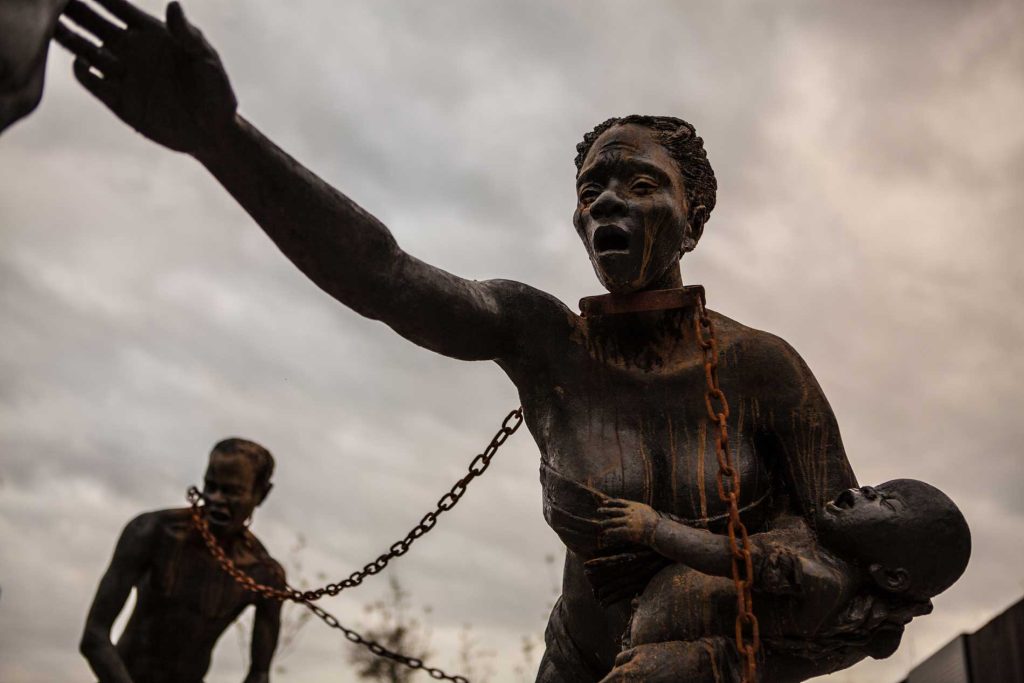
Sculpture of an enslaved mother and child by Ghanaian artist Kwame Akoto-Bamfo at the National Memorial for Peace and Justice in Montgomery, Alabama.
Human Pictures
In 1731, after an enslaved Black woman was assaulted by a French soldier for failing to obey an order, white colonists spread rumors that enslaved people were planning a revolt.618
In response, white colonists tortured the woman and eight other enslaved Black people by tying them down and slowly breaking their bones and mutilating their bodies with a large wheel—a torture method known as the breaking wheel—before killing them. Colonists displayed the enslaved peoples’ heads on stakes around New Orleans to terrorize other enslaved Black people.619
Resistance and Violent Response
Enslaved Black people in New Orleans faced constant surveillance, threats of violence, and the prospect of torture and death for defying any aspect of the slavery system—but they resisted anyway.
The largest revolt began on January 8, 1811, when enslaved Black people stormed the manor house on a sugar plantation owned by Manuel Andry, the largest enslaver in St. John the Baptist Parish.620
Although Andry survived, his son was killed, and the enslaved Black people marched into St. Charles Parish, where they killed another sugar plantation owner in their fight for freedom. As the group moved downriver toward New Orleans, other enslaved people joined them.621
White families reported the insurrection in New Orleans, where the governor assembled the city militia, ordered parish militias to patrol the banks of the Mississippi River around New Orleans, unlocked weapons stores to arm white men, and imposed a curfew. U.S. troops were dispatched to respond to the insurrection.622
On the morning of January 10, some 200 enslaved Black people on a sugar plantation were attacked by white militiamen and 40 or 45 were killed, ending the insurrection.623
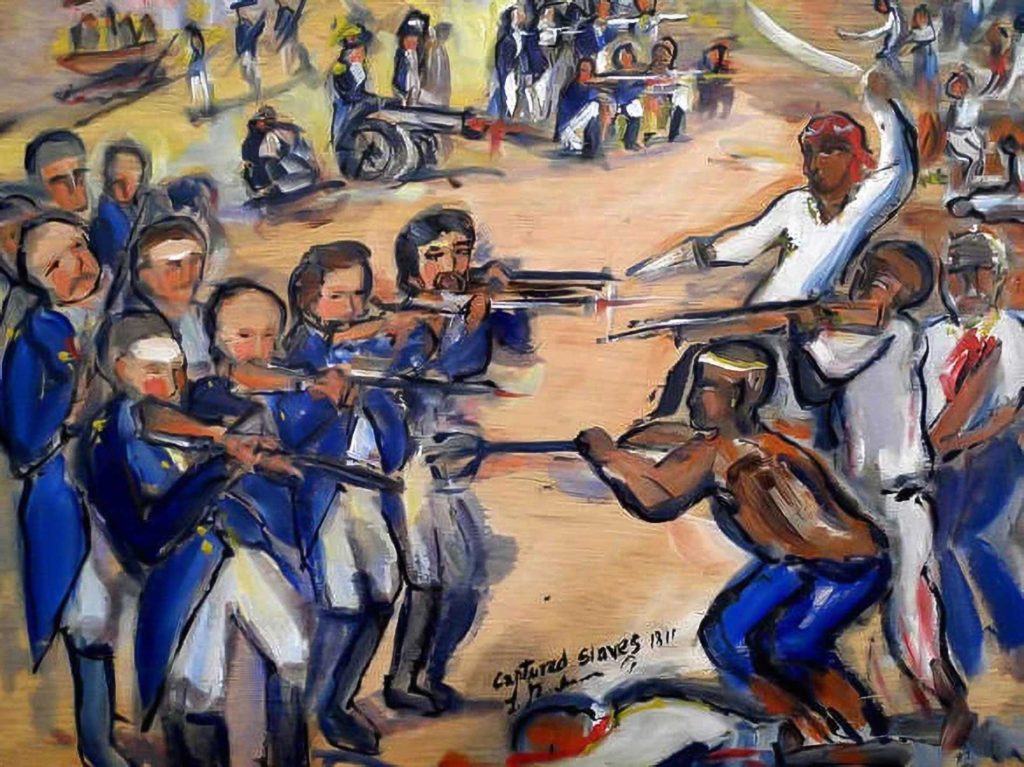
A painting of the 1811 uprising of enslaved people in Louisiana.
Lorraine Gendron
Officials executed 45 enslaved Black people over the next eight days, and dozens more Black people are believed to have been killed in and around New Orleans, an act meant to terrorize the Black population.624 Enslaved Black people accused of involvement in the revolt were captured and murdered, their corpses mutilated and their heads taken as trophies, foreshadowing the era of racial terror lynchings that defined the decades after the Civil War.625
One observer wrote that the mob would “[f]irst cut off their ears, hands and legs; then the head is severed from the body, and stuck upon a pole passed through his mouth, and carried through the city by two of his black brethren. After this was done, his head was stuck up at the upper gate of the city.”626
Several [enslaved people] were wrested from the Guards & butchered on the spot. Charles had his Hands chopped off[,] then [he was] shot in one thigh and then the other until they were both broken–then [he was] shot in the Body and before he had expired was put in a bundle of straw and roasted!627
To terrorize the Black community, parish authorities removed the heads of the enslaved Black people they had executed and displayed them on poles at regular intervals on the levee down the east bank of the Mississippi River, where they remained for months.628
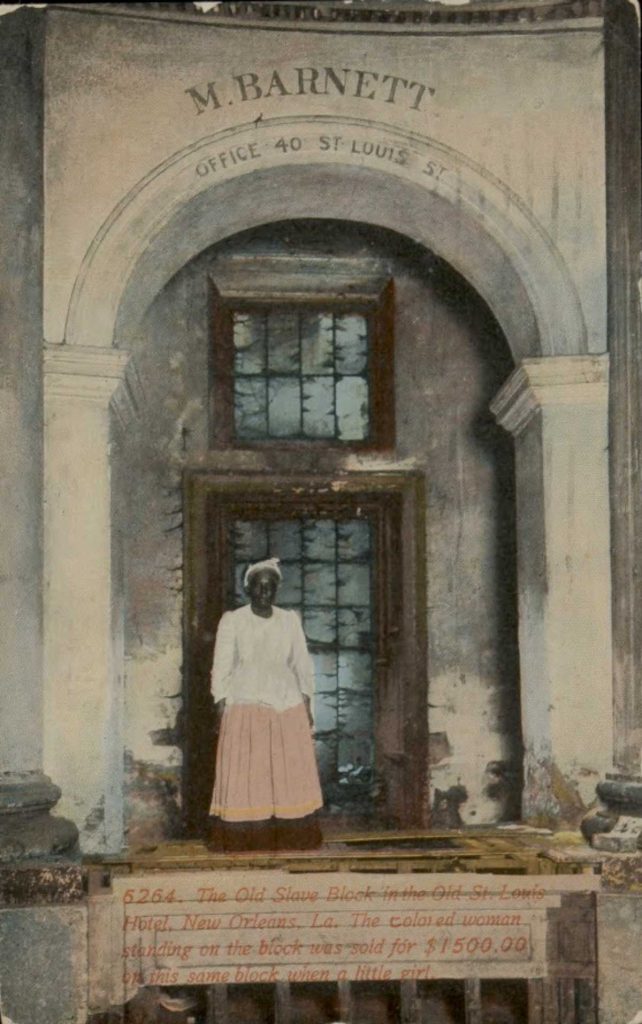
A postcard with a photo of a formerly enslaved woman standing on the auction block in New Orleans where she was sold as a child for $1,500, ca. 1907.
Wikimedia Commons
The slave trade and the labor of enslaved Black people built and rebuilt New Orleans many times over.
As the city prospered, enslaved Black people lived through brutal and violent conditions, and even after the Thirteenth Amendment abolished slavery, violence against Black women, men, and children in New Orleans escalated.
White residents committed to upholding white supremacy engaged in a decades-long campaign of racial terrorism after the Civil War. Louisiana had the nation’s third highest number of documented racial terror lynchings between 1877 and 1950, including at least 15 in New Orleans.629
Deadly violence was used to enforce segregation, restrict civil rights, prevent Black people from voting, and control New Orleans’s Black population well into the 20th century.
Chapter 13
Conclusion
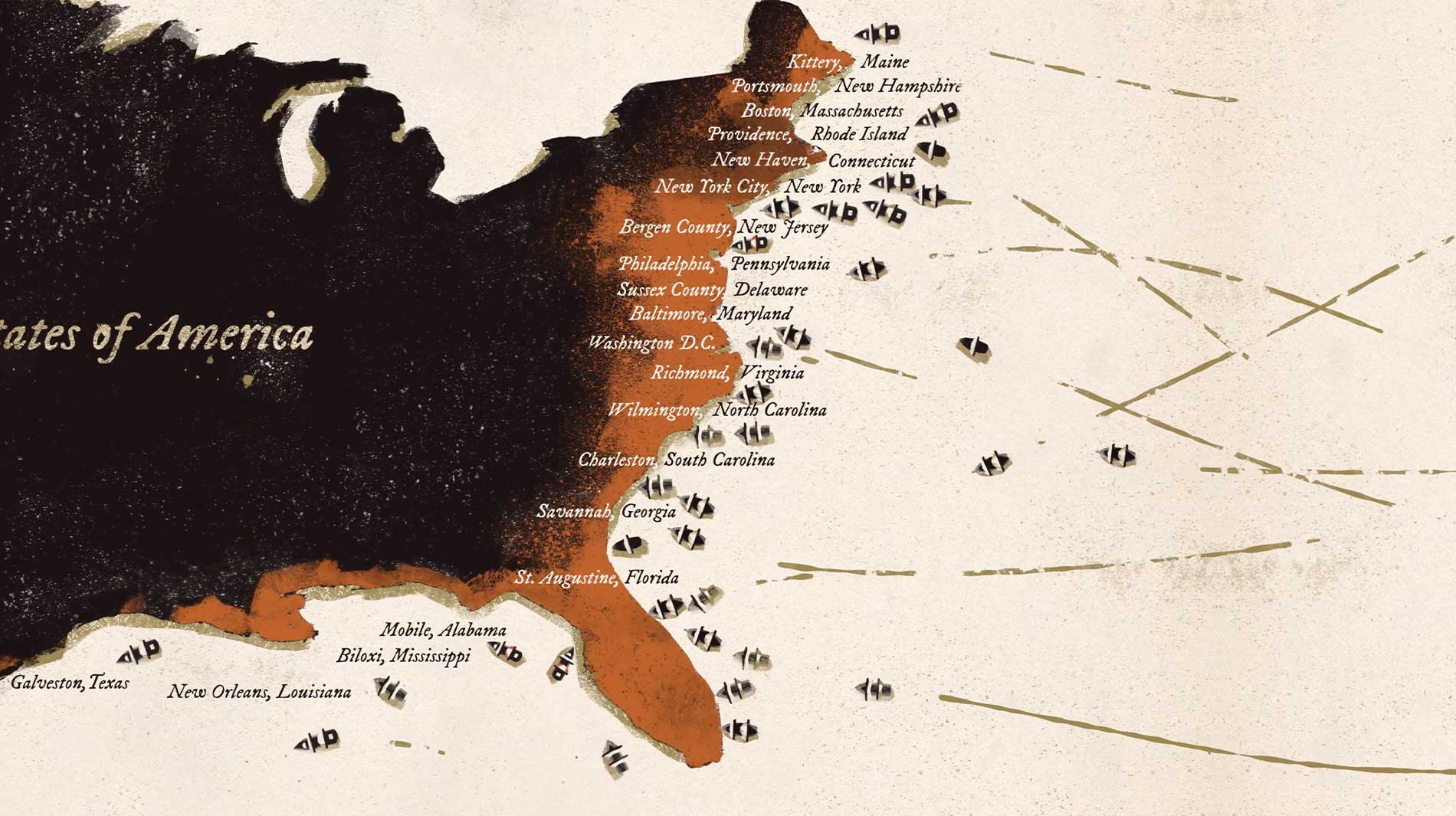
The legacy of the Transatlantic Slave Trade can still be seen across the U.S. Racial bias and discrimination are serious issues that continue to compromise equality, opportunity, and justice in our nation.
The history of enslavement in America is not well understood, making discussion about many contemporary problems difficult and polarizing. Without a more informed and thoughtful understanding of the history of race-based slavery and its impact on communities across the nation, progress on issues relating to race will be compromised.
Many communities whose past is significantly entwined with the Transatlantic Slave Trade have done little to study, acknowledge, or document this history.
This report seeks to contribute to a new era of inquiry, truth-telling, and reckoning with our nation’s painful history with hope for a more just and healthier future.
You can learn more about the work of the Equal Justice Initiative, read other reports about American history, and dig deeper into much of this content at eji.org.
We also invite readers of this report to visit us at the Legacy Museum and the National Memorial for Peace and Justice in Montgomery, Alabama. At our sites, we offer an immersive experience into much of the content presented in this report. We hope it will inspire you to contribute to building a future where we are less burdened by this difficult history that cannot be ignored.
Find more content about the Transatlantic Slave Trade—including immersive exhibits—at the Legacy Museum in Montgomery, Alabama.
Acknowledgments
This report was written, researched, and produced by the Equal Justice Initiative in Montgomery, Alabama. Dozens of EJI’s attorneys, law fellows, justice fellows, and program staff spent hundreds of hours researching, writing, and gathering and reviewing source material for the preparation of this report.
A special thanks is owed to Sia Sanneh and John Dalton for their supervision, editing, and oversight of the report and to Aaryn Urell and Claire Gelbart for layout, photo selection, and editing.
We are grateful to share this report and information with all of you.
Bryan Stevenson, Executive Director"
No comments:
Post a Comment